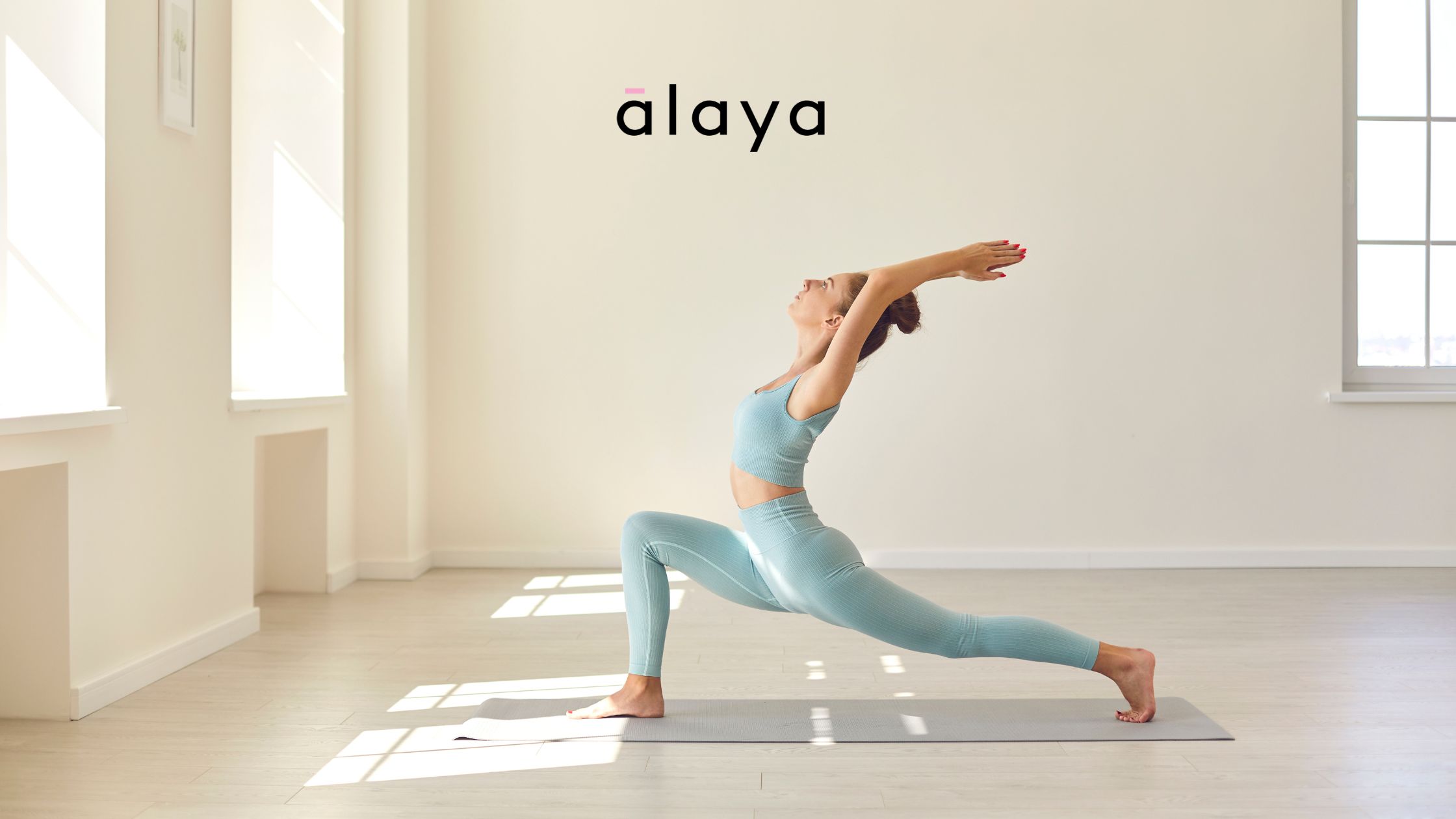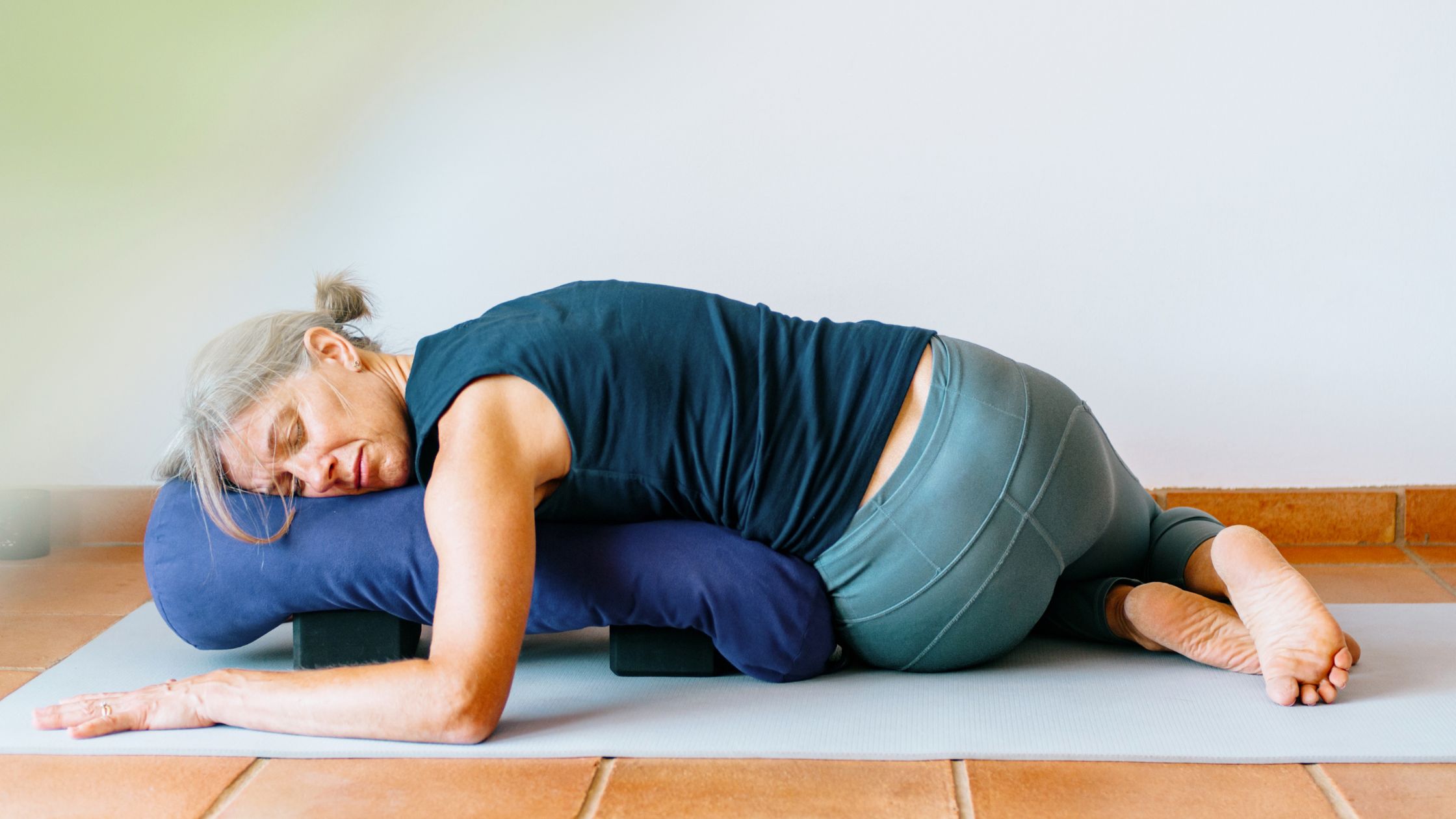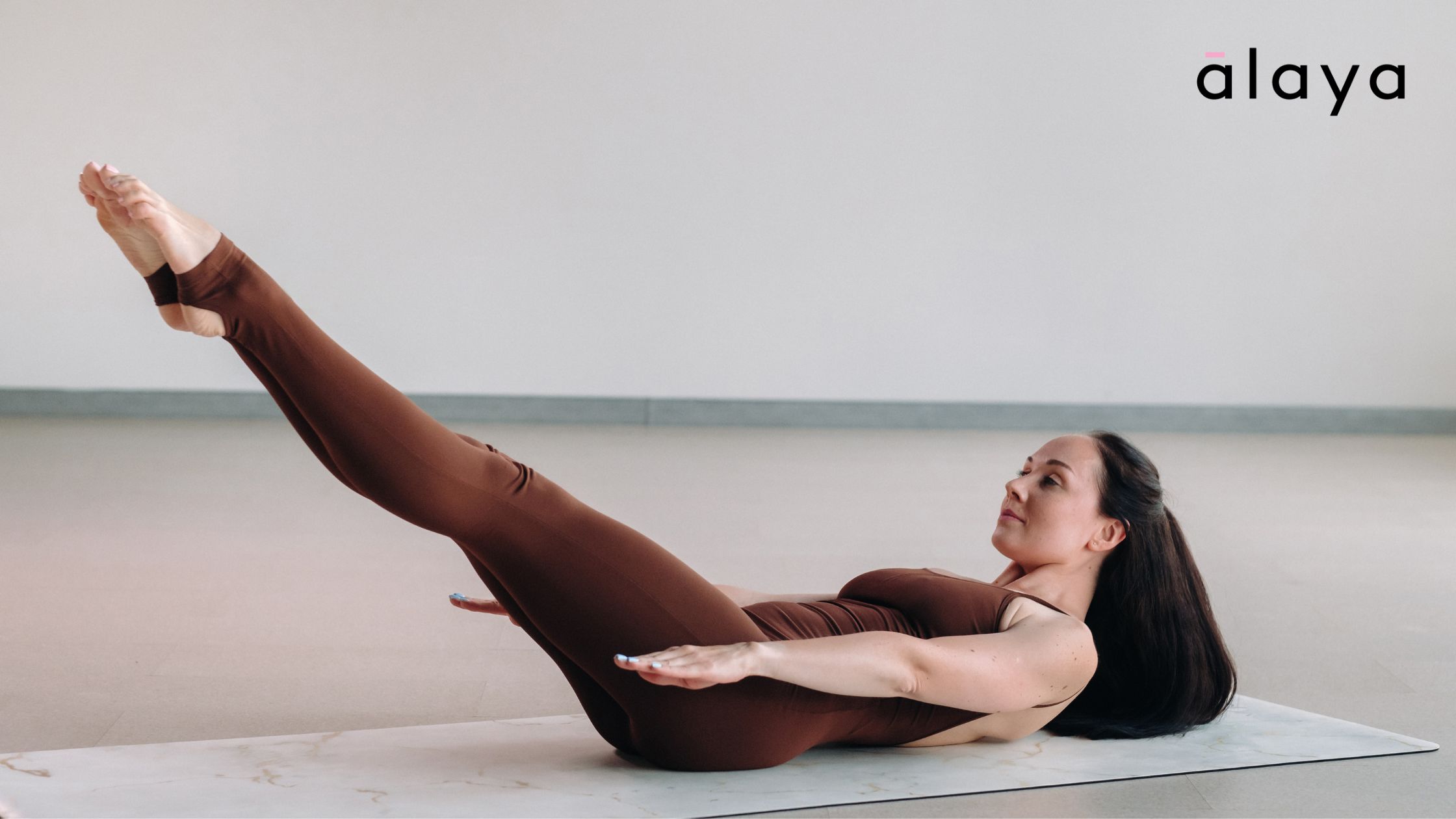Moving your body around in the morning is a fantastic way to start your day. Morning yoga wakes up the body, clears the mind, and establishes a clear tone for the day ahead. One of the best things you can do for your health every day is to do yoga in the morning. It has been proved to increase focus, support posture, and lower stress.
But for many of us, the idea of fitting in a full 60-minute class before work or school feels impossible. That’s where a 15-minute yoga sequence in the morning comes in. It’s short enough to be doable, but long enough to be helpful. And yes, 15 minutes is enough time to start getting stronger, more flexible, and more consistent.
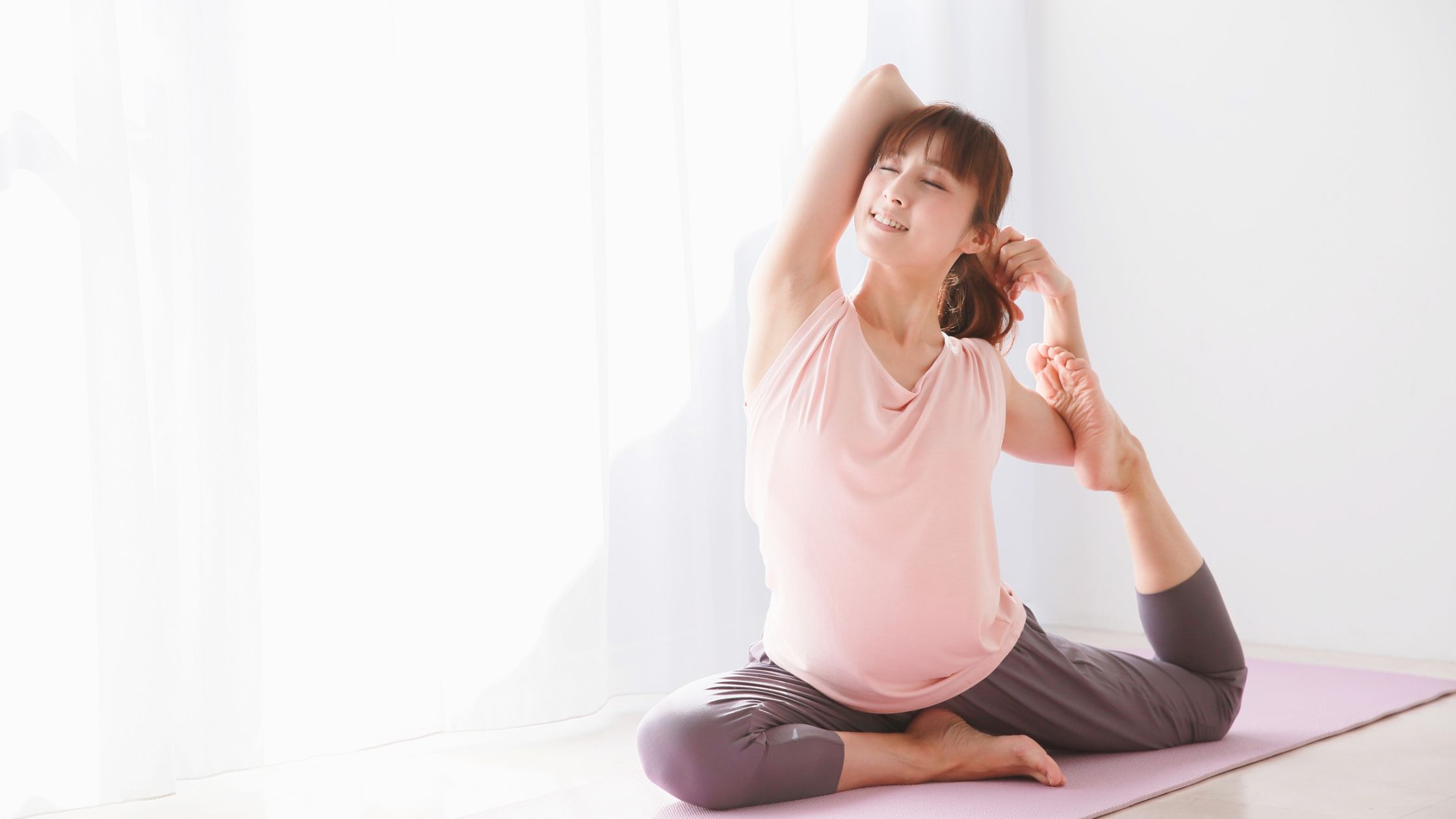
The Benefits of a Short Morning Practice
Boosts Energy and Focus
Is yoga really better than coffee? While nothing can replace your morning latte, yoga stimulates blood flow, improves oxygen circulation, and activates your nervous system in a way caffeine can’t. After just 15 minutes, most people feel more awake, energised, and centred — without the mid-morning crash.
Sets a Positive Tone for the Day
Instead of diving straight into emails, starting the day with mindful movement creates space for you. This tiny act of self-care changes the way you think, lowers your stress, and helps you see your work clearly.
Fits into Busy Schedules
One of the most common questions is: how can I fit yoga into a busy morning? A short yoga practice is easy to slot in before a shower, after breakfast, or while the kids are still getting ready. Because it only takes 15 minutes, you don’t need to wake up much earlier — making it a sustainable morning yoga habit.
Supports Posture, Mobility, and Digestion
Morning stiffness is common. A simple morning yoga routine can help your spine stay straight, loosen up your hips and shoulders, and get you in a good posture before you even sit down at your computer. Forward folds and twists also help your digestion in a gentle way, which makes your body feel lighter and more balanced all day.
Reduces Stress and Cortisol
Research shows that yoga reduces cortisol, the stress hormone often elevated in the morning. By combining breathwork with gentle yoga, you calm your nervous system, which sets you up to respond to challenges with greater ease.
Improves Sleep Quality
It might seem counterintuitive, but practising yoga in the morning can improve how you sleep at night. By moving your body early, you regulate your circadian rhythm — helping you feel naturally more awake in the morning and ready to wind down in the evening.
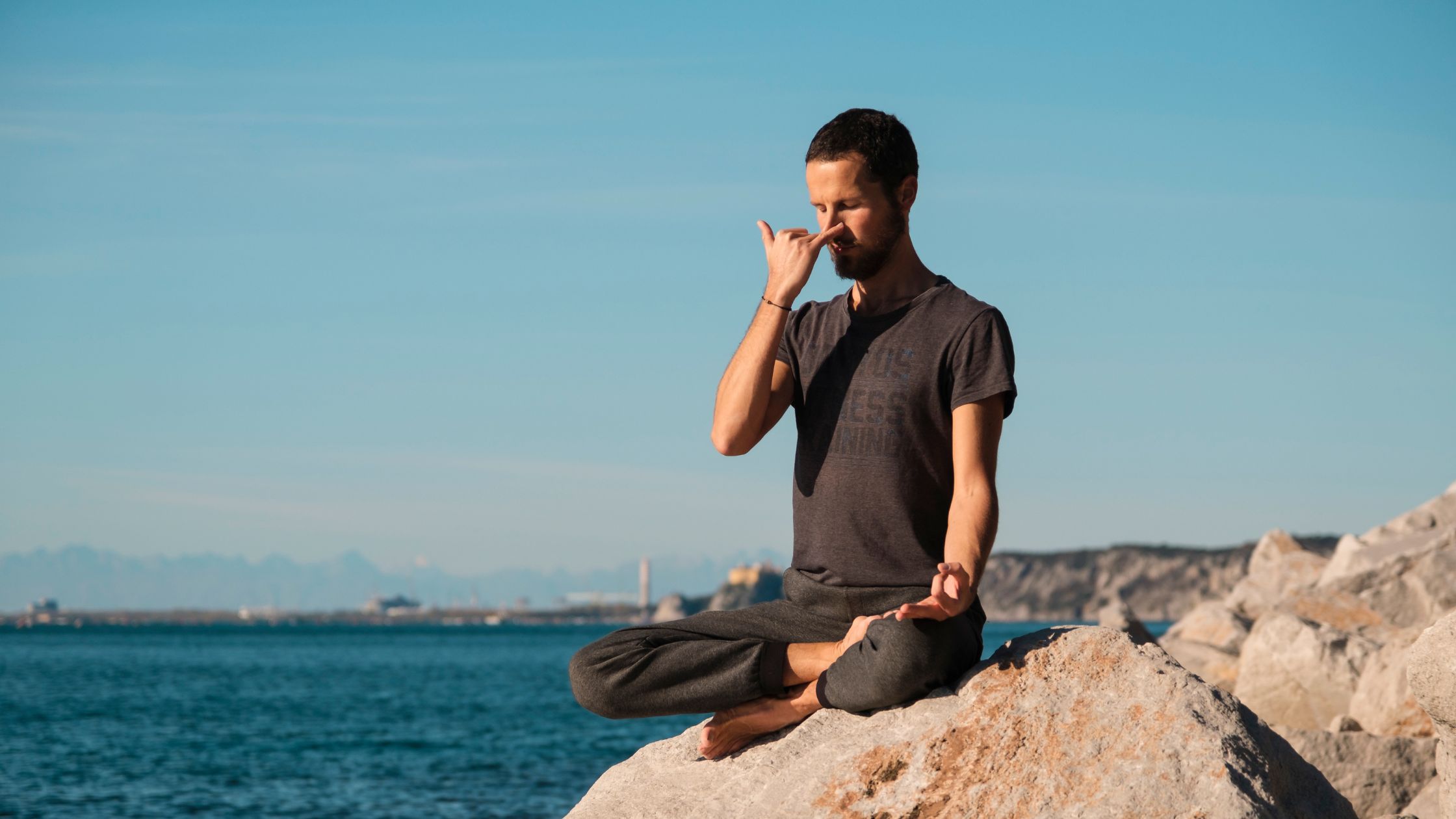
Building Your 15-Minute Morning Yoga Routine
Choose Simple, Repeatable Poses
What are the best poses for a short morning yoga routine? The key is to pick 5–7 accessible poses that you can remember without constant reference to a video.
- Cat-Cow warms the spine and connects breath with movement.
- Downward Dog lengthens the hamstrings and wakes up the shoulders.
- Warrior II builds focus, stability, and confidence.
- Seated Twist stimulates digestion and spinal health.
Make sure your sequence stays the same so that it becomes second nature, like brushing your teeth.
If you want to explore deeper practice beyond short routines, our yoga retreats in Goa offer immersive experiences with daily classes.
Include Breathwork and Gentle Movement
Breath is what turns stretching into yoga. To get from resting to doing something, start with 1–2 minutes of deep breathing, like diaphragmatic breathing. Gentle movements like shoulder rolls and side stretches get your body ready for greater postures.
End with a Moment of Stillness
Even one minute of stillness can transform your practice. Sit comfortably, close your eyes, and focus on breathing deeply. You might choose to set a daily intention (“Today, I’ll move with ease”) or simply enjoy the pause before stepping into your day.
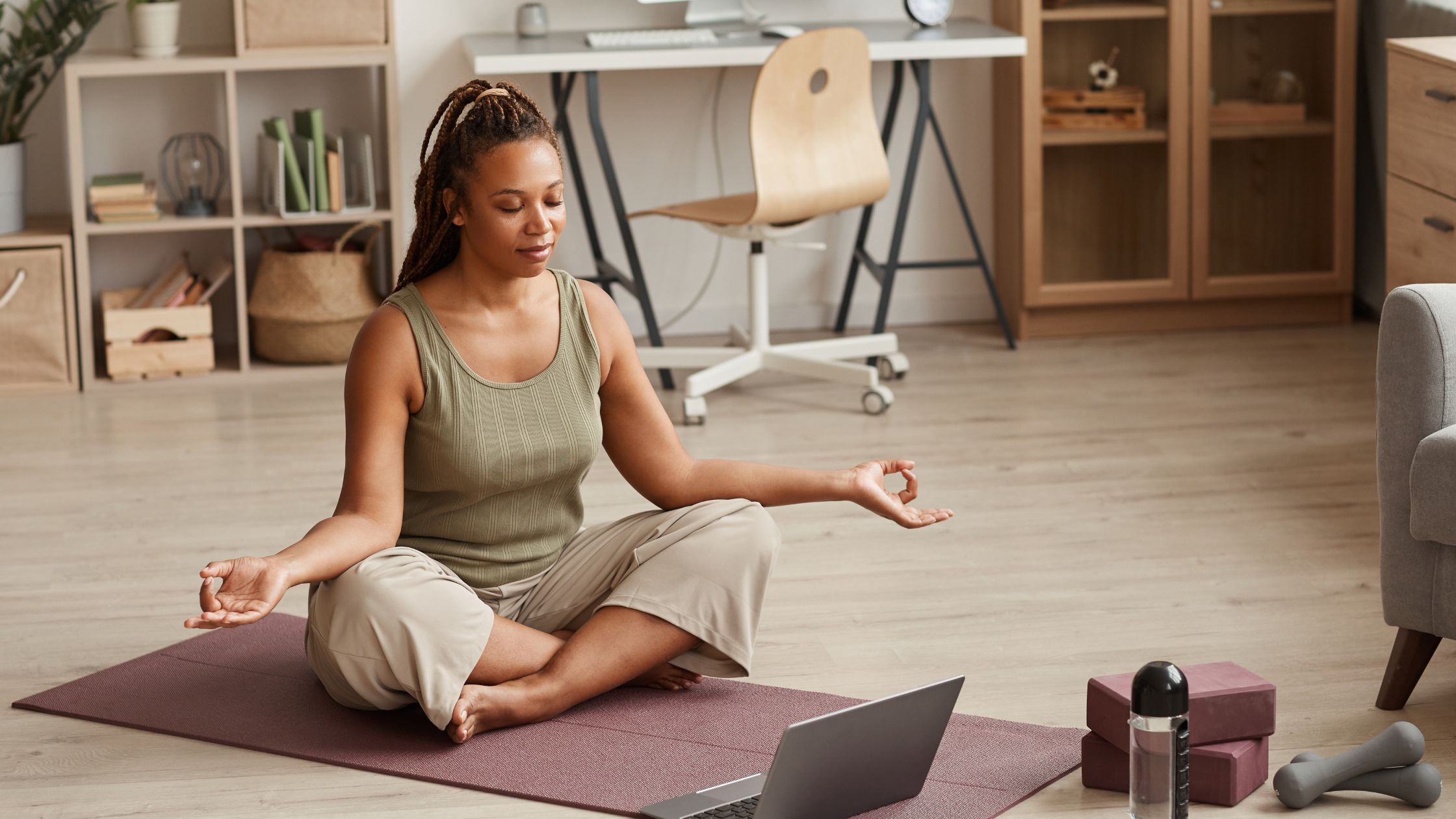
Sample 15-Minute Morning Yoga Sequence
This sequence is beginner-friendly, perfect for busy mornings, and requires only a mat!
3-Min Gentle Warm-Up
- Seated Neck Rolls (1 min) — Relieves tension built overnight.
- Cat-Cow Stretch (2 min) — Mobilises spine, shoulders, and hips while connecting breath with movement.
9-Min Flow and Poses
- Downward-Facing Dog (1 min) — Press heels toward the floor to stretch calves and hamstrings, while lengthening the spine.
- Low Lunge with Side Stretch (1 min each side) — Opens hips and side body, countering morning tightness.
- Warrior II (1 min each side) — Strengthens legs and core, improves focus, and builds stability.
- Standing Forward Fold (1 min) — Releases hamstrings and decompresses the spine.
- Seated Twist (30 sec each side) — Stimulates digestion and supports spinal mobility.
3-Min Closing Breath and Stillness
- Easy Seated Pose (2 min) — Deep breathing helps settle the nervous system.
- Gratitude Moment (1 min) — Reflect on one thing you’re thankful for, anchoring positivity into your day.
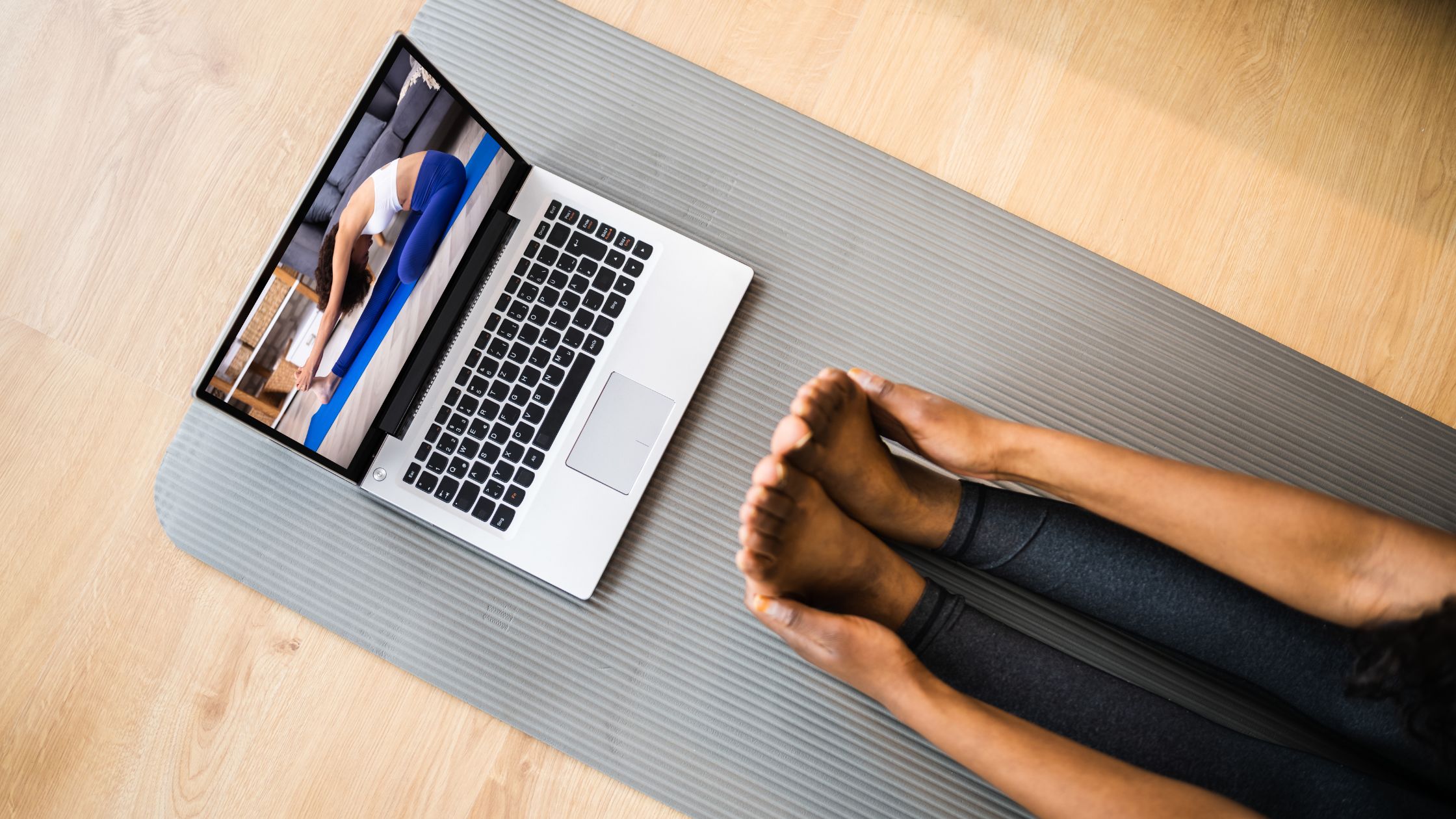
How to Make Morning Yoga a Daily Habit
Be Consistent
How can I make my morning yoga routine stick? Regularity is the best way to build habits. Pick a time each day, preferably before your first big task, so that your pattern becomes second nature.
Prepare Your Space the Night Before
Lay out your mat and water bottle before bed. By removing tiny obstacles, you reduce friction and increase the likelihood you’ll practise.
Use Habit-Stacking
Pair your practice with an existing habit: for example, unroll your mat right after brushing your teeth. Habit-stacking makes it easier to follow through.
Make It Enjoyable
Morning yoga should feel like a ritual. Play calming music, open the curtains for natural light, or light a candle. Enjoyment builds long-term consistency.
Is 15 Minutes Morning Yoga Enough?
This is one of the most common questions: can 15 minutes of yoga really make a difference? The answer is yes.
Studies suggest that even short, regular workouts can make you more flexible, improve your posture, and lift your mood. Physiotherapists and GPs generally suggest doing 10 to 15 minutes of mobility exercises every day to ease back pain, improve alignment, and stop stiffness. This shows that shorter exercises work.
Longer workouts may be better for you in the long run, but what matters most is doing them regularly, not how hard you work. A 90-minute lesson once is not as helpful as 15 minutes a day, done repeatedly.
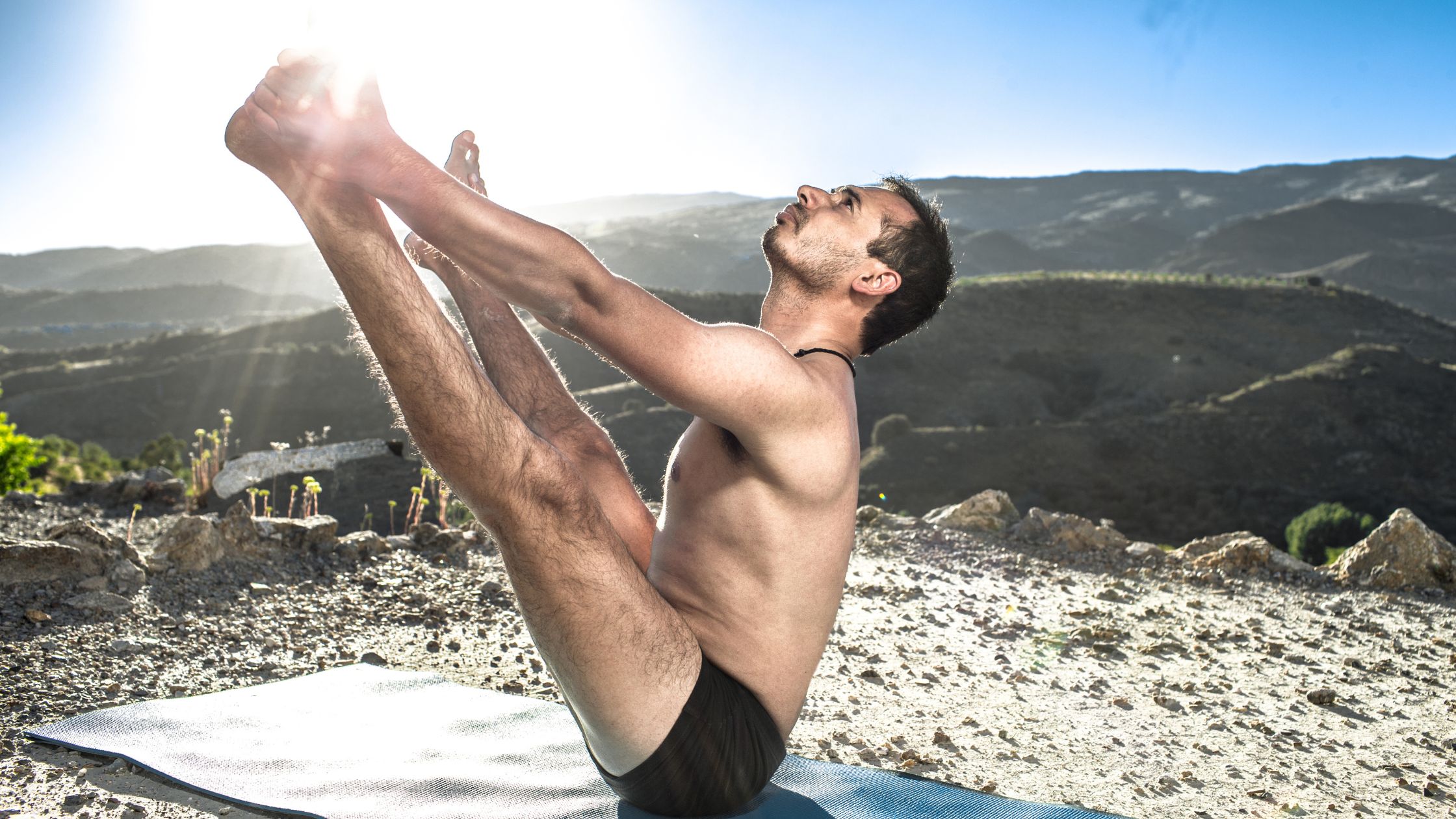
Take It Further with ālaya’s 15-Minute Morning Yoga Challenge
If you love the idea of short, powerful practices, ālaya’s 15-Min Morning Yoga Challenge makes it even easier to stay consistent.
7-Day | 15-Min Morning Yoga Challenge
A simple week of short, energising mornings to kickstart your habit. Perfect if you’re new to yoga or want a manageable reset.
30-Day | 15-Min Morning Yoga Challenge
Build a lasting routine with just 15 minutes a day for one month. This option is ideal if you’re serious about creating a sustainable morning yoga habit.
Whichever You Choose, There is a Theme for You
Every week introduces a new focus refresh, and the month as a whole is built around a unique theme — so you’ll never feel stuck in the same flow.
Both challenges are available live or on-demand. You can join at 6:55 AM with a supportive community or use 14-day playback if your schedule changes. Either way, you’ll benefit from structure, accountability, and a practice that evolves with you.
And with ālaya’s 10-day free trial, you can try the Morning Challenge risk-free.
Final Thoughts
Morning yoga doesn’t have to be long or complicated. A simple 15-minute morning yoga routine can give you more energy, improve your posture, and help you start your day with a clear mind. You may make a habit that lasts by making it regular, fun, and a part of your life.
Start small, show up regularly, and let your practice grow with you. If you’re ready to take the next step, join us at ālaya and explore the 15-Min Morning Challenge — live or through playback recording and free to try for 10 days.
Burnout isn’t just “being tired.” It’s a state of physical, mental, and emotional exhaustion caused by prolonged stress. You may feel drained, unmotivated, and unable to concentrate even after a full night’s sleep. Over time, burnout can affect not only your productivity but also your health, relationships, and overall quality of life. This is where yoga for burnout comes in — offering a safe, sustainable way to release tension, restore energy, and begin feeling balanced again.
While rest is essential, true recovery often requires more than simply “taking a break.” To restore your energy and prevent relapse, you need practices that calm your nervous system, reconnect you with your body, and rebuild resilience gently over time. That’s where yoga — particularly online yoga classes — can make a profound difference.
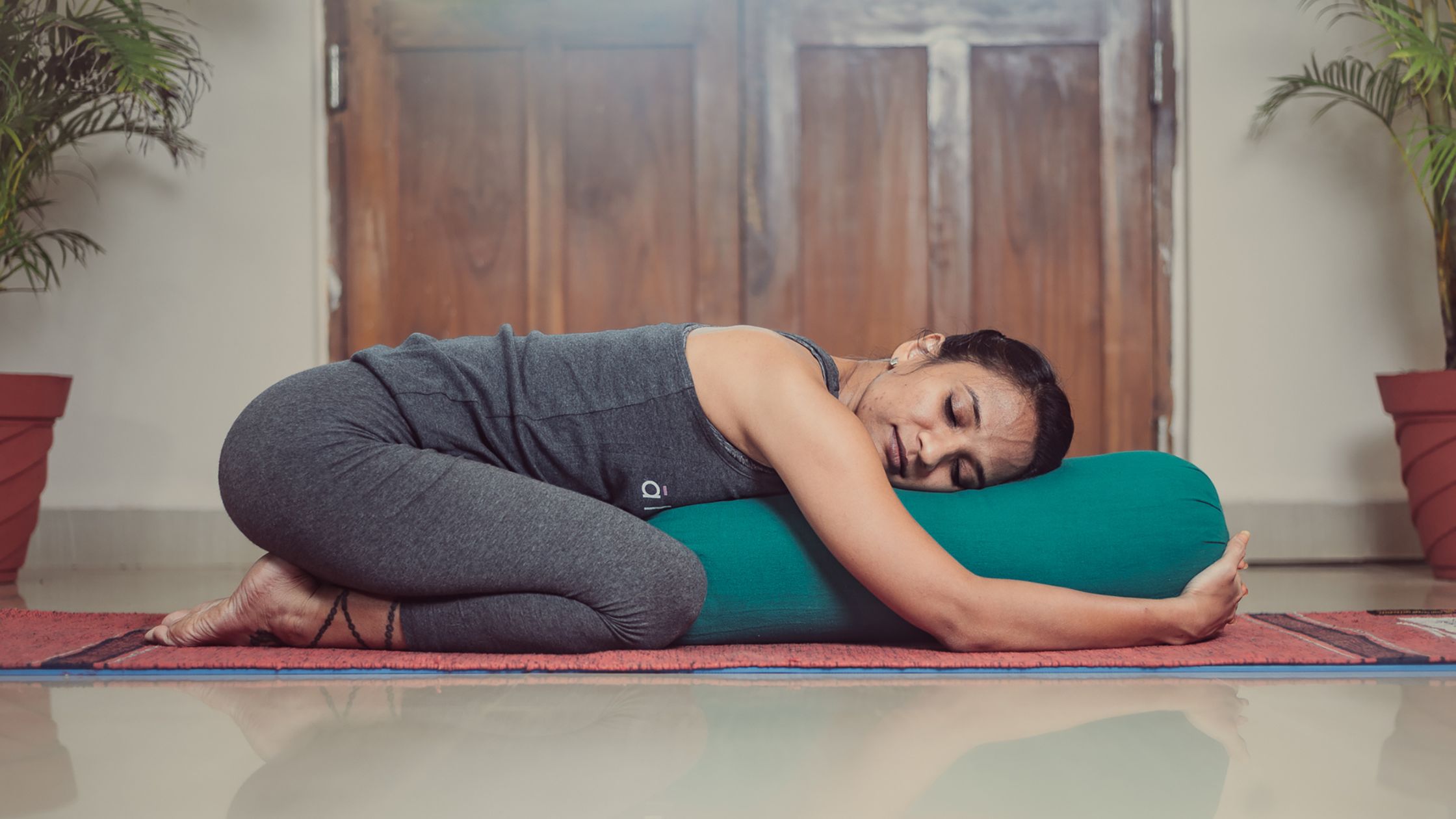
Why Yoga Works for Burnout Recovery
Calms the Nervous System
Many yoga styles use slow, mindful breathing and gentle movement, activating the parasympathetic nervous system (your body’s “rest and digest” mode). This counteracts the stress response (“fight or flight”), reducing cortisol and adrenaline while helping you feel calm, centred, and safe.
Restores Physical Energy
Burnout often leaves the body heavy and fatigued. Gentle yoga practices for burnout recovery improve circulation, release muscular tension, and restore vitality without draining your energy. Unlike high-intensity workouts, yoga supports healing rather than depleting you further.
Improves Mind-Body Awareness
When you’re burnt out, you may lose touch with your body’s signals — ignoring fatigue, skipping meals, or overriding stress. Yoga builds awareness and alignment, helping you notice early signs of imbalance so you can respond with care instead of pushing toward another burnout cycle.
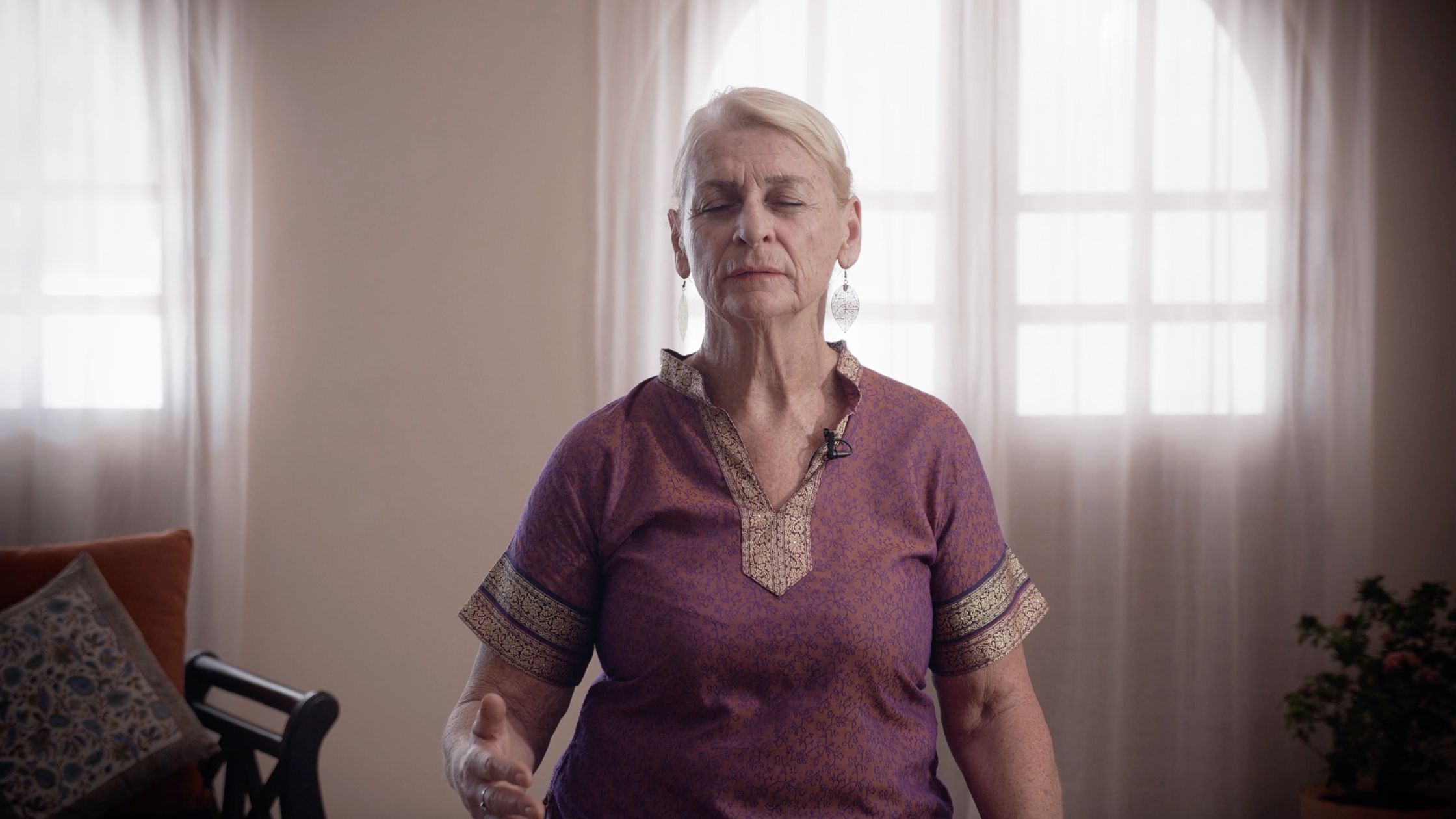
The Best Yoga Practices for Burnout
1. Gentle Movement (Yin, Restorative, Slow Flow)
High-intensity exercise can worsen exhaustion. Instead, practices like Yin Yoga, Restorative Yoga, and Slow Flow support deep release and nervous system reset. These styles emphasise mobility, posture, and stillness, making them perfect for burnout recovery.
2. Breathwork for Nervous System Reset
Breath is one of the fastest ways to regulate the nervous system. Simple techniques such as diaphragmatic breathing, box breathing, or Nadi Shodhana (alternate nostril breathing) lower heart rate, reduce anxiety, and restore balance. Many online yoga classes in Ireland include short guided breathwork practices you can follow at home.
3. Mindfulness and Meditation
Even five minutes of meditation can create space for rest and clarity. Guided body scans, visualisations, or mindfulness meditations reduce mental chatter and support emotional regulation. Many students find combining yoga with meditation offers a holistic approach to burnout recovery.
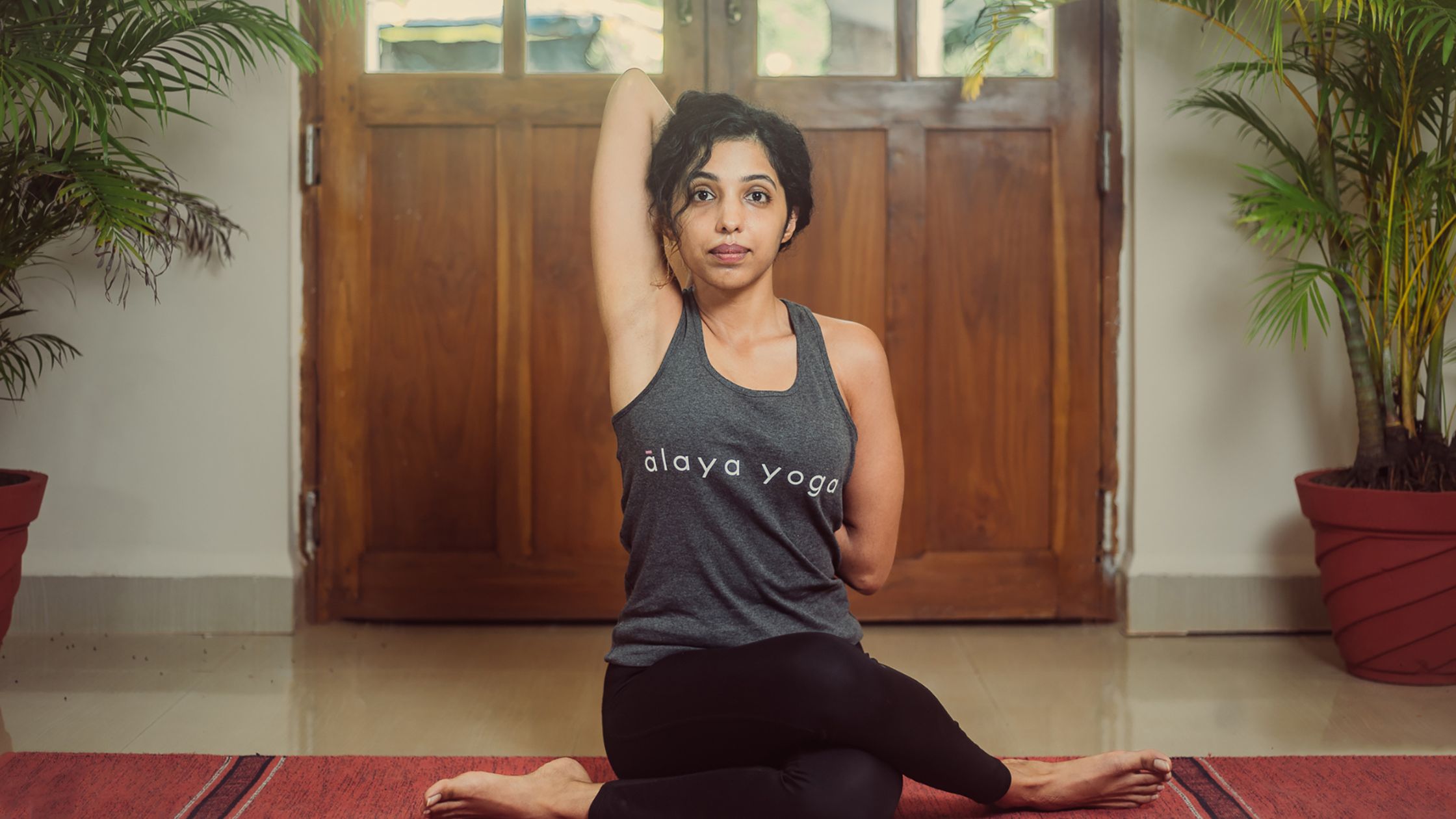
How to Start Without Overwhelming Yourself
Begin with Short, Accessible Sessions
When you’re depleted, consistency matters more than duration. Start with 10–15 minutes of Yin, Restorative, or gentle breathwork. Most online yoga platforms offer classes filtered by length, so you can choose what fits your energy level.
Prioritise Rest Over Intensity
Avoid the temptation to “get back to normal” too quickly. Burnout recovery requires patience. Instead of pushing through, select classes that leave you refreshed, not drained.
Create a Consistent, Nurturing Routine
Two to three short sessions per week can create noticeable improvements in mood, energy, and focus. Over time, as your energy builds, you can explore longer or more active classes such as Vinyasa or Pilates.
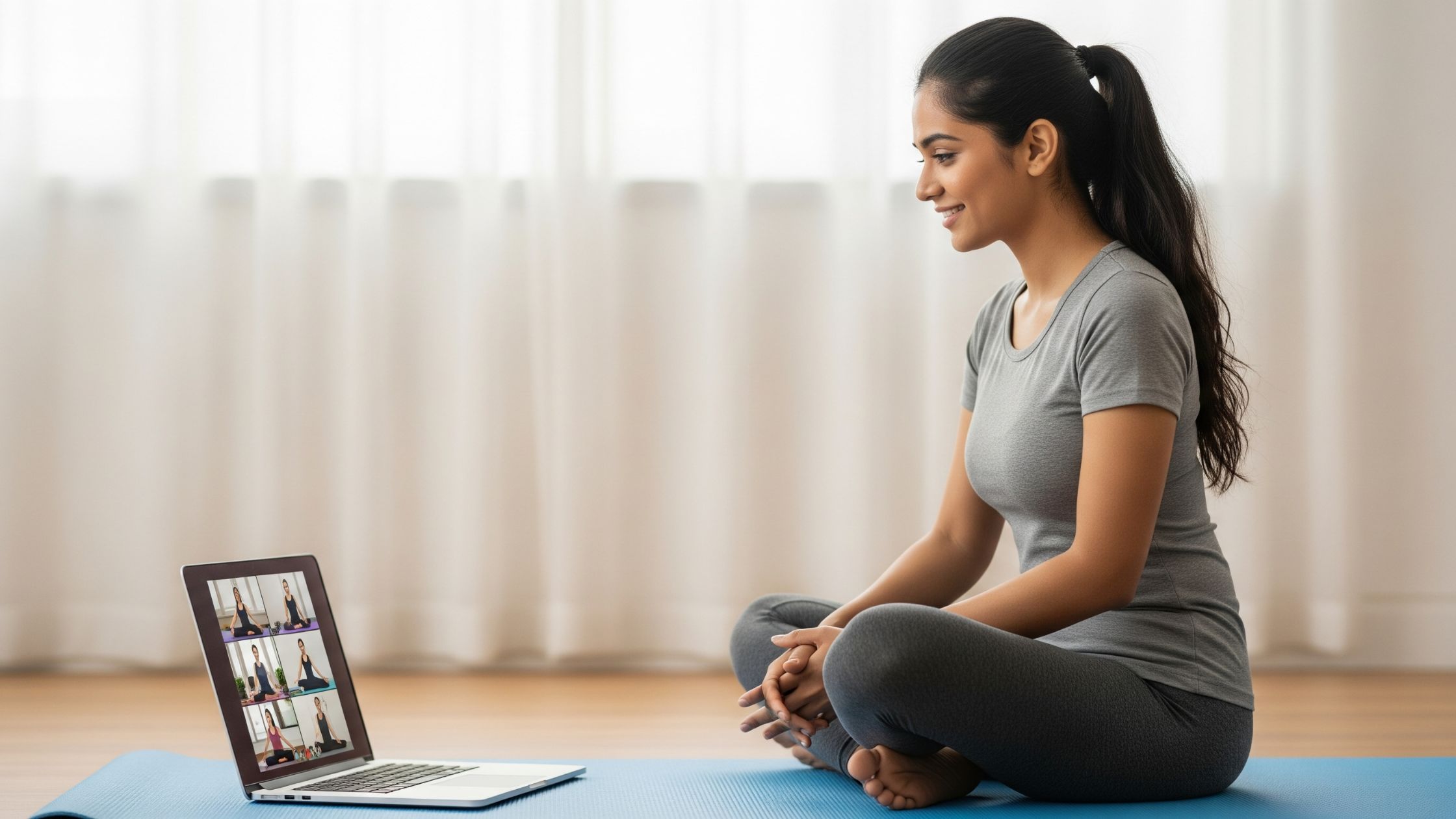
How Online Yoga Classes Support Burnout Recovery
Flexibility Meets Consistency
With online yoga classes, you can practise anytime, anywhere — at home, in the office, or even while travelling. This flexibility helps you maintain consistency, one of the most important factors in long-term recovery.
Variety of Practices in One Place
From Yin and Restorative to strength training Pilates and guided meditation, online platforms like ālaya give you access to a wide range of classes. That means you can tailor your practice based on your energy levels and emotional needs each day.
Expert Guidance from Certified Instructors
Practising with a qualified instructor ensures proper alignment and safe modifications. Many yoga instructors in Ireland, Cork, and the UK integrate physiotherapist-informed approaches, making online yoga safe even if you’re recovering from stress-related physical symptoms.
Community & Accountability
Live online classes provide the sense of belonging and accountability that can be missing when you’re burnt out and isolated. At ālaya, you can join live challenges or access 14-day playback for extra flexibility.
Recover with ālaya’s Online Classes
Burnout recovery isn’t about doing more — it’s about doing what truly helps. At ālaya, we design classes with your whole wellbeing in mind:
- Gentle & Restorative Options On-Demand
From Yin and Restorative Yoga to breathwork and mindfulness practices, our online library is crafted to calm, restore, and nurture. - Live Classes & Playback
Join weekly live classes for accountability or practise anytime with 14-day playback access. - Certified Instructors, Real Support
Our team of certified yoga and Pilates instructors ensures every class is safe, effective, and supportive for all levels. - Free 10-Day Trial
Start today with a 10-day free trial and explore the full range of classes — from yoga for burnout recovery to energising Pilates and mindful meditation.
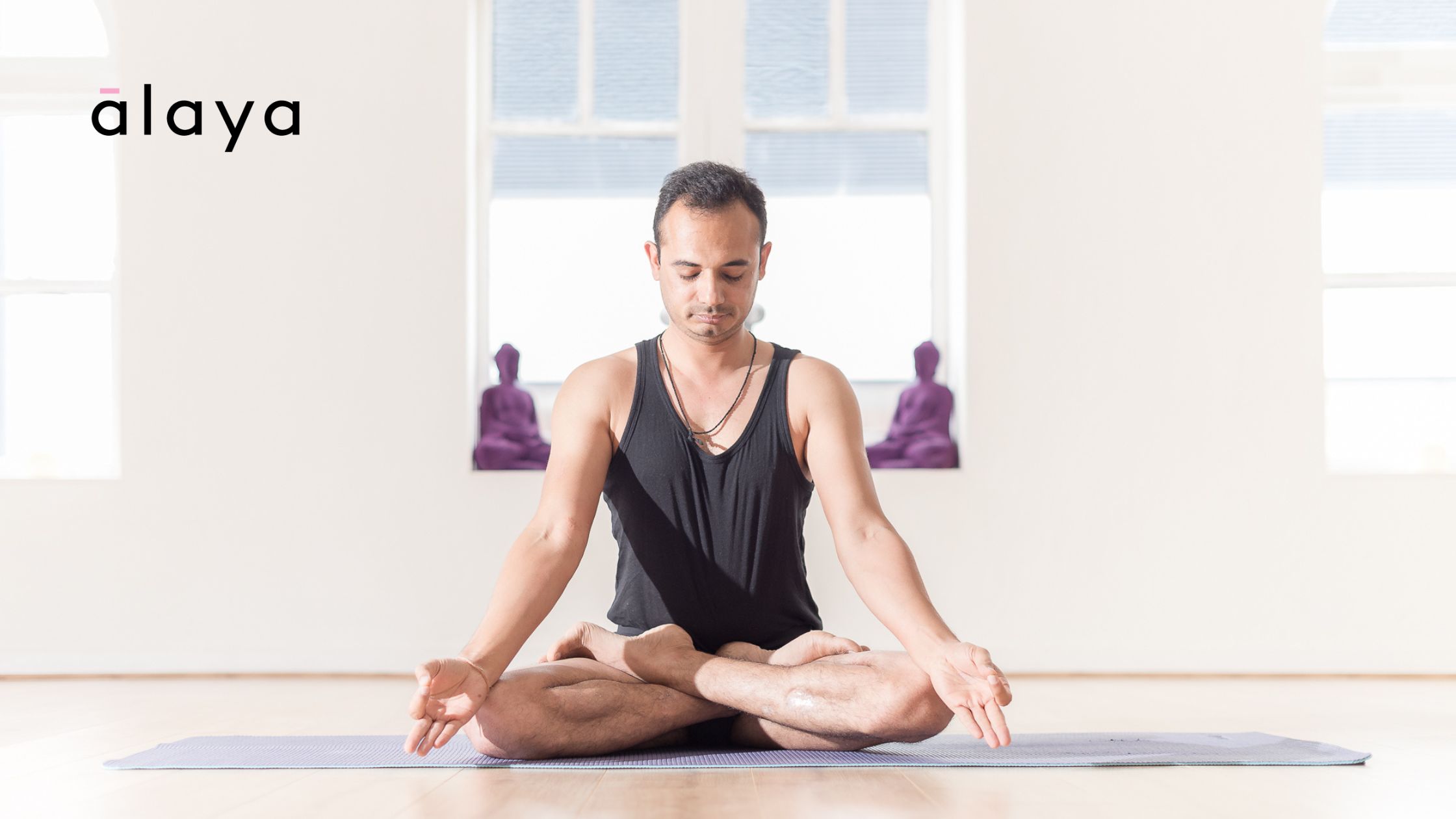
Final Thoughts: Yoga for Burnout
Burnout recovery isn’t about “bouncing back” overnight — it’s about creating a sustainable path back to balance. Yoga for burnout recovery offers one of the most effective ways to restore energy, calm your nervous system, and rebuild resilience gently.
Whether you’re in Cork, Dublin, London, or practising from anywhere in the UK or beyond, online yoga makes it easier to integrate consistent, supportive practice into your daily life. With just a mat, a few minutes, and the right guidance, you can begin to feel more like yourself again.
Take the first step today. Join ālaya’s online yoga classes and experience how slowing down can actually help you move forward.
Common Questions About Yoga for Burnout (FAQs)
Q: Can yoga really help with burnout recovery?
Yes. Research and clinical practice show yoga reduces stress hormones, improves sleep, and restores balance to the nervous system — all crucial for burnout recovery.
Q: What’s the best style of yoga for burnout?
Gentle styles like Yin, Restorative, and Slow Flow are ideal. Breathwork and meditation practices also directly calm the nervous system.
Q: How often should I practise yoga to see results?
Even 2–3 short sessions per week can bring noticeable improvements in mood and energy. For lasting benefits, consistency is more important than intensity.
Q: Can I do online yoga if I’m a beginner?
Absolutely. Most online yoga classes for beginners include step-by-step guidance, posture cues, and modifications. No previous experience required.
Q: Do I need special equipment?
Just a mat. Optional props like cushions or blankets can make restorative poses more comfortable.
Q: Are there free trial options for online yoga?
Yes. At ālaya, you can start with a 10-day free trial that gives you unlimited access to yoga, Pilates, and meditation classes online.
Q: Can yoga help with burnout-related back pain?
Yes. Gentle stretches and alignment-focused practices can ease back and shoulder tension, especially when combined with physiotherapist-approved modifications.
Pilates is more than a good workout — it’s a practice designed to strengthen your core, improve your posture, and build mobility in a way that feels sustainable and supportive. In the past, joining a Pilates class meant finding a local studio and committing to fixed schedules. Today, online Pilates classes bring qualified instructors, tailored workouts, and real results directly to your home.
Whether you’re a beginner curious about mat Pilates, someone recovering from injury with GP or physiotherapist guidance, or an experienced practitioner exploring reformer-style progressions, online classes give you flexibility without sacrificing quality. In this guide, we’ll explore everything you need to know: the benefits, how to choose the right class, what equipment you need, how live sessions work, and why consistency matters.
Why Choose Online Pilates Classes?
The most obvious benefit is convenience. With online Pilates, there’s no commute, no rushing to a studio, and no limits based on location. You can practise in your living room, hotel room, or even your garden. All you need is a mat and internet access.
Online Pilates also makes it easier to stay consistent. Instead of missing classes due to traffic or scheduling conflicts, you can join live challenges at set times or catch the playback on-demand. That flexibility helps you build rhythm, one of the biggest predictors of lasting results.
Another reason people choose online Pilates is variety. You can access hundreds of different classes — from quick 10-minute sessions to full 60-minute workouts — taught by certified instructors across the world. You get exposure to multiple teaching styles, focus areas (like posture, mobility, or strength training), and class levels without being tied to one physical studio.
And finally, the cost. Online Pilates memberships are usually far more affordable than in-person packages. At ālaya, for example, you can access unlimited live and on-demand classes with a free 10-day trial — making it a risk-free way to start.
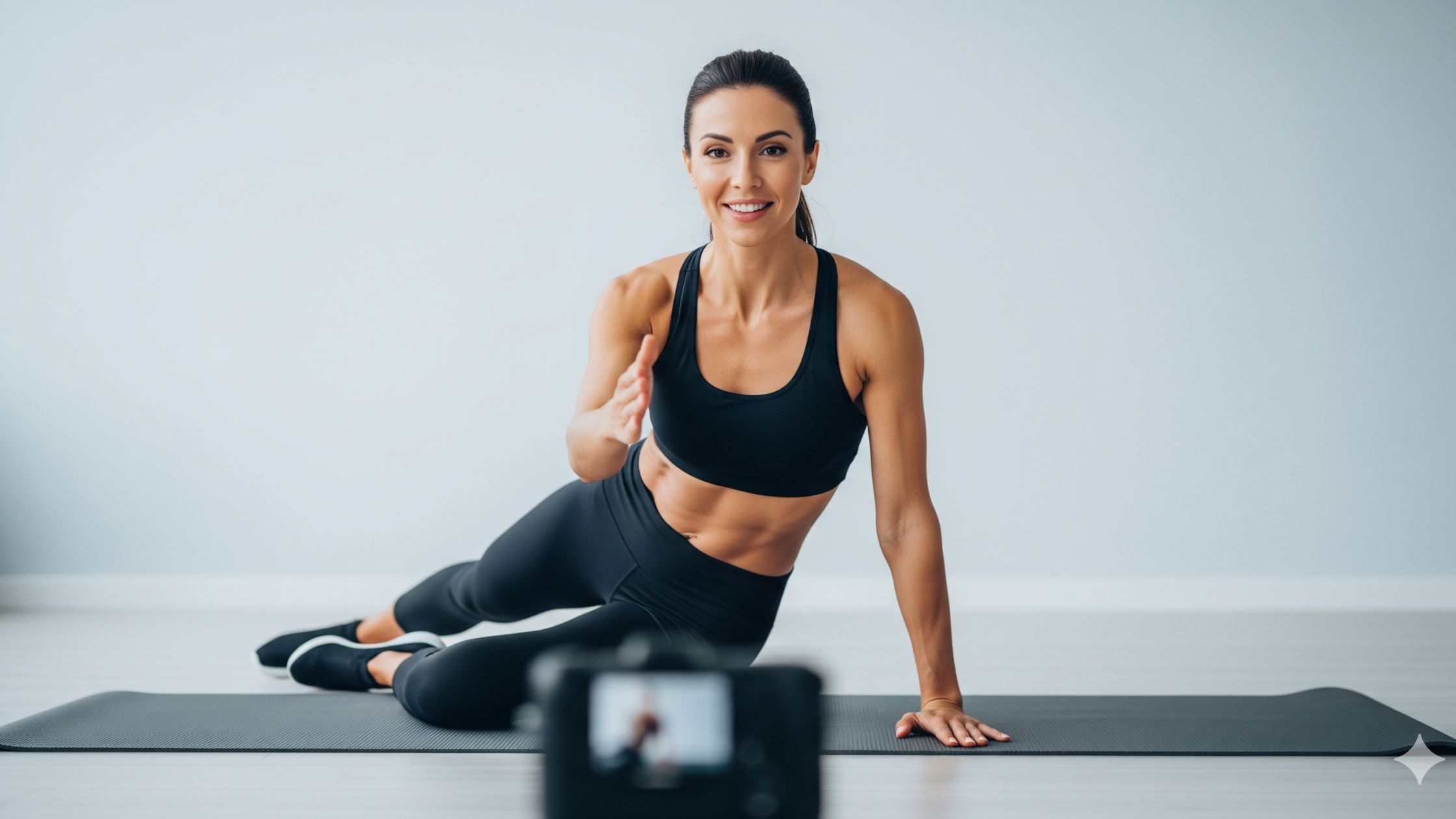
The Benefits of Online Pilates Practice
Core Strength and Posture
Pilates is renowned for building deep core strength, which in turn supports better posture. By practising regularly, you’ll find it easier to sit, stand, and move with alignment — reducing stress on your back and shoulders.
Low-Impact, High Results
Unlike high-impact workouts that can strain joints, Pilates provides controlled, low-impact movements that strengthen without damage. This makes it suitable for all ages and fitness levels, and particularly helpful if your GP has recommended low-impact exercise.
Recovery and Pain Relief
Pilates is widely used by physiotherapists for injury recovery and back pain management. Online classes often include guided modifications, ensuring you can adapt the exercises to your current ability while still progressing.
Mobility and Flexibility
Pilates isn’t just about strength; it’s about balance and fluidity. Online classes give you the chance to improve mobility gently, helping you feel looser and lighter in everyday movement.
Mental Benefits
Because Pilates requires focus on breath and alignment, it doubles as a mindfulness practice. Many people find that regular Pilates improves mood, reduces stress, and creates a sense of grounded consistency.

Choosing the Right Online Pilates Class for Your Level
One of the most common questions is: how do I know which class is right for me? Online platforms make it easy to filter classes by level, but here are some general tips.
- Beginners: Start with mat Pilates. Look for classes that emphasise alignment, breathwork, and gentle modifications. These will help you build a foundation safely.
- Intermediate: Once you’re comfortable, progress into classes that add strength training, longer holds, or flow sequences. Expect more challenge for core strength and stability.
- Advanced: Explore reformer-style workouts (sometimes adapted with props at home) and classes that combine Pilates with yoga or mobility drills. These keep your practice dynamic.
Also consider whether you prefer live classes (for accountability and interaction) or on-demand (for complete flexibility). Platforms like ālaya offer both, plus 14-day playback so you don’t miss out.
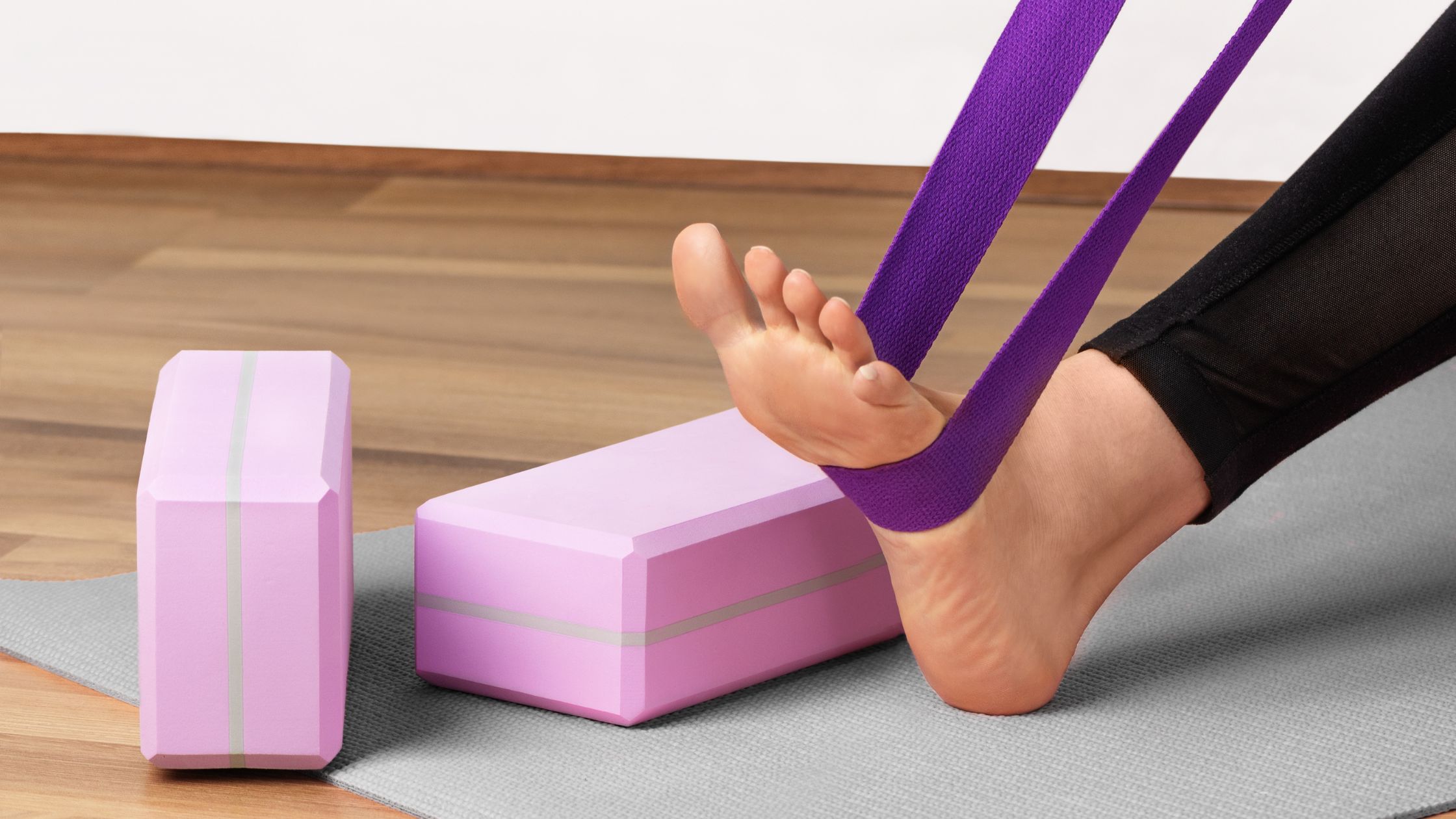
What Equipment Do You Need for Online Pilates?
The beauty of online Pilates is that you can begin with very little.
- Mat: The only essential. A good-quality Pilates or yoga mat provides comfort and stability.
- Props (optional): Resistance bands, light weights, or blocks can add intensity or assist alignment. Many instructors suggest household substitutes (like a towel or cushion) if you don’t own equipment.
- Reformer (optional): Reformer Pilates traditionally uses a studio machine, but some online classes adapt reformer-style movements for the mat. If you do have access to a reformer at home, you can find specialised online classes too.
The key is to start simple. You don’t need an expensive setup — just enough space to stretch out and move comfortably.
What to Expect in Your First Online Pilates Class
Your first class might feel a little intimidating, but most online Pilates workouts are designed to welcome beginners. Here’s what to expect:
- Warm-Up: Gentle mobility and breathing exercises to prepare the body.
- Main Sequence: Core-focused movements combined with stretches and controlled strength training. Expect lots of cues around posture and alignment.
- Modifications: Certified instructors will usually offer “little bit easier” or “little bit harder” options so you can adapt.
- Cool Down: Relaxing stretches to finish.
Remember, Pilates is about quality over quantity. Don’t worry if you can’t complete every repetition — just focus on alignment and consistency.
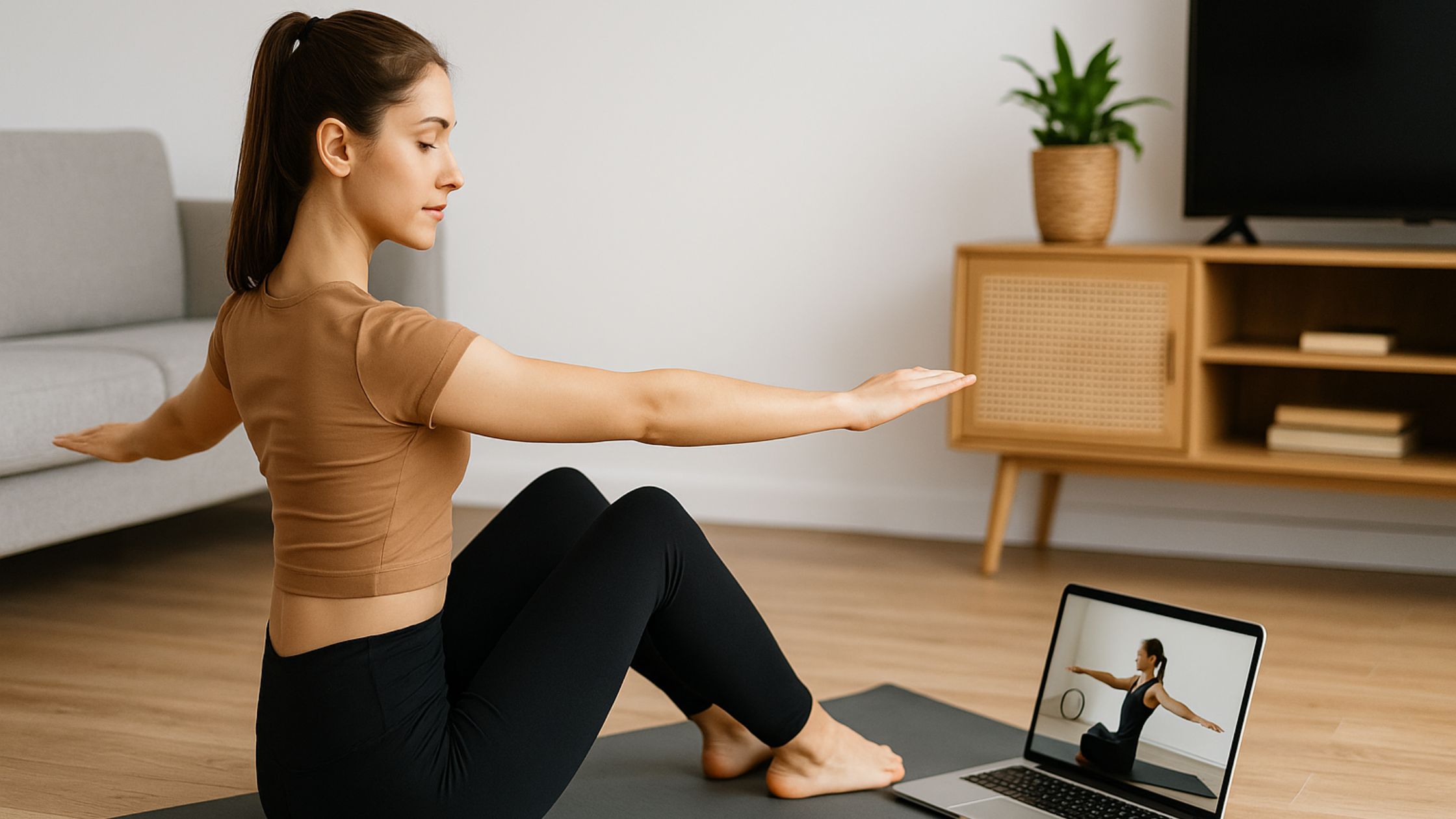
How Online Pilates Classes Work (Live vs On-Demand)
Live Classes
These mimic the studio experience. You log in at a set time, practise alongside others, and sometimes interact with the instructor in real time. This creates accountability and community energy — helping you stay motivated.
On-Demand Classes
Perfect if your schedule is unpredictable. You can choose from a library of pre-recorded sessions — ranging from 10-minute quick fixes to full-length workouts. Platforms like ālaya also offer 14-day playback of live classes, blending flexibility with structure.
The best approach is often to combine both: live sessions for energy and accountability, and on-demand for consistency when life gets busy.
How Often Should You Practise Online Pilates to See Results?
Pilates is about building strength gradually, not overnight. For beginners, 2–3 sessions per week is enough to notice improvements in posture and core strength within a month.
If you’re aiming for faster progress — for example, to support other sports, improve mobility, or recover from injury — you might practise 4–5 times per week, alternating between lighter and stronger sessions.
The secret is consistency. Even shorter classes done regularly will deliver better results than occasional long workouts. Online Pilates makes that easier by fitting into your lifestyle.
Certified and Qualified Instructors Online
A major concern for many beginners is whether online instructors are truly qualified. With ālaya and similar platforms, the answer is yes: all classes are taught by certified Pilates instructors with extensive training.
This matters because proper guidance reduces injury risk and ensures you’re working in correct alignment. Instructors also understand how to offer modifications, progressions, and physiotherapist-approved cues for different bodies.
If you’re recovering from injury or under GP advice, knowing your instructor is certified provides peace of mind that your practice is both safe and effective.
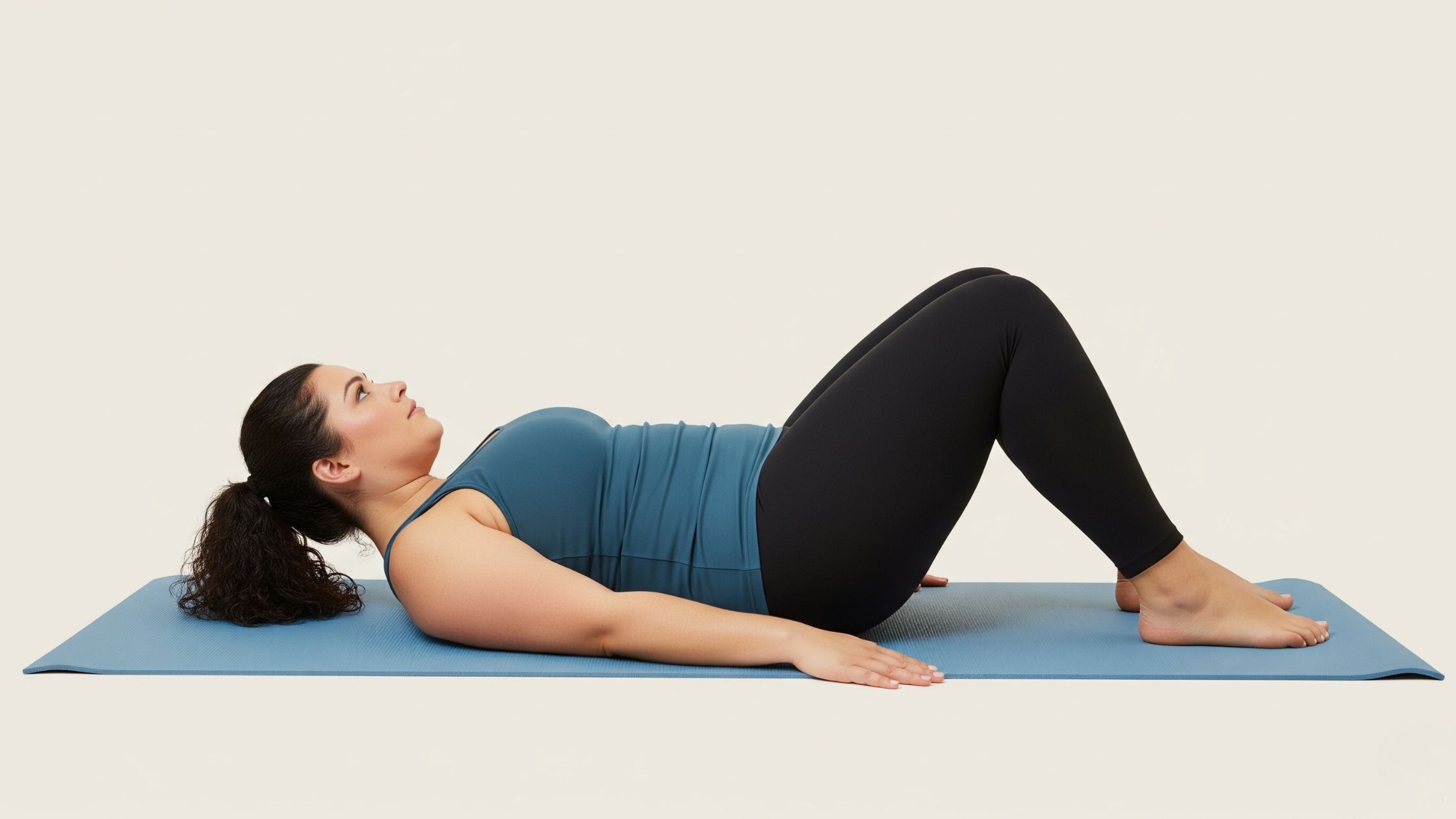
Online Pilates for Specific Goals
Pilates is adaptable. Depending on your focus, you can tailor your practice:
- Core Strength: Focus on targeted abdominal and stability sequences.
- Mobility & Posture: Choose classes that emphasise spinal alignment and shoulder opening.
- Recovery & GP Recommendations: Gentle mat classes with modifications, especially beneficial if your physiotherapist has suggested low-impact strengthening.
- Stress Relief & Balance: Combine Pilates with yoga or meditation offerings for a holistic approach.
Having access to such variety online means you can shift focus week by week depending on how your body feels.
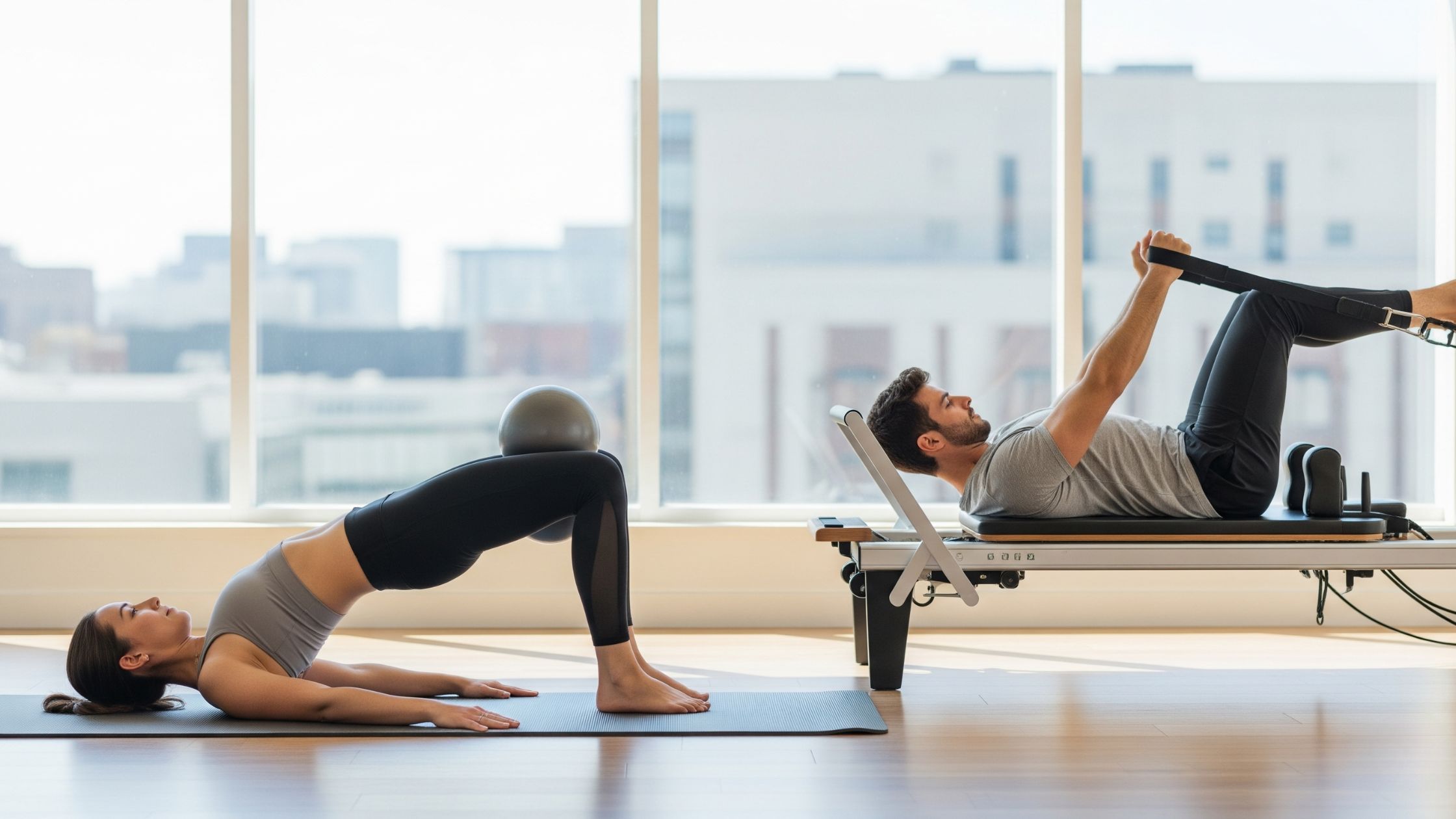
Mat vs Reformer in Online Pilates Classes
Both styles have their place, and many online platforms now include options for both.
- Mat Pilates: The foundation of all Pilates, focusing on bodyweight strength, mobility, and alignment. Perfect for beginners and requires only a mat.
- Reformer Pilates: Traditionally studio-based, using a spring-loaded machine. Some online classes replicate reformer principles with props or offer guidance for home machines.
If you’re new, start with mat classes. As you gain strength and consistency, you can experiment with reformer-style workouts or even invest in a home reformer if your space and budget allow. Learn more about the differences between Mat and Reformer Pilates here.
Getting Started with Online Pilates Today
Starting your Pilates journey is simpler than you think:
- Set up your space — a quiet area with a mat and enough room to stretch.
- Choose your class — begin with a beginner-friendly mat Pilates session.
- Commit to consistency — aim for 2–3 sessions weekly to build rhythm.
- Listen to your body — use modifications when needed, focus on alignment.
- Enjoy the journey — Pilates is about progress, not perfection.
With platforms like ālaya, you can begin with a free 10-day trial. This gives you access to live challenges, on-demand classes, and playback flexibility — all taught by certified Pilates instructors who will guide you every step of the way.
Final Thoughts
Online Pilates classes offer the best of both worlds: the expertise of certified instructors and the flexibility of practising from home. Whether your goal is strength, mobility, injury recovery, or simply building a consistent routine, Pilates provides a safe, low-impact, and rewarding path.
By choosing the right class for your level, setting up a simple home practice space, and committing to regular sessions, you’ll soon feel the benefits — in your core, your posture, and your overall wellbeing.
So why wait? Roll out your mat, take that first class, and discover how online Pilates classes can transform your body and mind. With ālaya, you can start today with a free 10-day trial — and begin building strength, balance, and consistency from the comfort of your home.
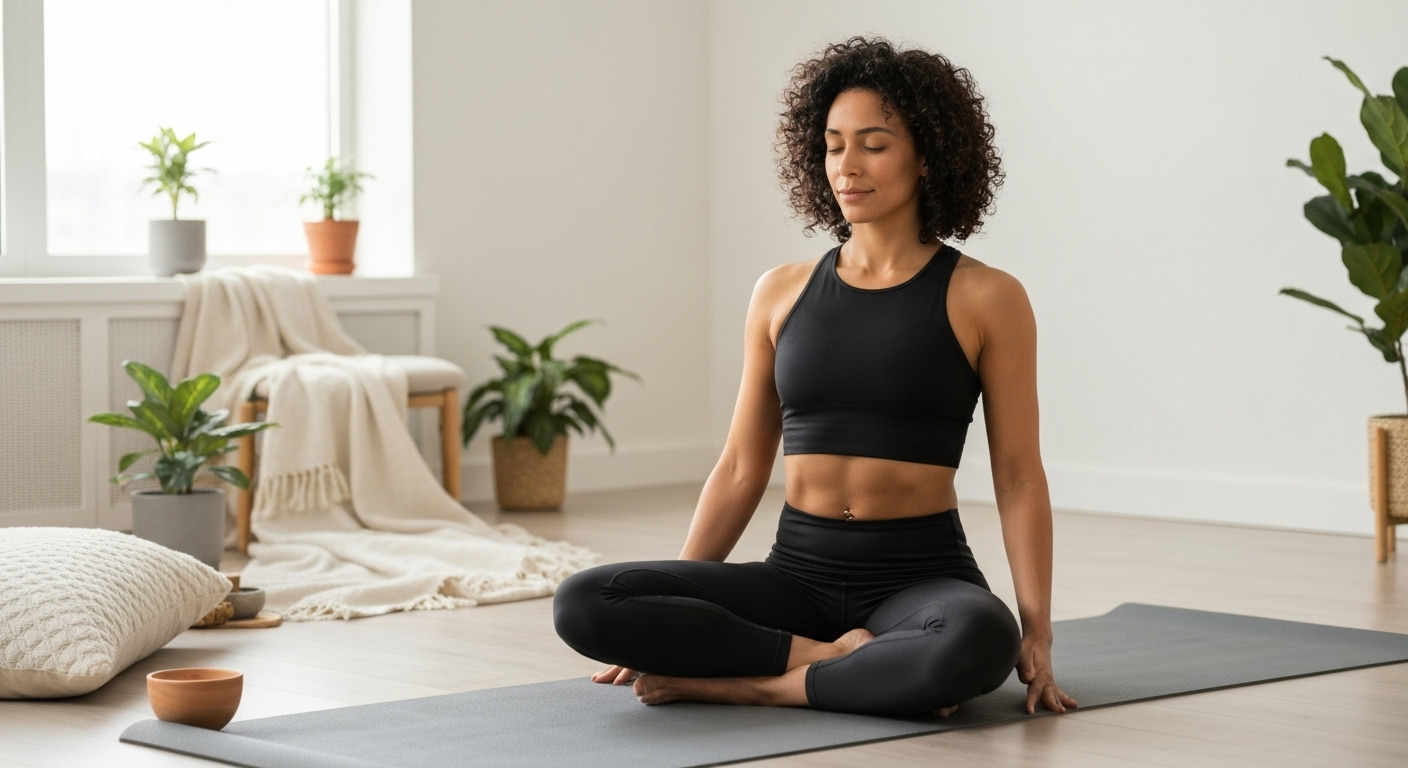
Key Highlights
- Explore live and on-demand yin yoga classes designed for deep relaxation and mindfulness from home.
- Join unique monthly themed journeys guided by experienced yoga teachers for a structured practice.
- Our style of yoga is perfect for beginners, offering a gentle introduction to this quiet practice.
- Enjoy ultimate flexibility by joining a full journey or single online yoga classes to suit your schedule.
- Experience our full range of classes with a no-obligation, 10-day free trial for new members.
Introduction
Are you trying to find a way to slow down in your busy life? You may want to get more in touch with your body and have a moment of peace. Picture a yoga practice that is about stillness and not speed. It is about going deep, not just being active. This is what yin yoga is. Yin yoga is gentle but it takes you deep and helps with real relaxation. At ālaya, we bring yin yoga to you online. You can join our yin yoga classes to unwind, relax, and feel more like yourself, no matter where you are.
Discover Yin Yoga Class Online with ālaya

Step into the calm world of yin yoga with ālaya. You can use our website to try this peaceful style of yoga from home. It is great for people who are new to yoga. Every class is focused on mindfulness, and we keep things friendly and welcoming for all.
We think that yoga should be for everyone. That is why we make it easy for you to learn yin yoga. You can move at your own pace, and there are experts ready to help you. Let’s take a look at what makes yin yoga special and what you can get out of it.
What Is Yin Yoga and Why Choose It Online?
Yin yoga is a slow and calm style of yoga. In this yoga, you hold each pose for a long time, often three to five minutes or even more. While dynamic (yang) yoga works on your muscles, yin goes deeper. It aims for the body’s connective tissues, such as ligaments and joints, as well as the bones and fascia. This is mostly true for the hips, pelvis, and lower body. When you do this gentle hold, it can help your blood circulation and make you more flexible.
Now, you might wonder what sets yin yoga online apart from other online yoga styles. The big difference is how still and quiet yin is, which suits at-home practice well. You do not need to make your body match a perfect pose. Instead, you look for your “edge,” where you feel a mild stretch. This makes it an internal and meditative time for you. You get a very personal and quiet practice and are not disturbed by anything happening around you.
When you pick online yoga classes with ālaya, you get a chance to create your own calm space at home. You can make the room dim, grab your best pillows, and settle in. You get to enjoy each session of yoga while making it a special break where you can fully relax.
Benefits of Yin Yoga for Beginners and All Levels: Mindfulness, Mobility, and Relaxation
Yin yoga takes a gentle and calm approach. This style of yoga gives lots of good things for both your body and your mind. Yin yoga is a good yoga for beginners, but people who know yoga well also like it. The slow and careful moves in yin yoga help you notice what is happening in your body. You also get to feel calm inside.
Some of the best things you get from yin yoga are:
- Better mobility: Yin yoga works on the deep tissues in your body. It can help your joints be healthier and helps you have a better range of motion.
- Helps the nervous system: Long and easy poses help calm the nervous system. This can help you relax deeply and let go of stress.
- Builds mindfulness: Yin yoga asks you to stay in the moment in each pose. You start to quiet your mind and become more mindful, which gives you some peace from busy thinking.
If you are just starting, you might wonder how to pick the right class. At ālaya, we make sure all our yin yoga classes are a good fit for beginners. You will get clear tips in every class. We also show you different ways to do the poses, so everyone feels safe and supported. Our classes have themes, so you can follow a step-by-step plan. This helps you get more confident and find out more about the way yin yoga can help your body and mind with relaxation, mobility, mindfulness, and deep relaxation.
ālaya’s Unique Yin Yoga Experience
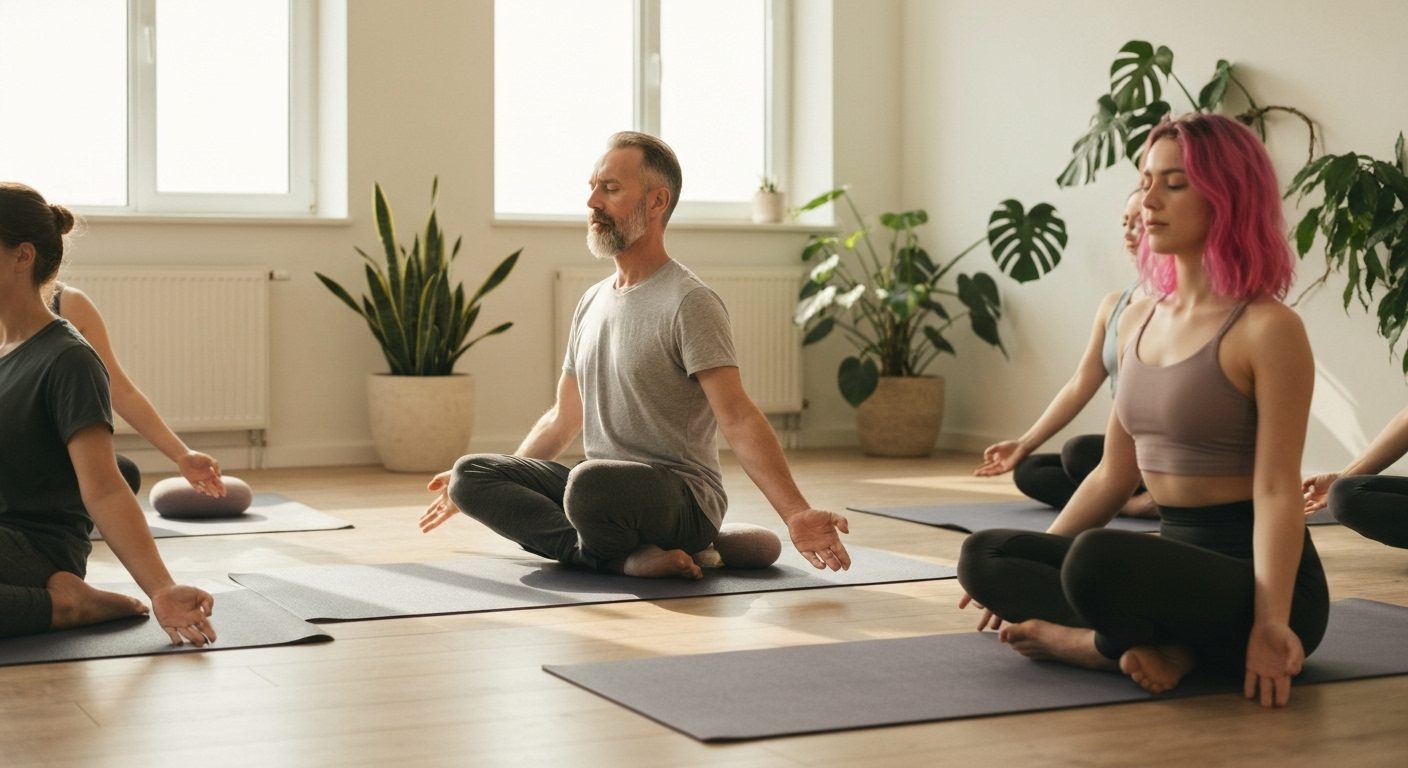
At ālaya, we have made a yin yoga program that is well-planned but still very open for you. You get to find calm in your own way. Our team of yoga teachers will help you with each practice, so you feel real relaxation and get to know yourself better.
We know everyone has their own path. That is why our program gives you a plan but still lets you make choices that suit you. Below, we talk about our live monthly journeys and show you the freedom that comes with all our yoga classes.
Live Monthly Yin Yoga Journeys: Themes and Structure
Are you trying to find yin yoga online classes where you can learn with live instructors? Our monthly live yin yoga sessions are what make the ālaya experience special. There is a new theme each month that helps you go deeper into your yin yoga practice. Every theme helps you learn more about your body and feelings. Before, the themes have been things like “Elemental Yin” and “Deep Hip Healing.” Each one lets you focus on something different.
You will be guided by our yoga teachers. They help create a helpful and interactive space when you join online. You get real-time help on alignment and on how each move should feel. That way, you feel like you are part of a group, even if you do yin yoga at home. The way we plan the classes makes it easy for you to keep at it and see your practice grow over time.
This style makes sure your yin yoga always feels interesting and new. You are not just joining another class. You are starting a journey that is shaped just for you. Each week, you have something clear to work on, which helps you grow and learn.
Flexible Participation: Join Any Week or the Full Journey
One important part of the ālaya experience is flexibility. We know that the day-to-day can be busy and not always go as you plan. That is why our yin yoga classes are made to fit into your schedule without any trouble. Our monthly journeys give you a full and easy path to follow, but you are never stuck with one choice.
You can pick your own way to join.
- Join the full journey: Start at week one with us and go to week five, diving into each part of the theme for a deep yin yoga experience.
- Drop in for a class: Pick the weeks or yoga classes that feel right for you. Come only when you want to.
How many times should you attend to get the best result? Doing yin yoga often helps, but the best times to come are what work for your life. If you can get to yin yoga once each week, that’s fine. If you do more, it’s up to you. We give you easy steps, a guide, and support for your yoga practice. You can always choose, so your time with yoga stays good and free from stress.
Emotional Alchemy & Mindfulness: September’s Yin Yoga Theme
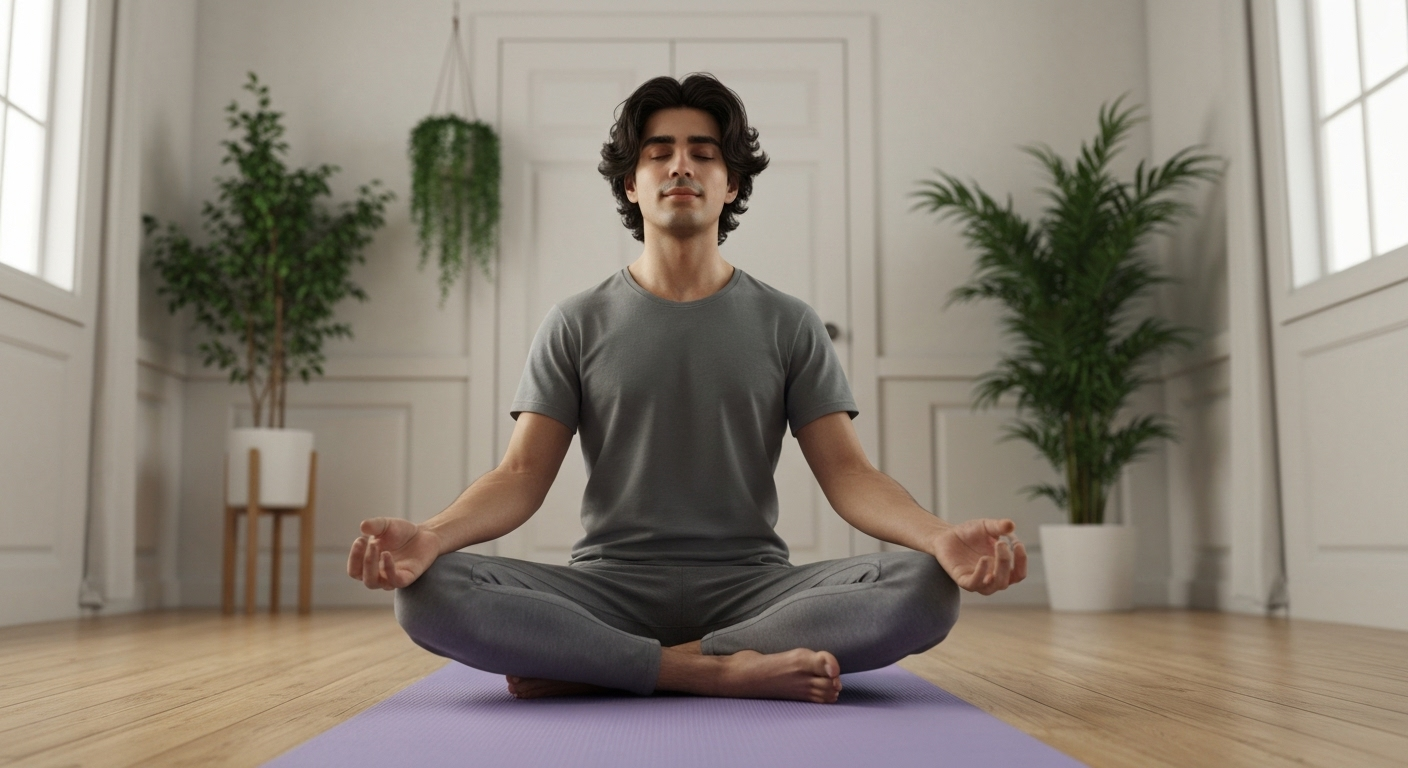 This September, you can join us to learn how emotional alchemy can help you change how you feel. The journey takes one month, using yin yoga to guide you. It helps you work through your thoughts and turn heavy feelings into wisdom and calm.
This September, you can join us to learn how emotional alchemy can help you change how you feel. The journey takes one month, using yin yoga to guide you. It helps you work through your thoughts and turn heavy feelings into wisdom and calm.
With mindfulness and a focus on chosen postures, we make sure you get a space where it’s safe to feel, relax, and shift your emotions. Each week, you will look at new parts of the journey. The main aim is relaxation and finding balance inside yourself.
(Yin yoga, yoga, yin, mindfulness, postures, relaxation)
Weekly Focus From Release Anxiety to Embody Peace: Bring Stillness into Your Yang
What can you expect in a typical session during our “Emotional Alchemy” journey? Each week, we plan an experience to help you move from feeling upset to finding inner peace. The journey happens step by step and gives you time to feel gentle and strong changes in how you feel.
The weekly plan builds from the last one to help you fully process your emotions:
- Week 1: Release Anxiety: We start by calming the nervous system. This helps you feel safe and at ease.
- Week 2: Soften Grief: We focus on heart-opening postures. These help you let go of sadness in a soft way.
- Week 3: Transform Anger: In this week, we use poses that work on energy linked with anger to help you move and deal with it.
- Week 4: Soothe Overwhelm: You will use practices to help you stay grounded and centered. These work well when you feel scattered.
- Week 5: Embody Peace: You use practices to put together all your work from the past weeks. This leads to deep relaxation and you will feel whole in your final savasana.
Supportive Live Classes and 14-Day Playback Access
Our live classes at ālaya are more than lessons. They are a place to be with others and to get help right away. When you join a live class, even online, you will feel part of a group. This makes it easier to stay with your goal to get more relaxation and better mobility.
We know your timetable may not always fit our live class slots. That is why we give you 14 days of playback for every live session. You can use this time to do the class when it works for you. Or you can watch a class you liked again. Maybe you liked the hip-opening moves from Tuesday, which is a good idea to practice. You can do that same class on Thursday too.
With live group time and on-demand choices, you never miss out. You enjoy the team spirit of a live class and still practise on your own whenever you like.
On-Demand Yin Yoga and Meditation Class Online with ālaya
Beyond our live classes, ālaya has a large on-demand yoga library. You can use it whenever you want. This is great for days when you feel like joining a yoga class on your own time or need to work on something in your yin yoga practice.
Our video library is easy to use. It helps you find the right yoga class for how you feel or what you want to do. No matter if you have just 15 minutes or a whole hour, our online yoga hub is ready for you.
Curated Yin Yoga Video Library for Every Need
Our on-demand video library is far more than just a collection of recordings; it is a curated resource designed to support your practice in a targeted way. Unlike scrolling endlessly through YouTube, our library is structured to help you find exactly what you need to improve your mobility and range of motion.
You can filter classes by duration, focus, or intensity. To give you an idea of what’s available, here are some examples from our library:
| Focus Area | Sample Class Title | Best For |
|---|---|---|
| Hips & Lower Back | 20-Minute Deep Hip Release | Releasing tension after sitting |
| Shoulders & Neck | 30-Minute Unwind Your Shoulders | Easing upper body tightness |
| Full Body | 60-Minute Restorative Yin | Deep relaxation and stress relief |
| Energy Flow | 45-Minute Meridian Balance | Harmonising the body’s energy |
If you’re looking for free classes, you can explore our entire library with a 10-day free trial. This gives you unlimited access to our premium content, allowing you to discover the full ālaya experience without commitment.
Structured On-Demand Journeys for Guided Practice
If you like yoga and want some order in how you practice, we have made on-demand journeys for you. These are special playlists or a set of classes. Each one helps you focus on a theme or a goal. You get a real guided practice you can use at your own pace.
These journeys show you the way and help you grow. You can use them to:
- Cultivate Gratitude: This is a 7-day series of short practices. It helps with heart-opening and practicing mindfulness.
- Build Mental Endurance: This journey has 5 classes. It helps you stay calm and focus when things get hard.
- Improve Sleep: You get evening practices to help you relax and get your mind and body ready for good rest.
These journeys help with real learning and your own growth. You get to work on your personal yoga. Keep in mind, they are not certification courses. They are here to help you build a better yoga routine, with structure and planning.
Conclusion
Yin yoga with ālaya gives people at all levels a chance to change and grow, from beginners to experts. Our live yoga classes help you learn about new themes every month, like how to work with your feelings. You get to look deeper into your own feelings and find ways to grow. There is the choice to join any week or take part in the whole journey. This makes it easy for you to fit yoga into your life and suit your own needs.
You will also find our big library ready for you, filled with videos for people who like to do yoga on their own. If you sign up now, you get a 10-day free trial. You can try all the best parts of yin yoga and find out how peaceful it can be. Join us and start your path to calm feelings and better balance today!
Frequently Asked Questions
What equipment do I need for a yin yoga online class with ālaya?
For our yoga classes, all you really need is a mat. There is no need for a lot of fancy items. To help you feel better and enjoy relaxation, we do suggest using props. If you are a beginner, you can get some cushions, pillows, or blankets from your home. You can use these as support in many postures. This makes it easy for everyone to get what they need to practice yoga and feel more relaxed.
Are modifications available for different levels in ālaya’s classes?
Yes, you can do it. Our yoga teachers help by giving easy changes in every guided practice. They do this so that beginners and people at every level can take part. The main goal is to support your body and help you with your range of motion. We want this yoga time to be safe and good for all of us.
How often should I practise yin yoga online for best results?
The number of times you do yoga practice depends on what you want from it. If you like to work on mobility and mental endurance, you can do yoga two or three times in a week. Still, if you only go for one yoga class a week, it can help you relax and feel good.
What will you learn in our online yoga classes?
In our yin yoga online class, you’ll learn essential techniques for relaxation and mindfulness. Classes focus on deep stretching, breath control, and meditation practices that enhance flexibility and emotional balance. Ideal for all levels, these sessions promote a tranquil mind and body connection while developing your personal yoga practice.
Many people say that a yoga class must move fast and feel tough to count as exercise. They think you have to sweat a lot for it to work. But that is not true. Gentle yoga is not just about being lazy. It is smart and has its own way of doing things. When you slow down and listen to your body, you can get benefits that tough workouts sometimes do not give you.
If you are new to yoga, feel sore, or want something calm, gentle yoga may be the best way for you to feel good. It can also help when you need to take care of your health.
What is Gentle Yoga?
Gentle yoga is a slower-paced style of practice that focuses on mindful movement, deep stretching, and breath awareness. Rather than rushing from one posture to the next, you take time to settle into each position and explore it fully.
Styles That Fall Under Gentle Yoga
- Yin Yoga — long-held stretches for deep release in the connective tissues.
- Restorative Yoga — a type of yoga that uses supports to help you relax deeply in supported positions.
- Slow Flow — a type of vinyasa that has a slow speed and fewer transitions.
How It Differs from More Intense Practices
In strong yoga styles, the aim is to make your body warm and build strength with movement. Gentle yoga changes the focus. This type pays attention to how you line up your body, note how you feel, and takes you forward step by step. It is easier on your joints, muscles, and nerves.
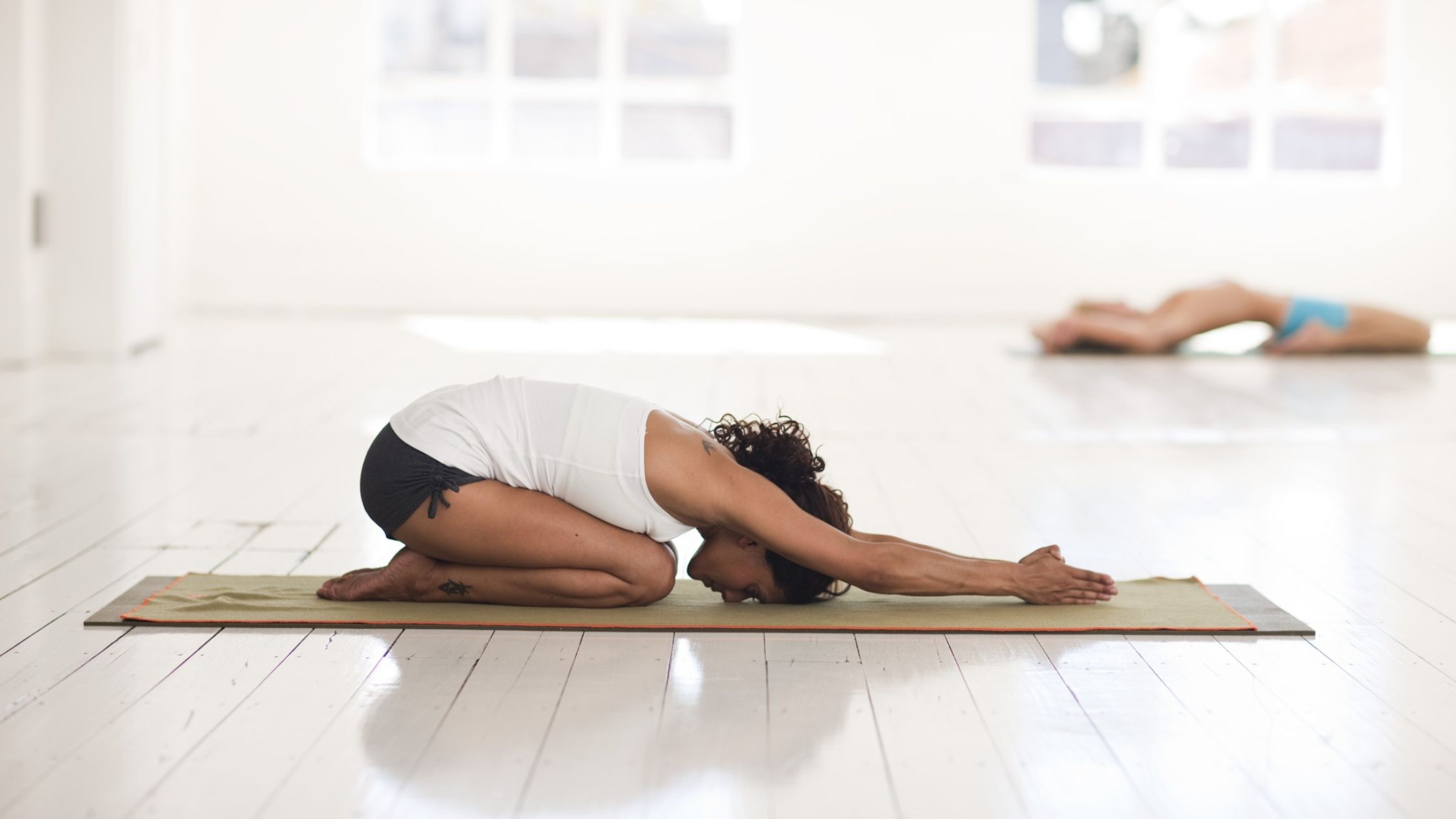
The Smart Benefits of Gentle Yoga
Supports Recovery and Injury Prevention
This style of yoga helps you keep your movement and stretch without putting stress on healing tissues. It is a good way to start moving again after you have been sick, hurt, or away from regular exercise.
Reduces Stress and Improves Mental Clarity
The slower pace lets the mind settle, which lowers cortisol levels and makes you feel calmer. This makes it a great way to deal with anxiety and stay focused.
Builds Strength in a Sustainable Way
Holding poses slowly might not seem as intense, but it works your muscles for longer periods of time, which builds endurance and functional strength.
Enhances Flexibility and Mobility
When you move deeper into each posture, you help your body get more flexible. This also makes your joints feel better. These good things can help you do other activities and feel better in your everyday life.
Boosts Mind-Body Connection
This style of yoga asks you to move while paying attention. You notice how each pose feels in your body. You also feel how you breathe and how it helps you. This mindful way of thinking makes you more aware of what your body needs and how it feels.

When to Choose Gentle Yoga
For Beginners or Those Returning After a Break
Gentle yoga is a good way to start. It helps you learn how to move the right way and how to breathe. You do not feel the need to keep up with fast movements.
During High-Stress Periods
If your mind is full or you feel tired, gentle yoga can help you feel better. It can bring balance without making you feel worn out.
As a Complement to Other Workouts
Athletes and people who love fitness use gentle yoga to help with hard training. It helps the body feel better and lets them recover. It also keeps them from burning out.
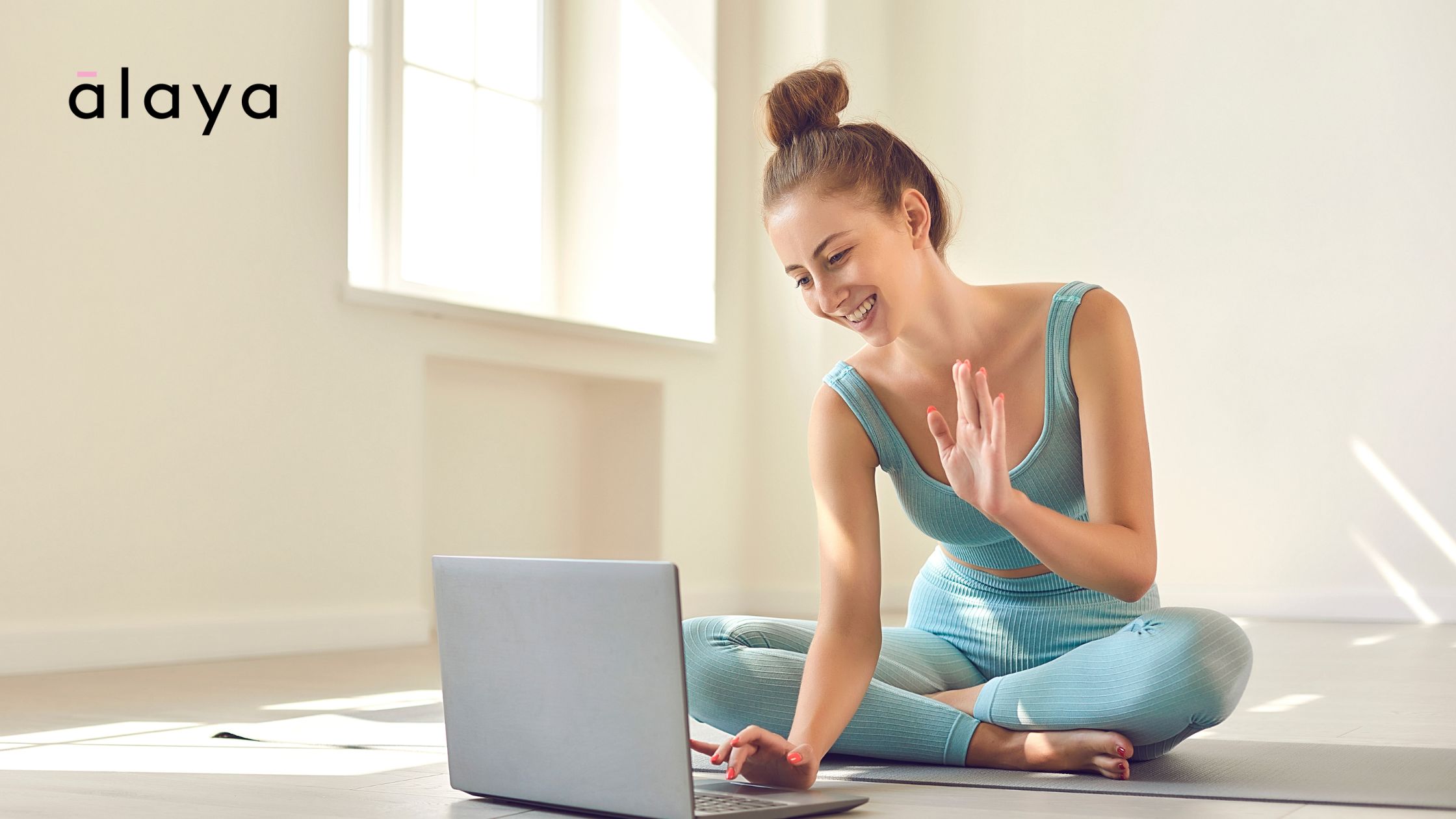
Gentle Yoga with ālaya
Live and On-Demand Gentle Classes
At ālaya, we have many gentle yoga choices like Yin, Restorative, and Slow Flow. You can join a live class or watch them any time from our on-demand content. This is good for when you want to relax after a long day or start your morning in a calm way.
Try It with a 10-Day Free Trial
See the benefits of gentle yoga for yourself. Start now with our 10-day free trial. You will get to try as many gentle yoga online classes as you want, plus our full class library.
If you’ve decided to start a new movement practice, you could be stuck between two popular options: mat pilates vs yoga. They both say they will make you stronger, more flexible, and healthier overall, but the way they do it on the mat seems very different.
You might have heard that Pilates is good for building a strong core, but you might also be interested in how yoga can help you relax. Or maybe you’re a working person who wants to move your body quickly and effectively before the day gets busy.
The good news is? You may make a confident choice by knowing what makes mat Pilates and yoga different. You might even find that doing both is the best choice.
What is Mat Pilates?
Mat Pilates is a low-impact workout method created by Joseph Pilates in the early 20th century. It’s built on a foundation of controlled movements, mindful breathwork, and precise technique, with a strong focus on strengthening your deep core muscles — the powerhouse that supports almost every movement you make.
Unlike Pilates done on equipment like the Reformer, mat Pilates only requires a mat, making it easy to do anywhere — at home, in the park, or in the studio.
Key Benefits of Mat Pilates
- Builds deep core strength and stability
- Improves posture and spinal alignment
- Enhances mobility and joint health
- Low-impact yet highly effective for building strength
Who Mat Pilates is Best For
Mat Pilates is great for people who wish to work out their core and get stronger in everyday life..
Desk workers love it for counteracting rounded shoulders and stiff backs, athletes use it to improve performance, and it’s also a great fit if you’re after an effective, low-impact way to build strength at home or in the studio.
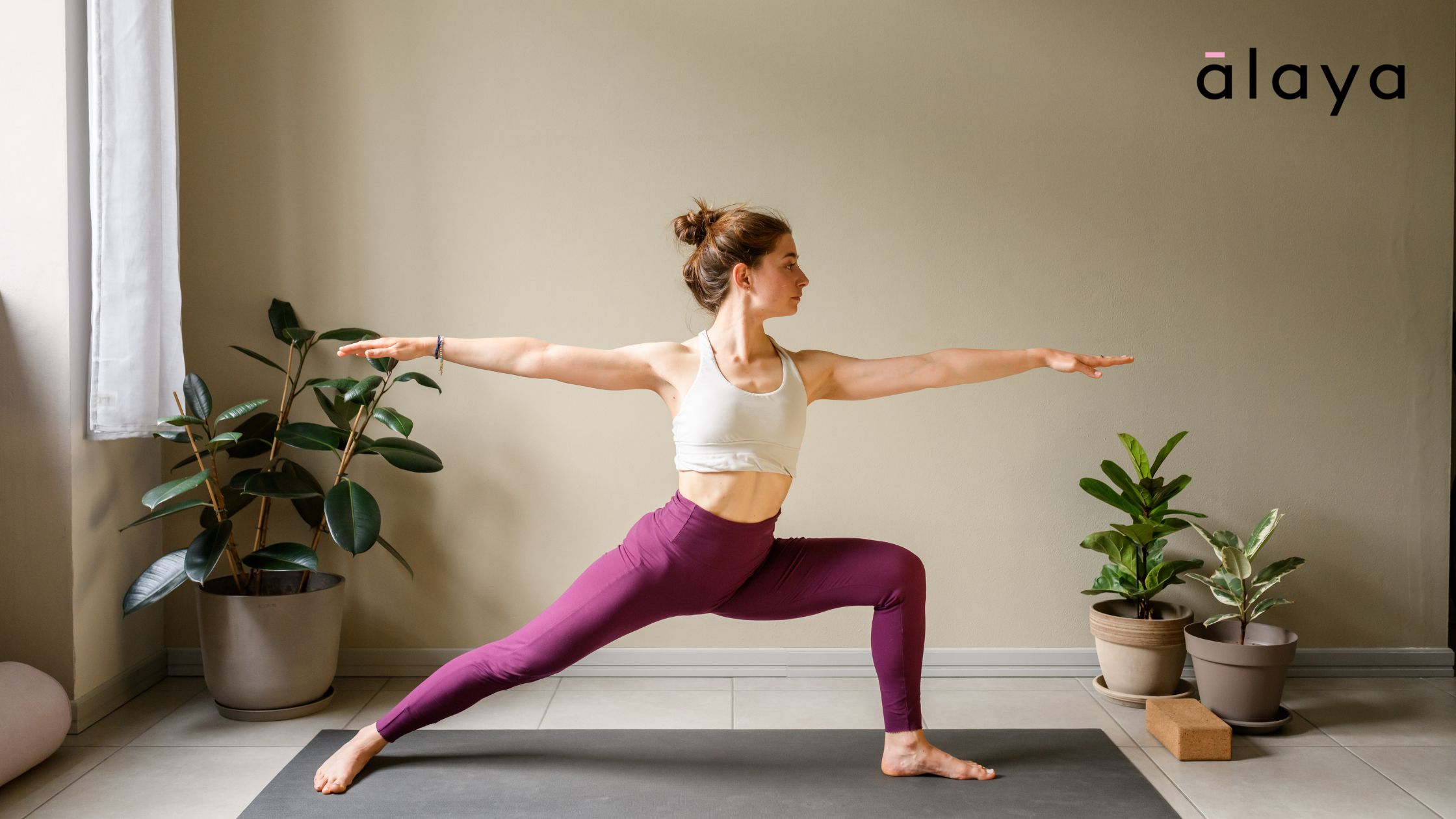
What is Yoga?
Yoga is an old Indian practice that combines breathing exercises (pranayama), physical positions (asanas), and sometimes meditation or mindfulness.
Yoga is good for more than just the body; it also helps with mental clarity, emotional balance, and a general feeling of well-being.
One of the best things about yoga is how many different types there are. You may have a calm, restful session one day and a dynamic, flowing vinyasa the next. Both are still yoga.
This flexibility makes it easy to change your practice based on how you feel and how much energy you have.
Main Benefits of Yoga
- Makes you more flexible, strong, and balanced
- Lessens stress and helps mental health
- Increases mindfulness and awareness of the body
- Depending on the style, it can be energizing or quite soothing.
Who Yoga is Best For
Yoga is great for anyone who wants to improve their health in a holistic way. Yoga is a good way to work out and clear your mind at the same time.
It’s especially appealing if you appreciate the idea of paying attention to your breath, moving with purpose, and being able to change the intensity from day to day.
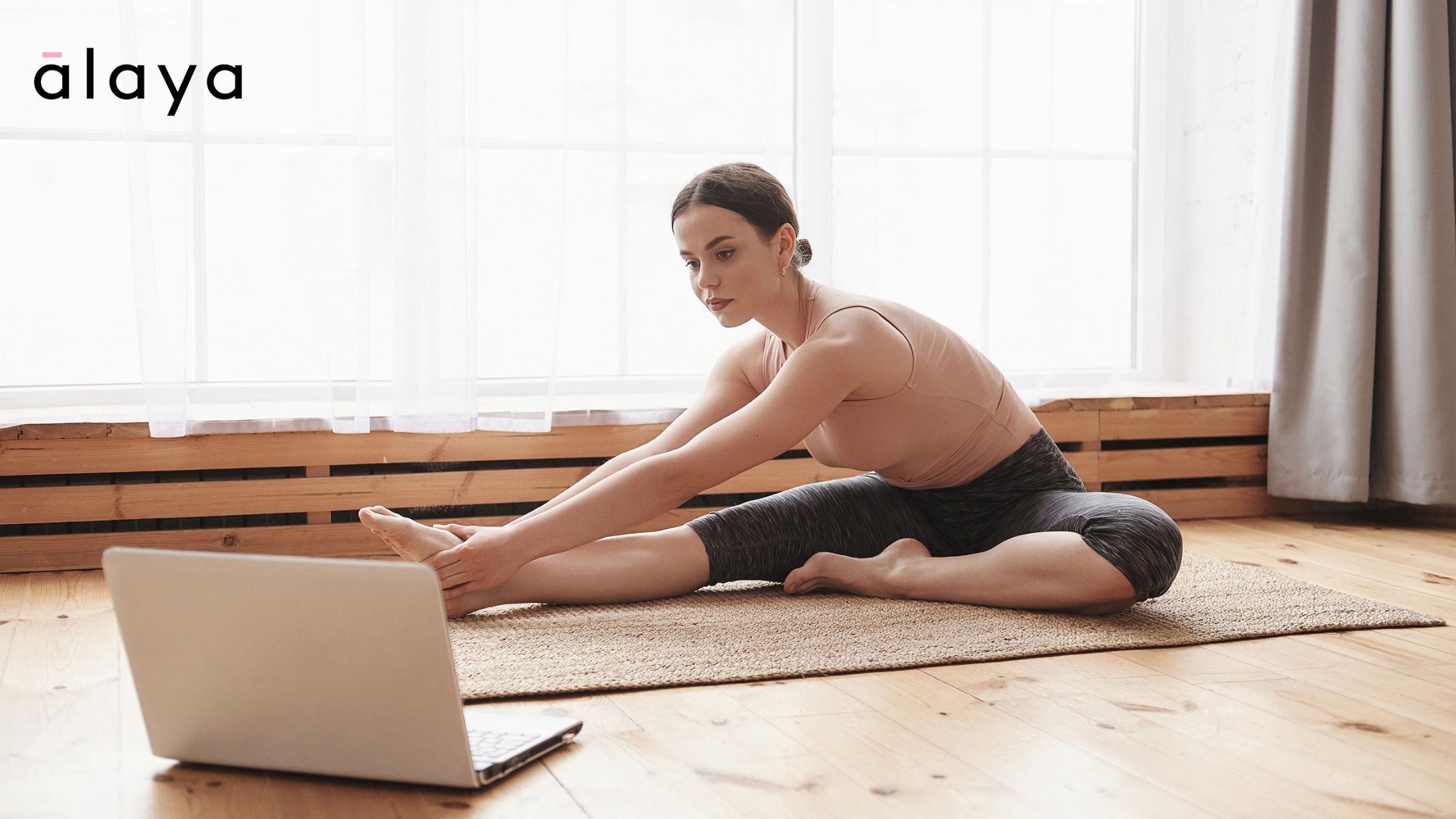
Mat Pilates vs Yoga: How to Choose?
Ask Yourself These Questions:
Do you want to work on building strong core muscles? → Try mat Pilates.
Do you want a balance of movement and mindfulness? → Try yoga.
Are you looking for variety and adaptability? → Try both and see which feels best.
Why You Don’t Have to Pick Just One
Many people find that Pilates and yoga work beautifully together. Yoga makes Pilates even better by improving flexibility and mental focus, while Pilates strengthens the strength and stability that enable yoga poses. It’s a win-win.
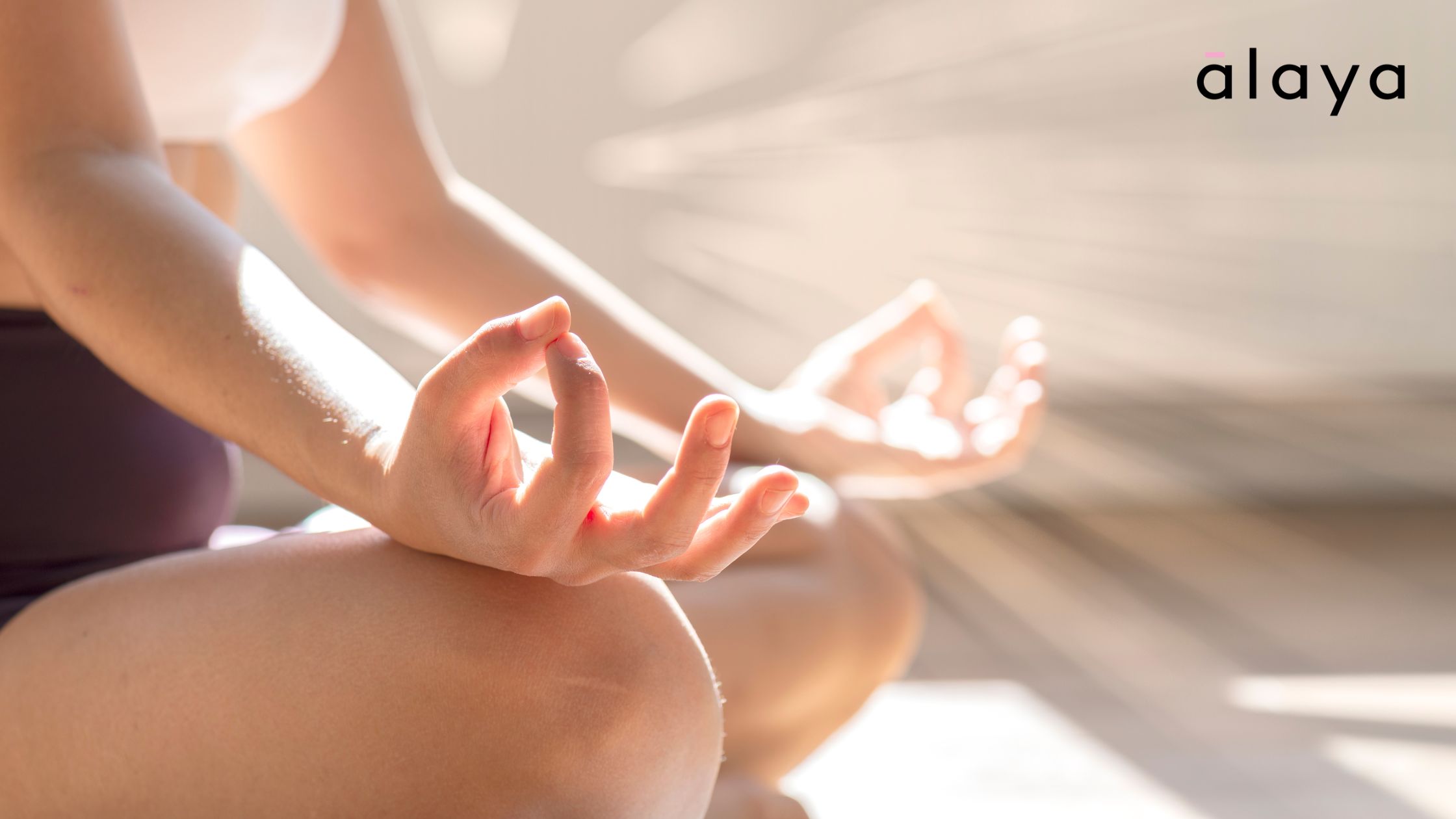
Try Both Mat Pilates and Yoga with ālaya’s Online Classes
You don’t have to choose at ālaya. Get the best of both worlds with our online platform, which has a wide range of yoga and mat Pilates classes for all levels.
You can attend live sessions for that real-time community or you can watch our on-demand collection whenever it works for you.
There is something here for every mood and body type, from calm flows to energising core workouts.
Start with Our 10-Day Free Trial
If you’re still deciding between mat Pilates and yoga, why not explore both? Try our 10-day free trial and get unlimited access to Cork yoga and mat Pilates classes online. This way, you may feel how each technique affects your body and choose the one that works best for your goals.
As we get older, it becomes more and more vital to keep our strength, balance, and mobility. Safety and accessibility are also important. That’s where Iyengar chair yoga really shines. This guide to Iyengar chair yoga pose for strength and stability will show you how easy and helpful this practice can be, whether you’re trying it for the first time, coming back from an injury, or seeking for a safe method to move at home.
Chair yoga is based on the precise and helpful practice of Iyengar yoga. It is a gentle but powerful way for seniors to become more resilient, rediscover their confidence in movement, and experience the mental clarity that yoga brings.
What Is Iyengar Chair Yoga?
B.K.S. Iyengar created Iyengar yoga, a traditional style that focuses on alignment, precision, and using props to help everyone, no matter their age or level of fitness. People use chairs, blocks, straps, and bolsters not to make things simpler, but to make them easier to reach and more useful.
Chair yoga is especially good for older people or people who have trouble moving around when it is done using the Iyengar style. It lets you do classic yoga positions while sitting or leaning on anything, which is good for your joints and lowers your risk of falling.
At ālaya online, have created a full Chair Yoga for Seniors course that uses this heritage to help with strength, balance, and ease of movement—all from the comfort of your own home.
5 Iyengar Chair Yoga Pose for Seniors
These five Iyengar chair yoga pose are safe and effective for building strength, balance, and coordination:
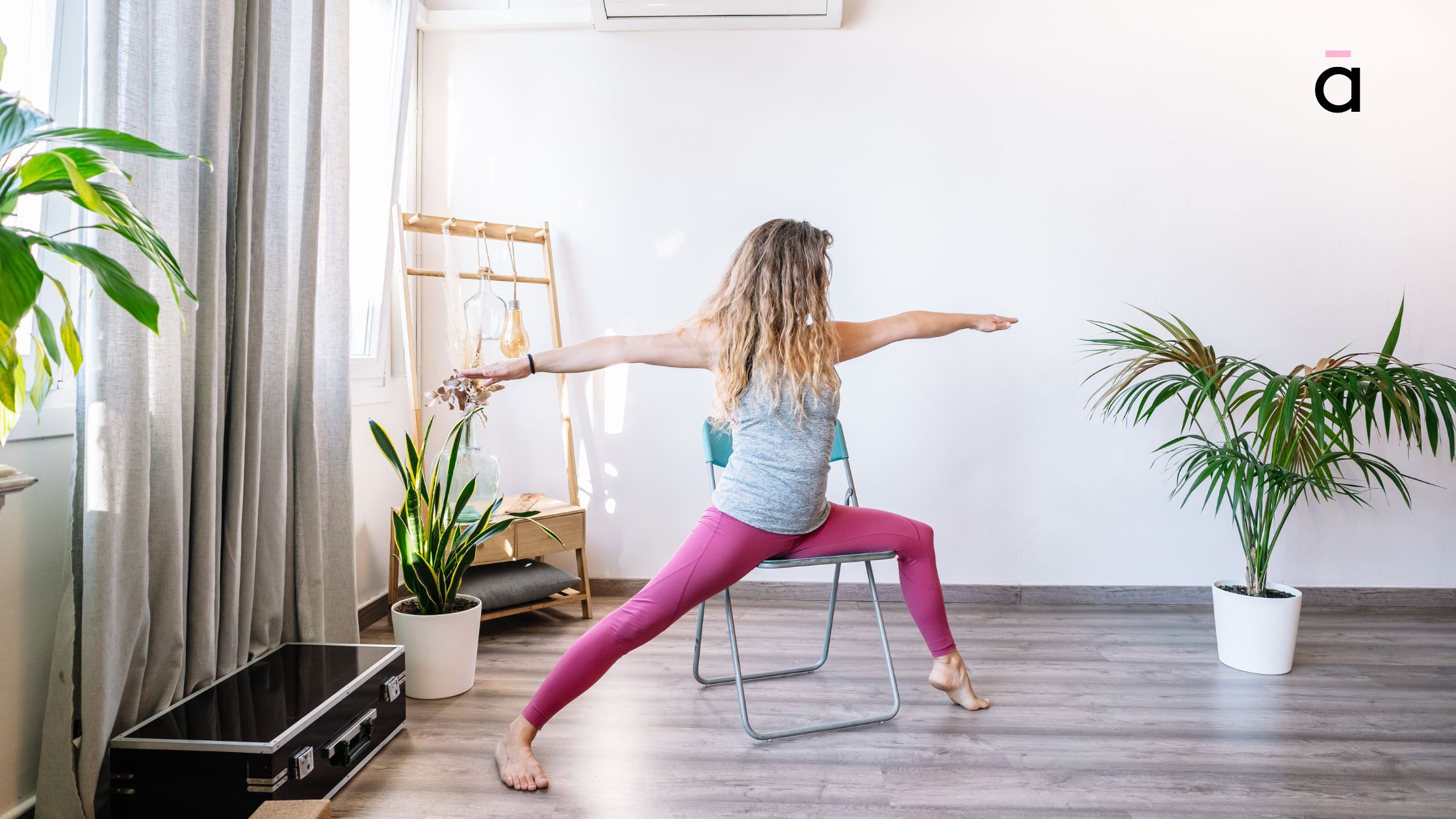
1. Virabhadrasana II (Warrior II)
This is a strong pose that will help you build strength in your lower body and attention. One leg goes behind the chair while the other bends at the knee and the arms reach in opposing directions. It makes the thighs stronger, the hips more flexible, and the chest bigger.
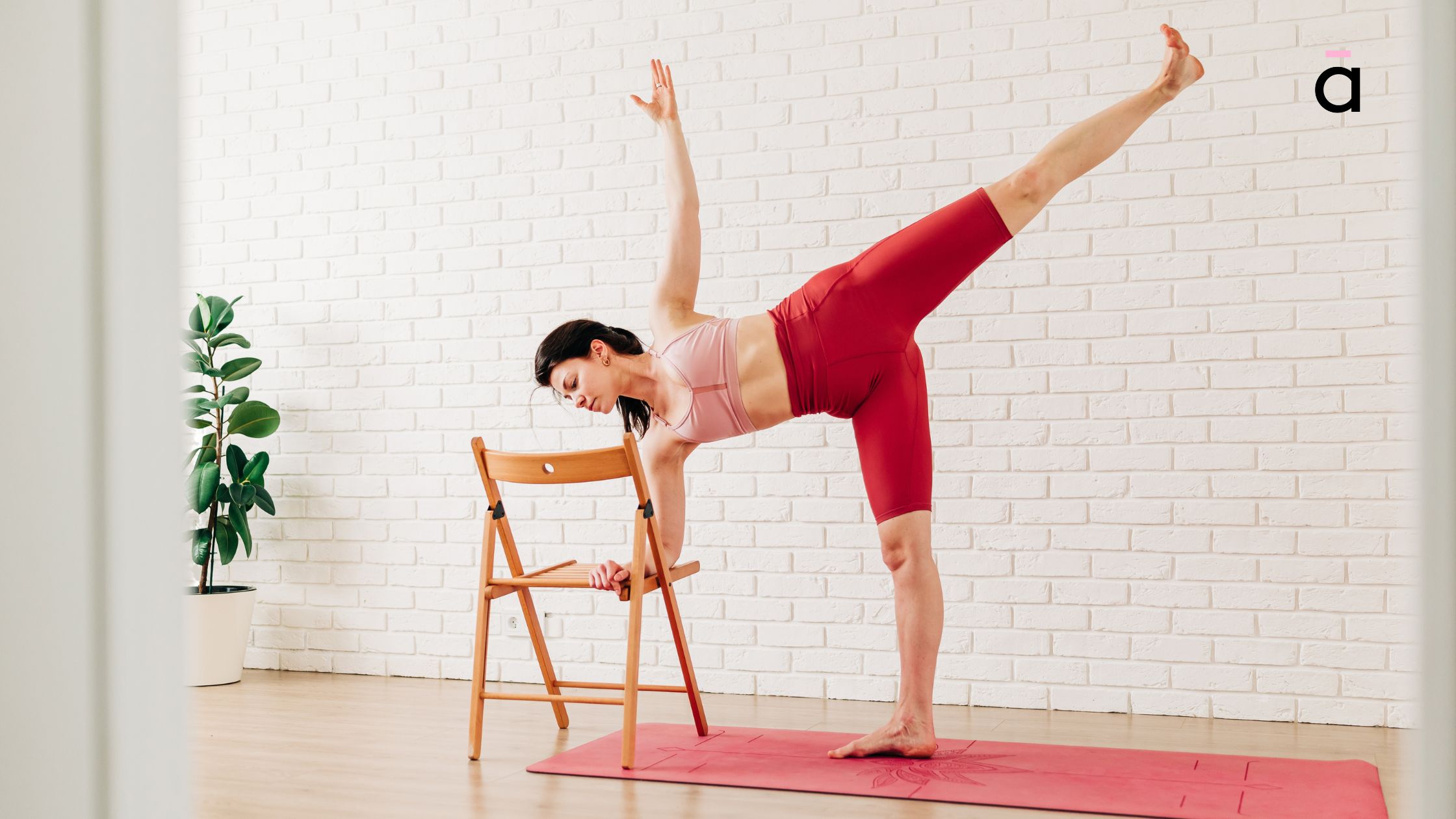
2. Ardha Chandrasana (Half Moon Pose)
In this version, you use the chair to help you lift one leg and stretch up with the other arm. It makes you more stable from side to side, helps you coordinate better, and strengthens your ankles and core.
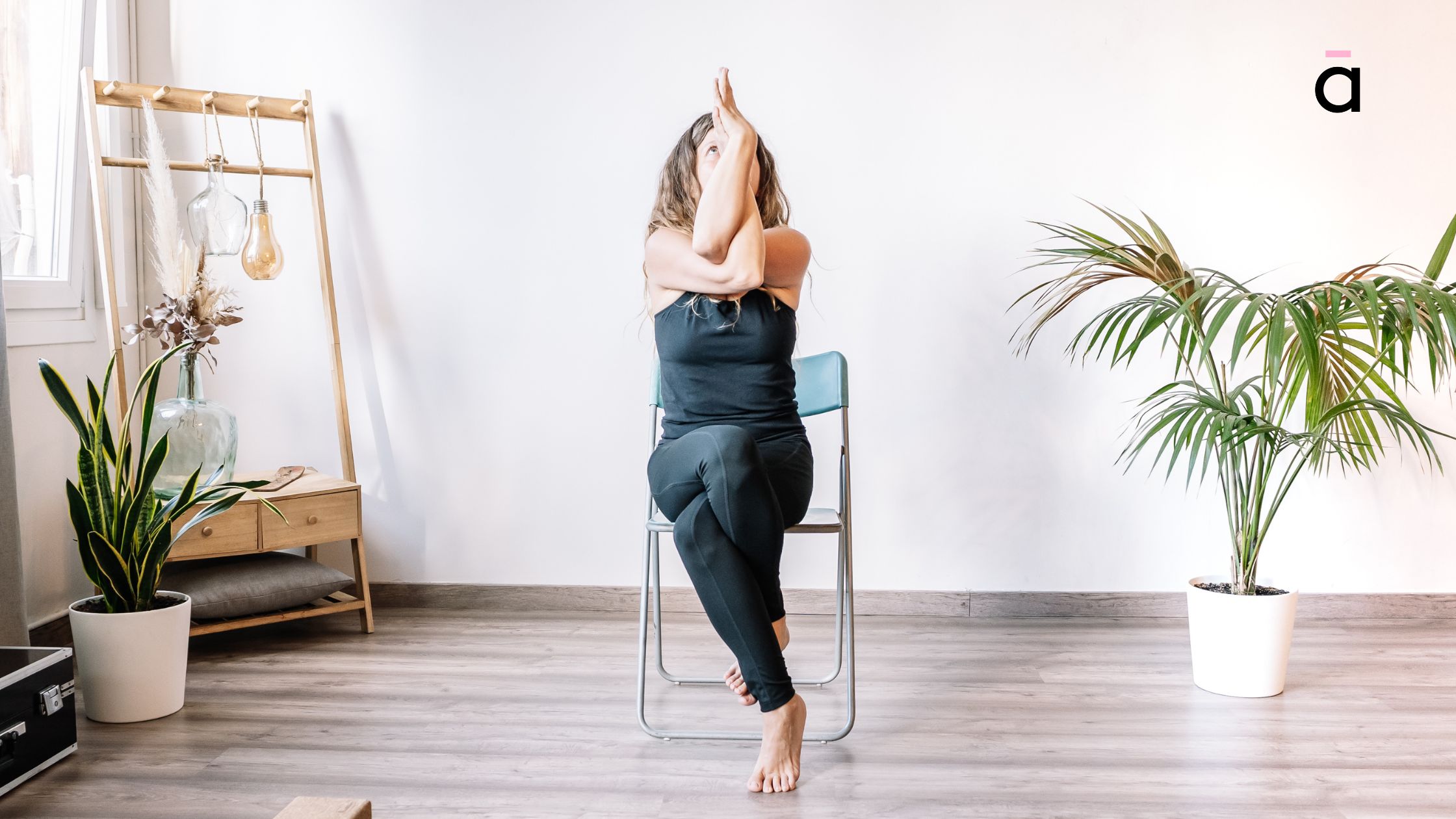
3. Garudasana (Eagle Pose)
One leg crosses over the other while sitting on a chair, and the arms wrap around each other at the elbows and wrists. This posture helps your joints move better and helps you focus and stay balanced, especially in your hips, knees, and shoulders.
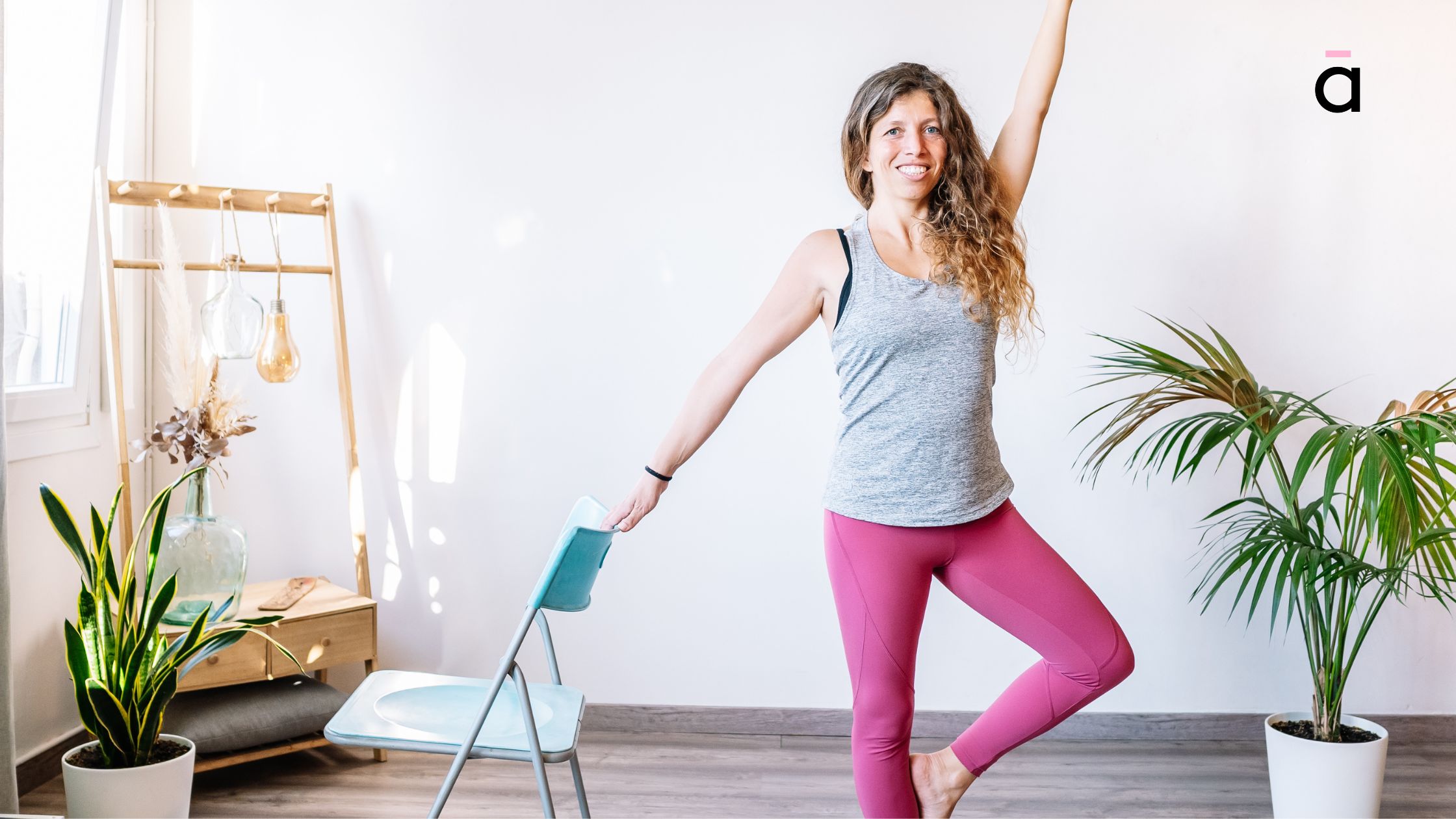
4. Vrikshasana (Tree Pose)
This pose tests your balance and improves the muscles that keep you stable by putting one foot on the inner calf or chair rung and the other foot on the ground. You can keep your hands at heart center or raise them above your head for an extra lift.
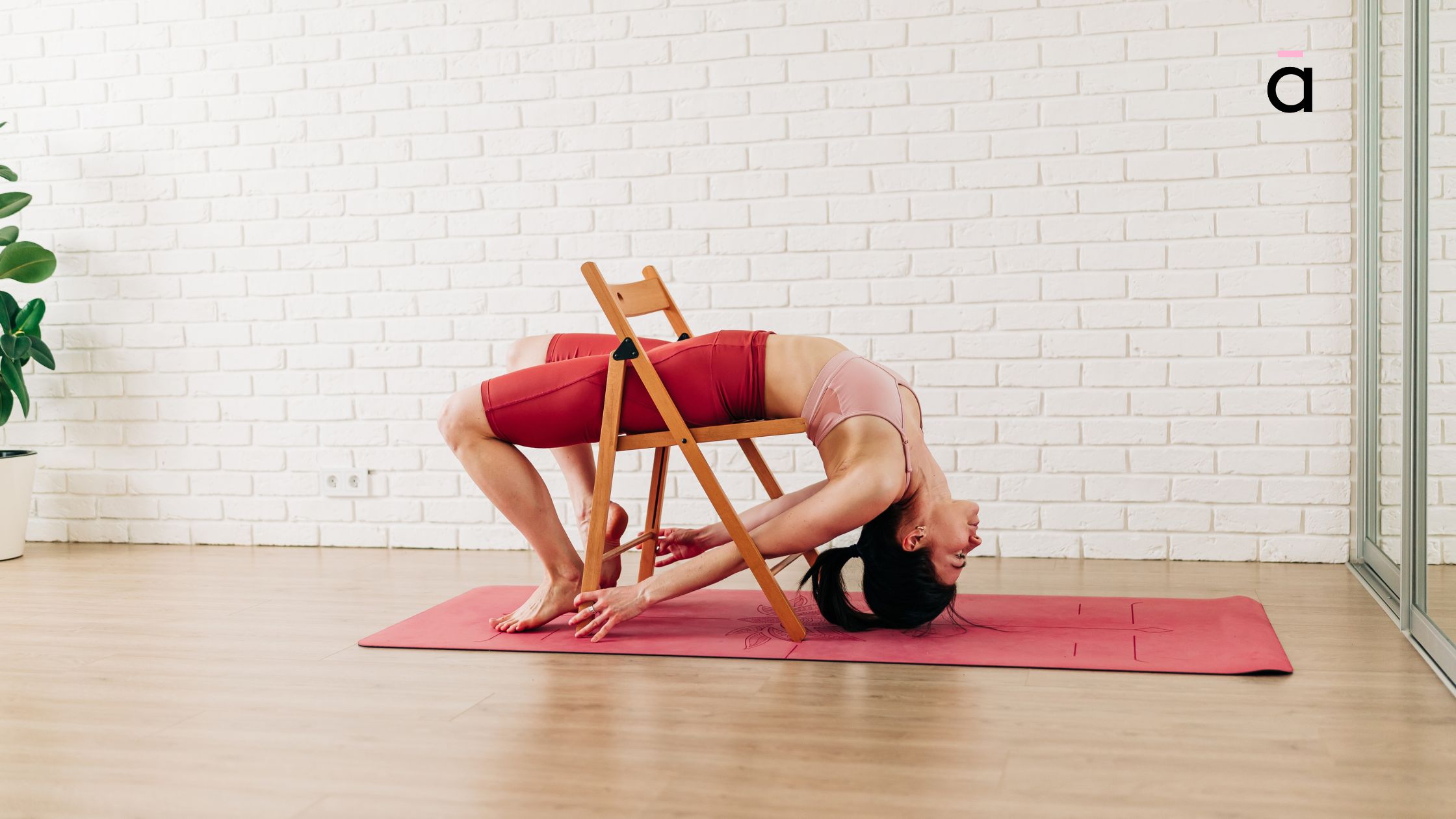
5. Setu Bandhasana (Bridge Pose)
A supported variant of bridge position where you use the back of a chair or props beneath your sacrum to pull on your spine. It softly wakes up the glutes and opens up the front of the body, notably the chest and hip flexors. It also calms the mind.
Why Seniors Love Chair Yoga
Chair yoga is a great approach for seniors to stay in touch with their body because it is accessible to do. Regular practice helps:
- Get better at balancing and coordinating
- Keep or get back your muscle strength
- Help keep joints healthy and ease stiffness
- Promote mindfulness and good mental health
- Lower the chance of falling and getting hurt
And because it follows the principles of Iyengar yoga, each pose is done with purpose, clarity, and care, making sure you get the most out of every breath and every move.
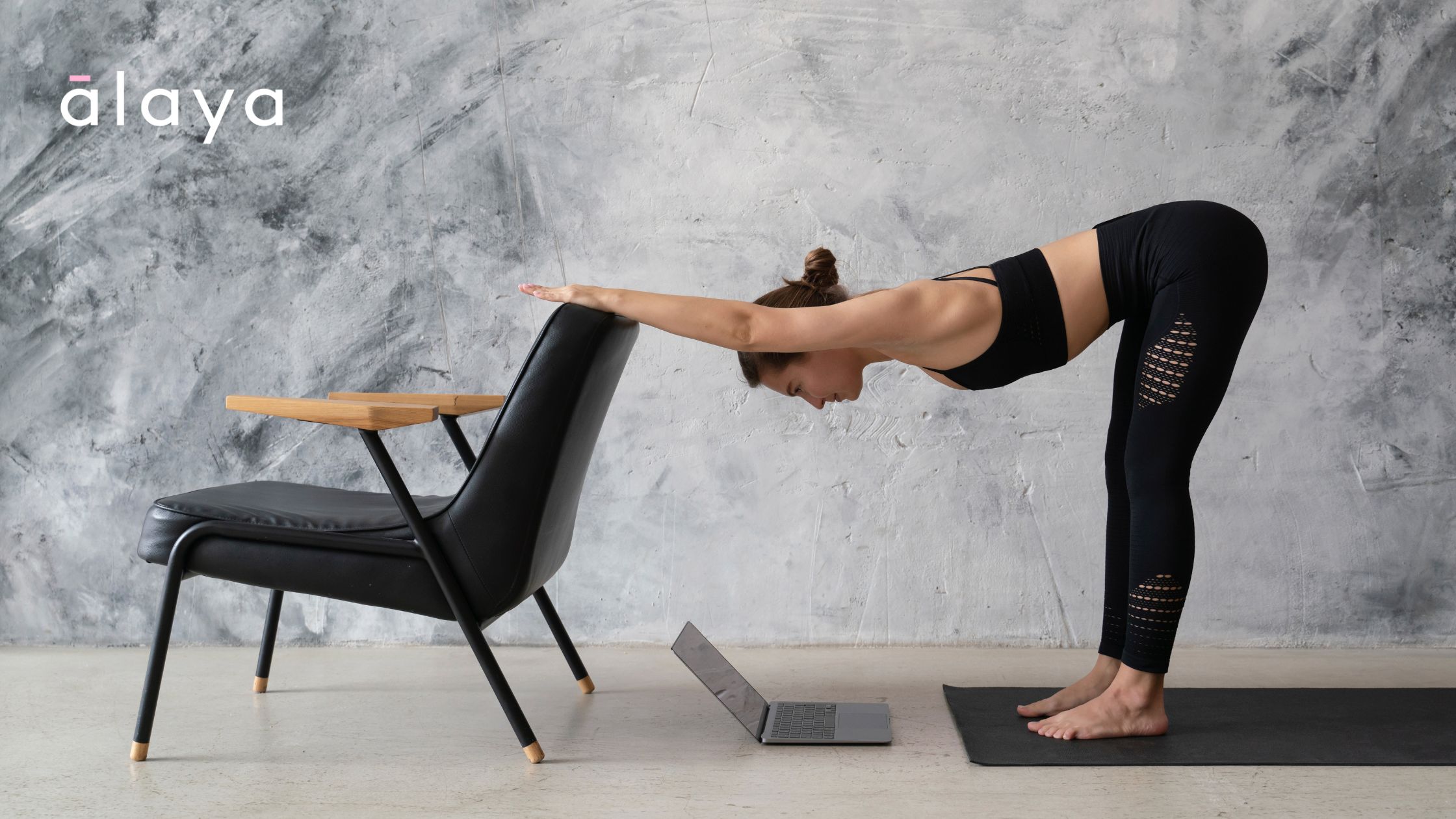
Online Yoga for Seniors—From Cork to Anywhere
We are proud to serve our ālaya online community in Cork, but our chair yoga classes are open to seniors all over the world through our digital platform. Our teachers are Iyengar certified to lead sessions that are safe, polite, and tailored to your requirements.
You don’t have to be able to bend or go down on the floor to start. You can do our Iyengar-based chair yoga course over and over again, at your own pace and at your own time.
Want To Try Chair Yoga At Home?
Check out our Chair Yoga for Seniors course. It’s based on Iyengar yoga, open to everyone, and all online.
Good for beginners, older people, and anyone who wants to get stronger and calmer without working on the floor or feeling pressure.
This online yoga is meant to help you stay healthy, independent, and confident, no matter where you are in the world.
Pilates is one of the most effective ways to build strength, improve posture, and boost mobility—especially when you’re just getting started. If you’re exploring the best home Pilates workouts for beginners, it helps to understand the key poses (or exercises) that form the foundation of any safe, effective routine.
In this guide, we’ll walk you through 5 beginner-friendly Pilates mat poses you can do at home, along with how they work, why they matter, and how to access guided instruction through ālayā’s online Pilates classes—including a 10-day free trial if you’re just getting started.
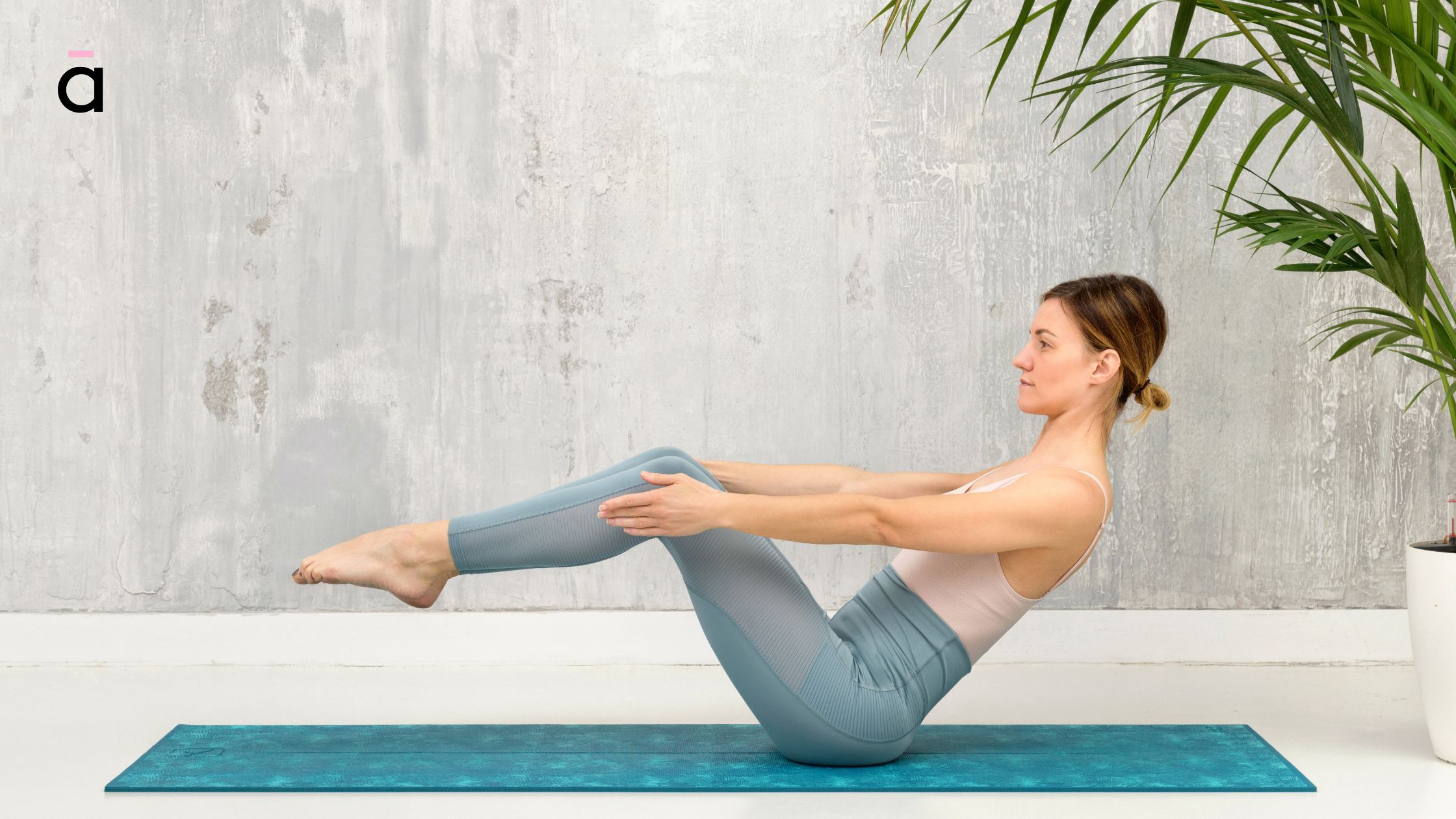
1. The Hundred
One of the most classic Pilates exercises, The Hundred helps warm up the body and activate deep core muscles.
- How to do it: Lie on your back with your knees bent and lifted (tabletop position). Extend your arms long by your sides, lift your head and shoulders off the mat, and pump your arms up and down as you breathe in for 5 counts and out for 5 counts.
- Benefits: Improves breathing control, activates core stability, and increases circulation
- Perfect for: Warming up at the start of your Pilates practice or daily routine
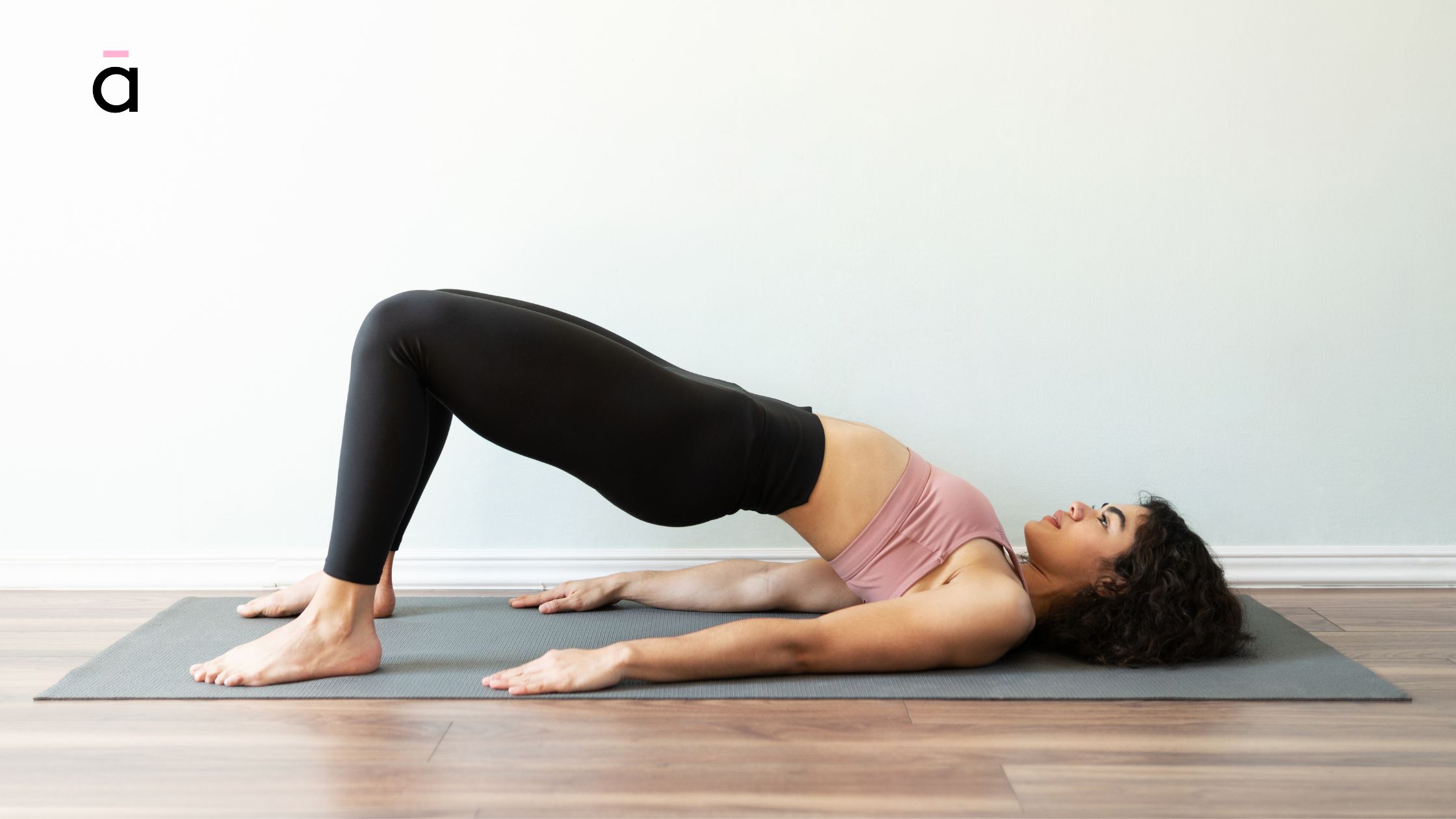
2. Shoulder Bridge
A gentle but powerful pose to engage your glutes, hamstrings, and spinal muscles—without straining your neck or back.
- How to do it: Lie on your back with knees bent and feet flat on the mat, hip-width apart. Press your feet down to lift your hips, one vertebra at a time. Hold, then lower slowly.
- Benefits: Strengthens posterior chain (glutes and hamstrings), improves spinal mobility, and supports better posture
- Try it in: Any online Pilates class focused on full-body strength or lower back support
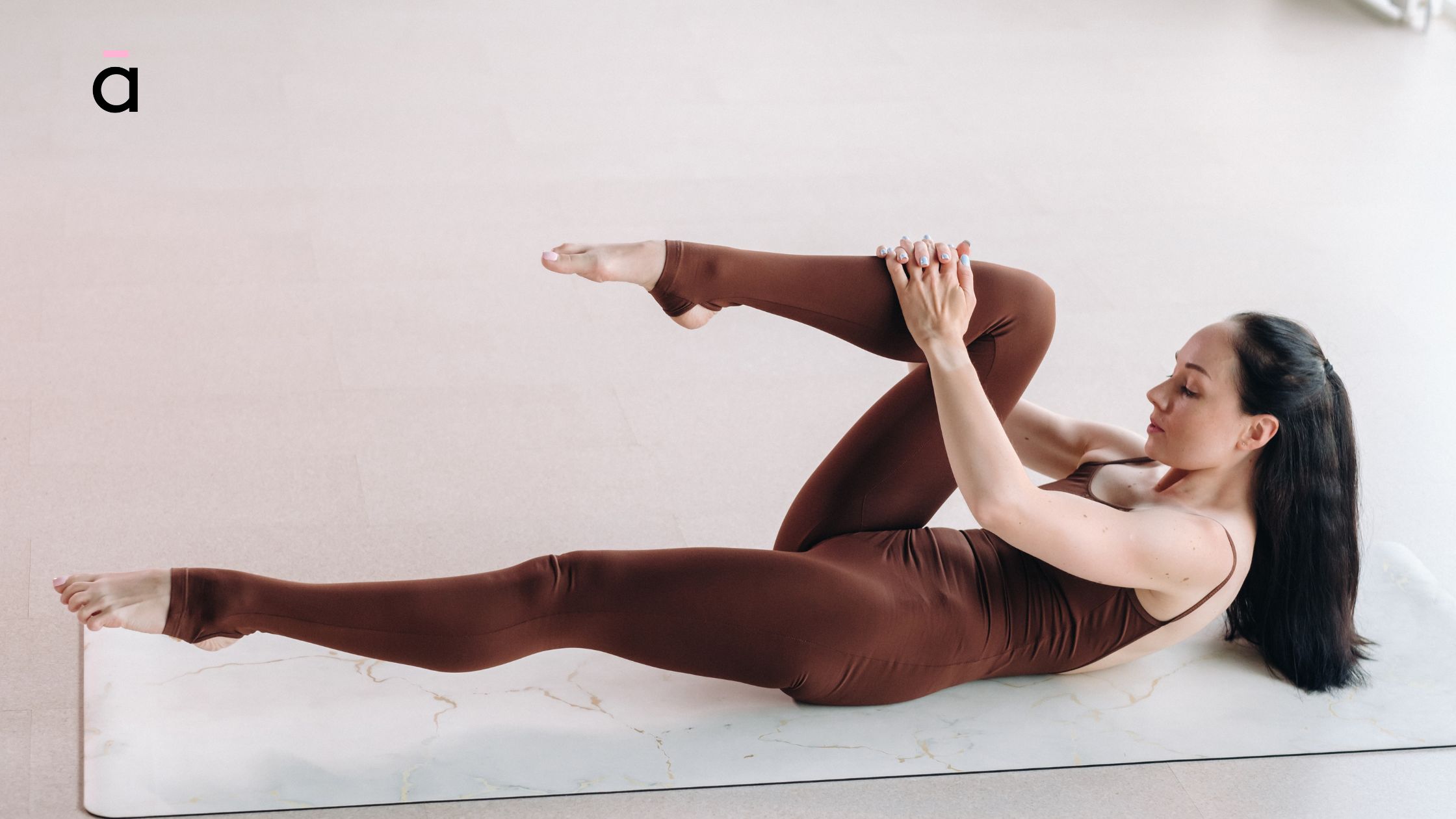
3. Single Leg Stretch
A simple yet effective Pilates move to train deep core stability and coordination.
- How to do it: Lie on your back with knees pulled into your chest. Extend one leg out at a 45-degree angle while the other stays bent. Switch legs in a rhythmic, controlled motion while keeping your head and shoulders lifted.
- Benefits: Strengthens the abdominals, improves pelvic stability, and enhances coordination
- Modify with: Hands behind head or head resting on the mat if needed
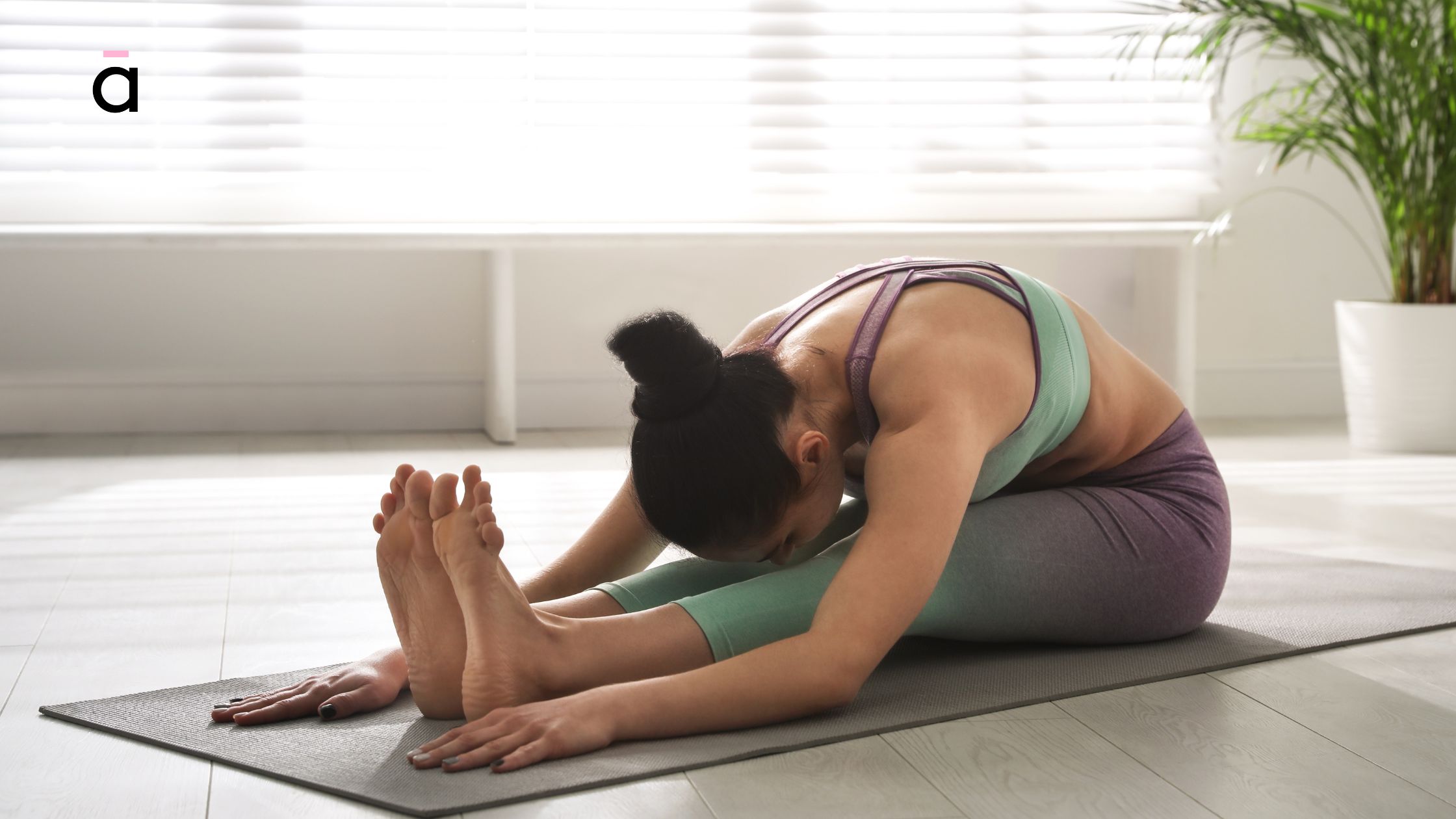
4. Spine Stretch Forward
This seated exercise targets the hamstrings, spine, and deep postural muscles—without needing to be overly flexible.
- How to do it: Sit tall with legs extended in front of you (hip-width apart). Inhale to lengthen the spine, then exhale to reach forward over your legs, drawing your chin toward your chest.
- Benefits: Improves spinal flexibility, stretches the hamstrings and back, and encourages breath-led movement
- Where you’ll see it: In many of ālaya’s online Pilates classes for flexibility and reset
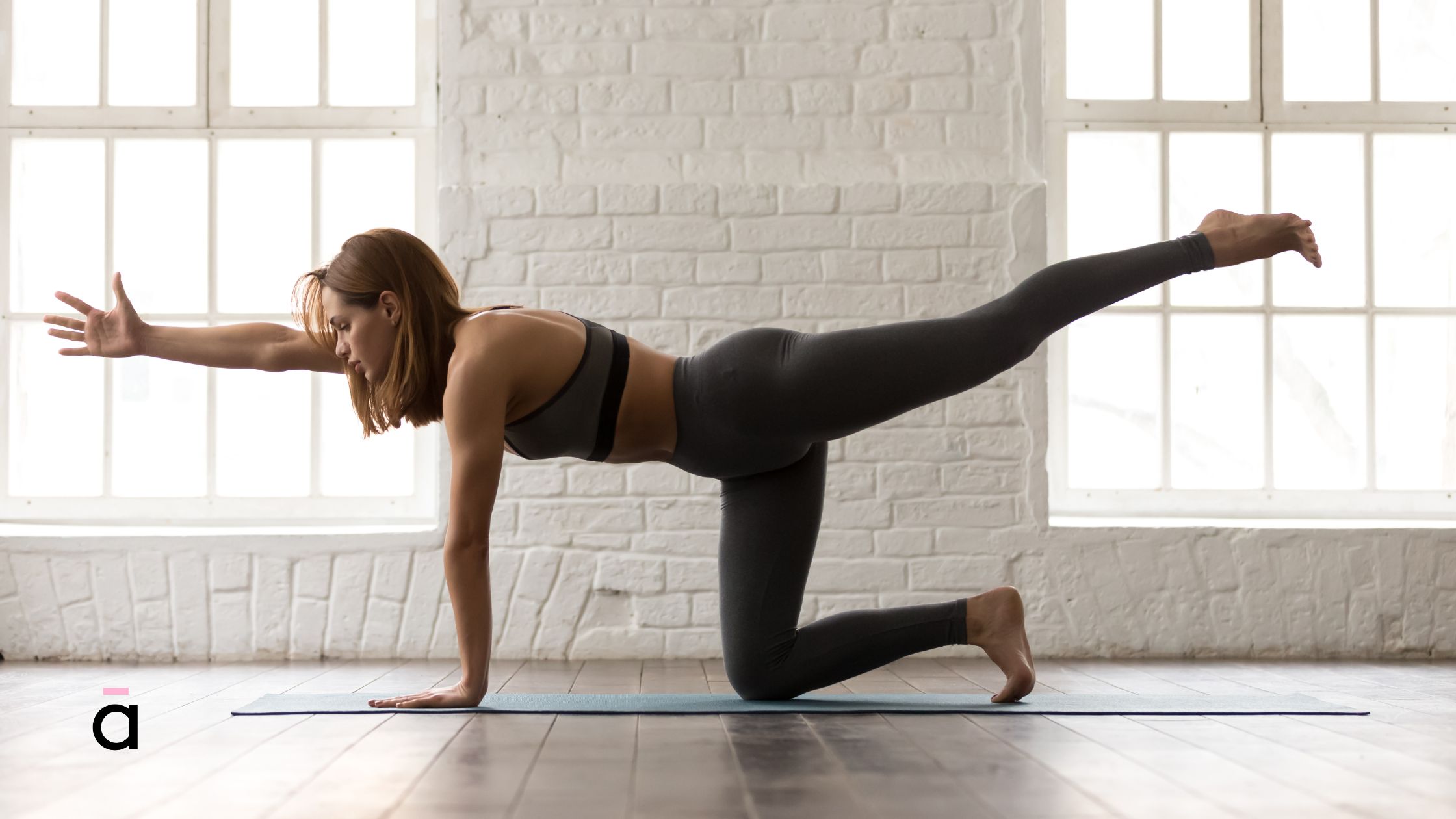
5. Bird Dog (Opposite Arm and Leg Reach)
This classic mat-based move challenges your balance and strengthens your core without needing to stand or roll down. It’s a staple in many beginner-friendly online Pilates classes.
- How to do it: Start on all fours with hands under shoulders and knees under hips. Inhale to prepare. As you exhale, extend your right arm forward and left leg back, keeping your spine long and hips stable. Hold briefly, then return and switch sides.
- Benefits: Builds core stability, strengthens the back and glutes, and improves coordination
- Great addition to: Your online Pilates class or a low-impact strength routine from home
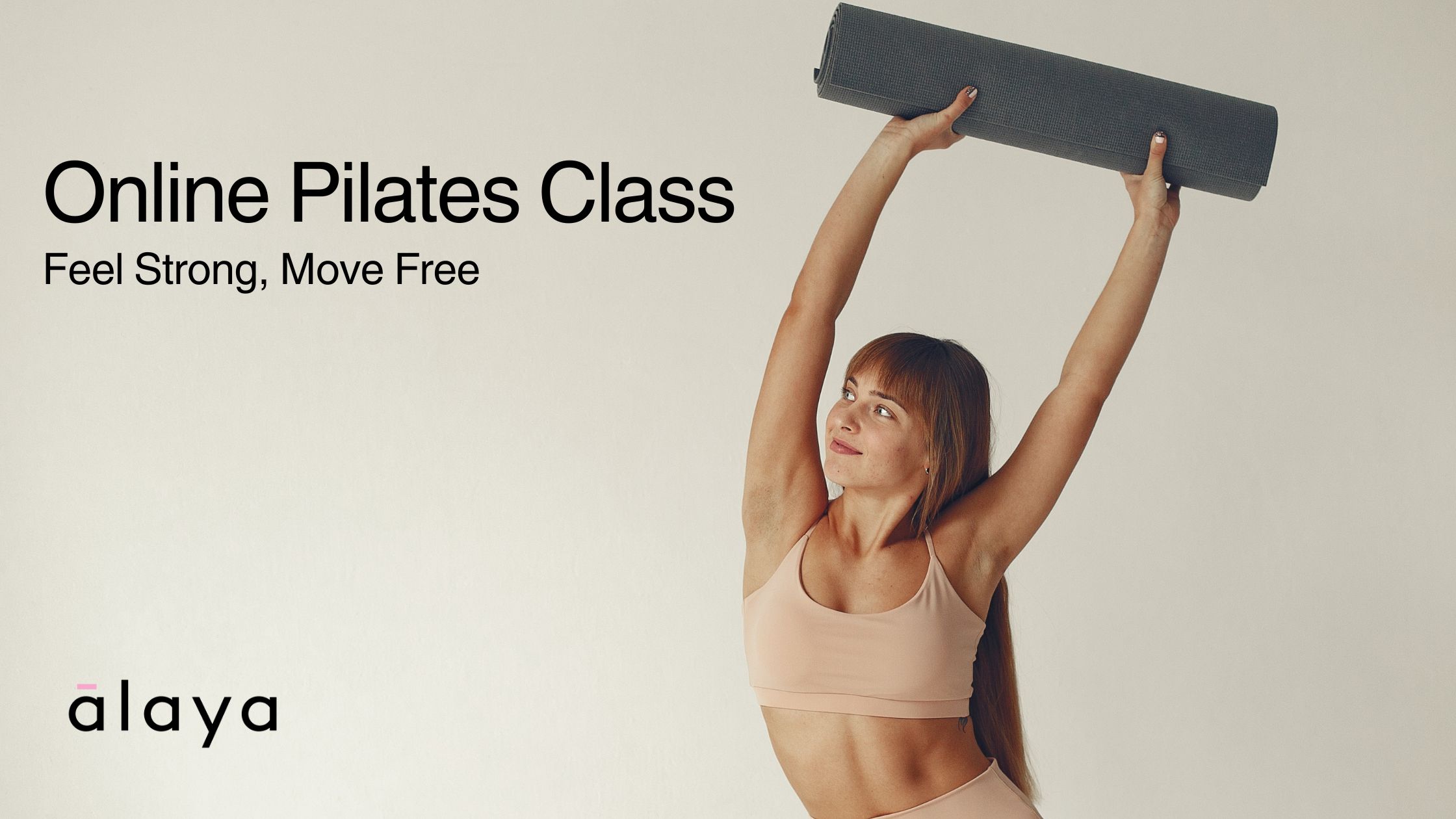
Build a Strong Foundation at Home—with Guidance
You don’t need fancy equipment or hours of time to start. A few poses, 10–20 minutes, and consistent practice can make a world of difference.
You can try those 5 best home pilates workouts for beginners and see how they feel in your body!
At ālaya, our online Pilates classes are designed for real life: short, structured, and beginner-friendly—with sequences that include these foundational poses and build from there. Whether you want strength, calm, or just a moment to reconnect, we’re here to guide you every step of the way.
💻 Explore our Pilates online classes for free
🧘♀️ Try a 10-day free trial of ālaya and see how simple it is to start moving with confidence.
Start Your Free Trial Now!
If you’ve ever wondered what sets Ashtanga yoga apart from other styles, or how to get started whether you’re in Cork or tuning in from home, you’re in the right place. Most people who practise Ashtanga describe it as intense, active, and greatly progressive. This dynamic form of yoga not only helps in building physical strength and flexibility, but helps in improving concentration and brings mental clarity.
In this article, we offer an overview of Ashtanga Yoga including its advantages, and how to access our weekly led Ashtanga sessions either in Cork or online with a free 10-day trial for new members.
What Is Ashtanga Yoga?
Ashtanga Yoga is one of the more traditional approaches to yoga that combines the challenges of different postures along with breathing for a defined sequence. This method creates significant physical heat in the body, as well as producing a purifying sweat that detoxifies muscles and internal organs.
It’s rooted in the teachings of Sri K. Pattabhi Jois, who developed the modern form of the practice in Mysore, India.
Ashtanga has six main sets of poses, called series, and each is a distinct sequence of poses. They are as follows:
- Primary Series (Yoga Chikitsa) – Cleansing and aligning the body
- Intermediate Series – Fortifying the nervous system
- Advanced Series – Highly demanded, flexible and strong postures
All newcomers to Ashtanga usually begin with the Primary Series since it’s the most customisable and can be tailored to different skill levels.
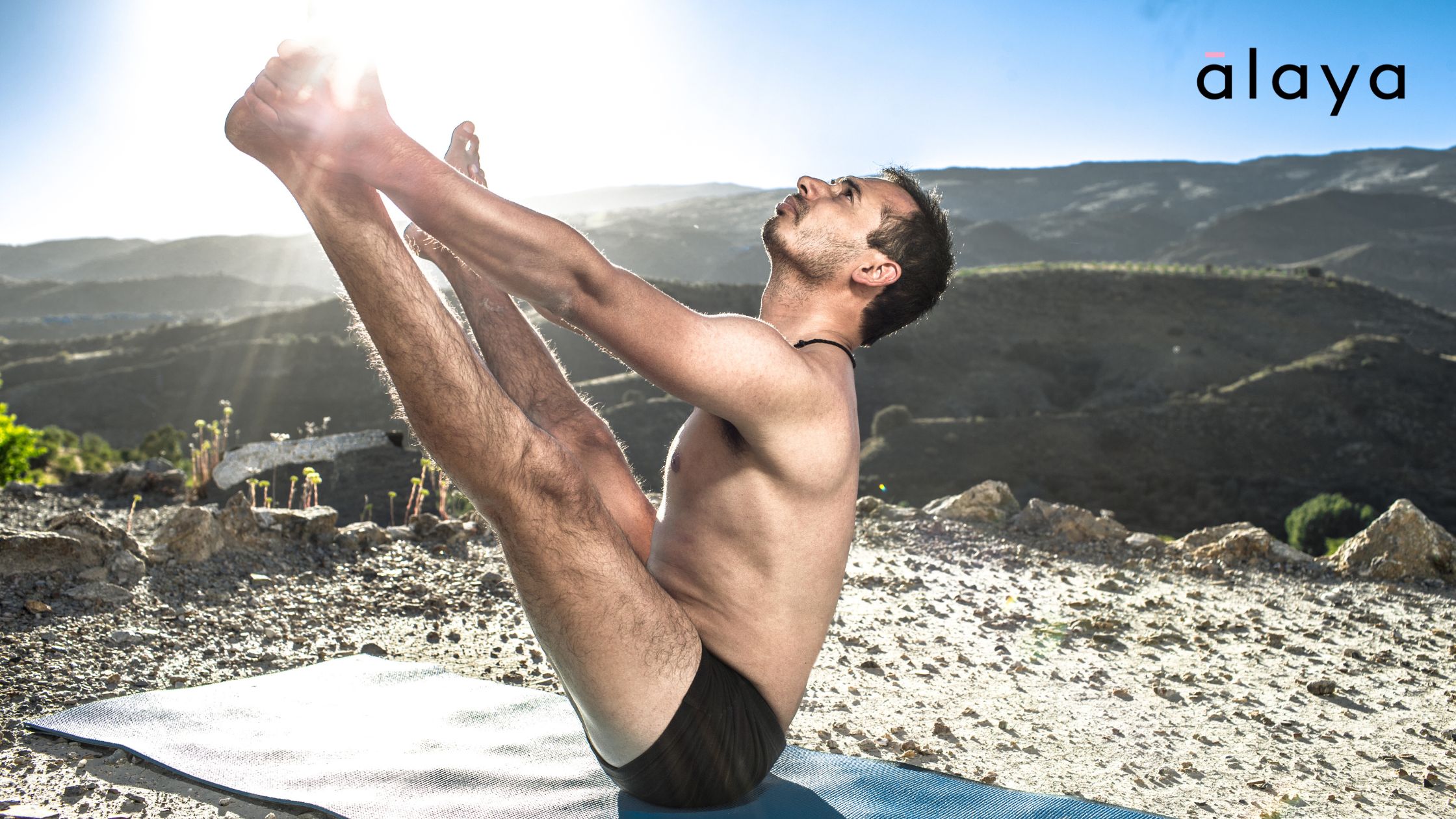
Key Principles of Ashtanga Yoga
- Vinyasa: Breath synchronised with flowing movement
- Ujjayi Breath: Audible, steady breathing that aids in maintaining heat and focus
- Drishti: Concentration gazing point
- Bandhas: Locks of inner energy system within the body which strengthen the body internally and increase resiliency.
They all combine to form a moving meditation which simultaneously challenges the body while calming the mind
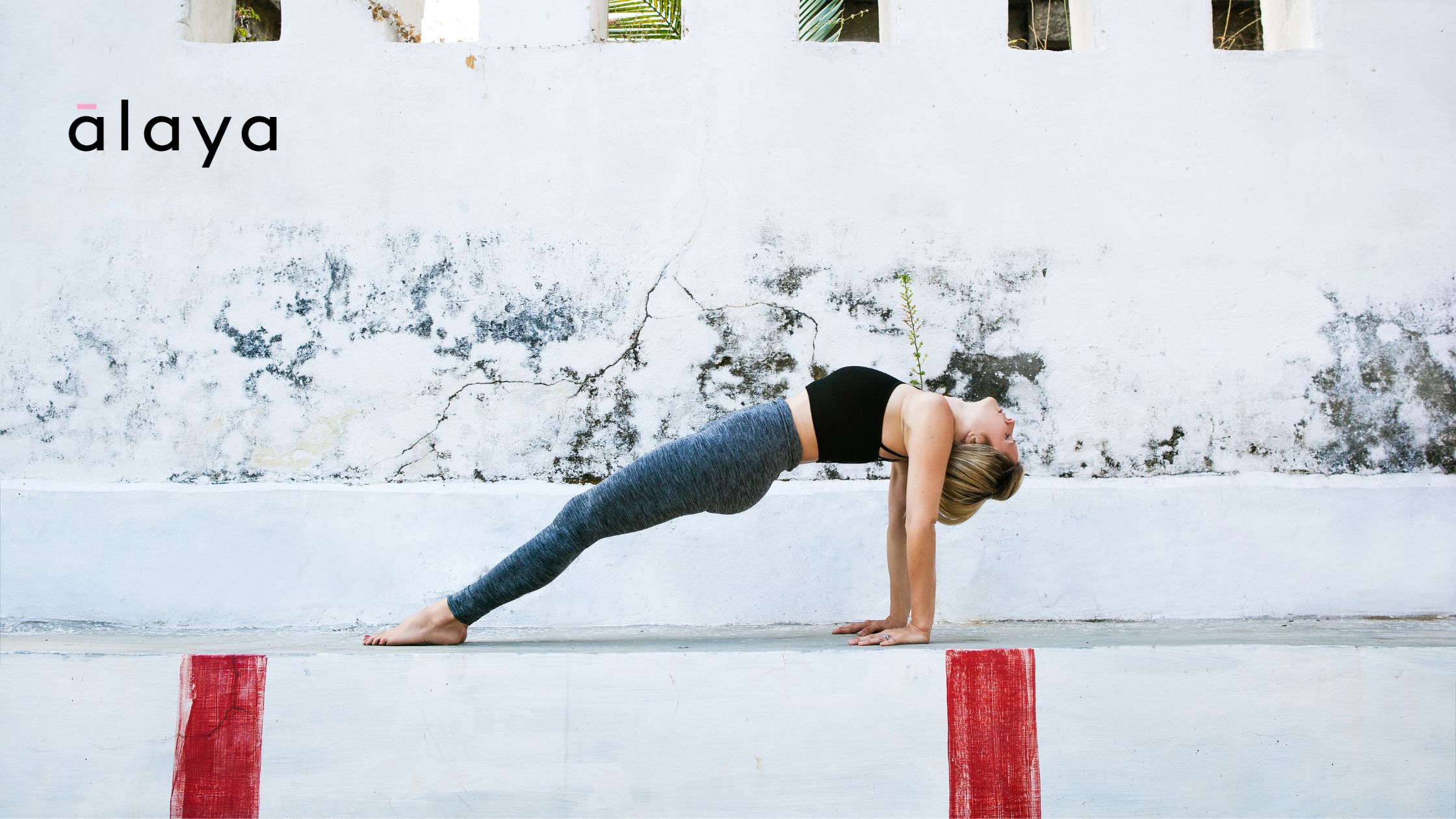
Is Ashtanga Yoga Right for Beginners?
Yes—Ashtanga yoga can be beginner-friendly, especially in a led class environment where the teacher breaks down the poses and transitions. While it’s a physically demanding style, it’s also incredibly rewarding. As you progress week by week, you’ll build endurance, discipline, and deep body awareness.
At our yoga studio in Cork and through our online yoga classes, we offer a 6-week Ashtanga Led Series where our experienced teacher guides you through the Primary Series in a progressive, accessible way.
Join Ashtanga Yoga in Cork or Online
Whether you’re new to Ashtanga or returning to the mat, we’ve created a supportive environment for learning—both in-person in Cork and from the comfort of your own home.
Our Ashtanga Yoga Offerings:
- In Cork Yoga Studio: Weekly led Ashtanga class with posture breakdowns and modifications
- Online: Access from anywhere with our Ashtanga online class, perfect for staying consistent even on busy days
- Free Trial: New to us? Try our online yoga classes free for 10 days—no strings attached
Start your free trial here and explore the practice that’s changed millions of lives.
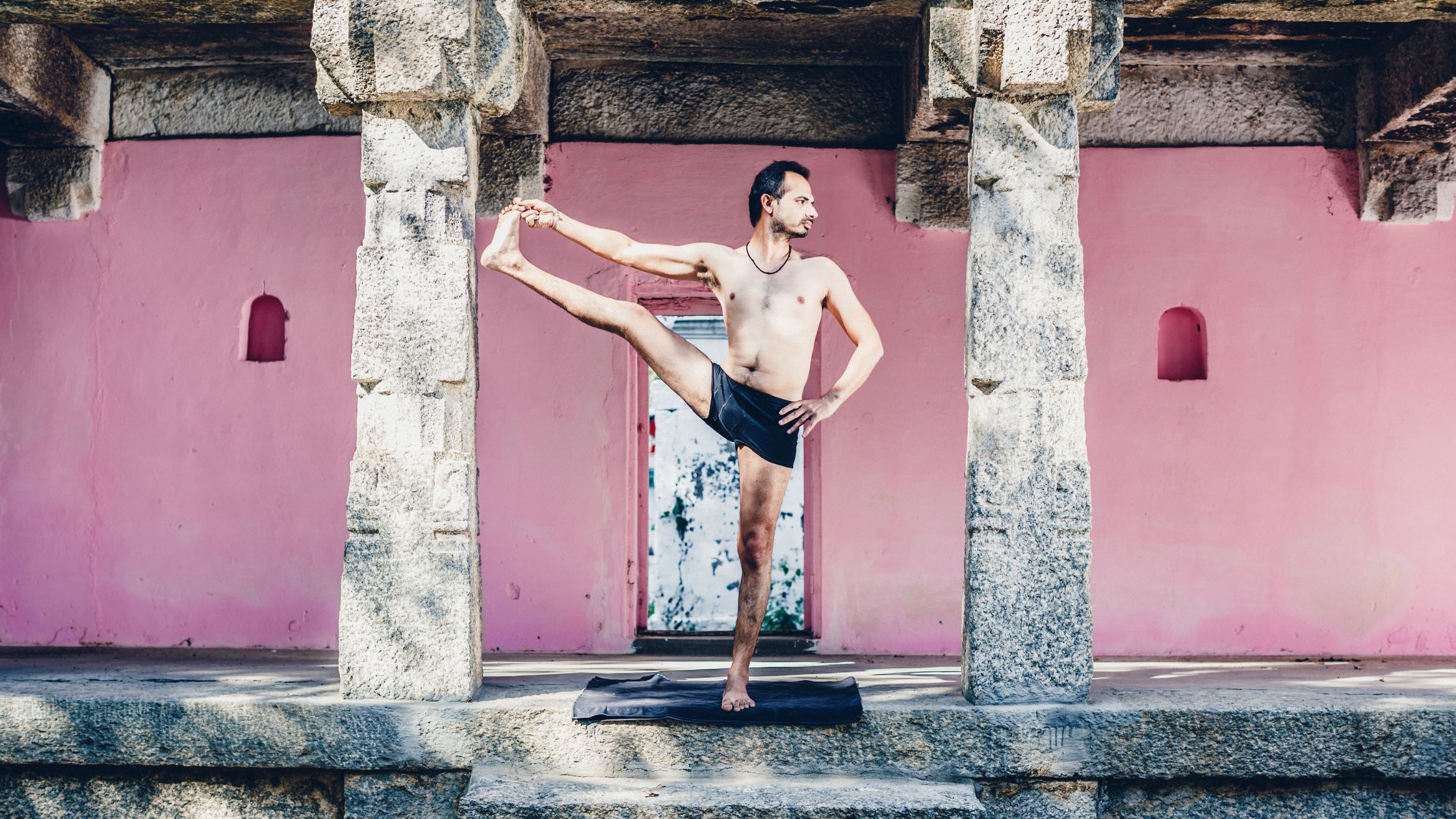
Why People Love This Style of Yoga
Here are just a few of the benefits that draw people to this system:
✅ Builds Strength & Flexibility: It works your full body, especially your core and upper body.
✅ Improves Focus: The breath and movement coordination sharpens mental clarity.
✅ Creates Routine: Repeating the sequence each session develops discipline and structure.
✅ Supports Personal Growth: Each posture becomes a milestone as you deepen your practice.
Many students describe it as a physical and mental anchor—something they return to again and again for clarity and energy.
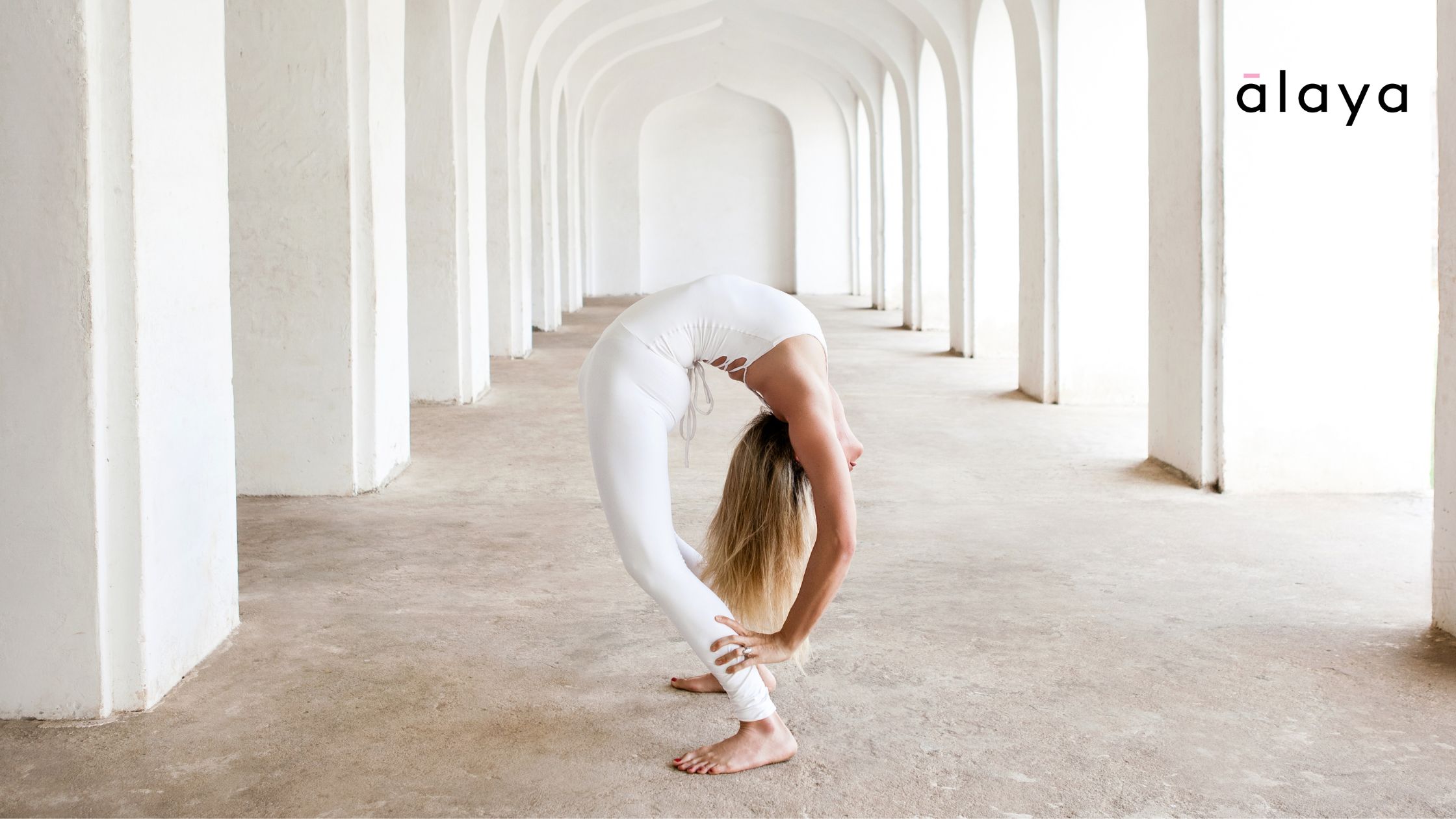
Online Ashtanga Yoga: Is It Effective?
Absolutely. Our Ashtanga yoga online classes are designed with clear guidance, real-time cues, and posture breakdowns that bring the studio experience to your screen. Whether you’re in Cork or across Ireland, our online yoga Cork community offers accountability and inspiration.
You can follow the 6-week Ashtanga breakdown with the same structure and support as in-person classes. Perfect for those who can’t attend a physical class but still want to experience the depth of this lineage.
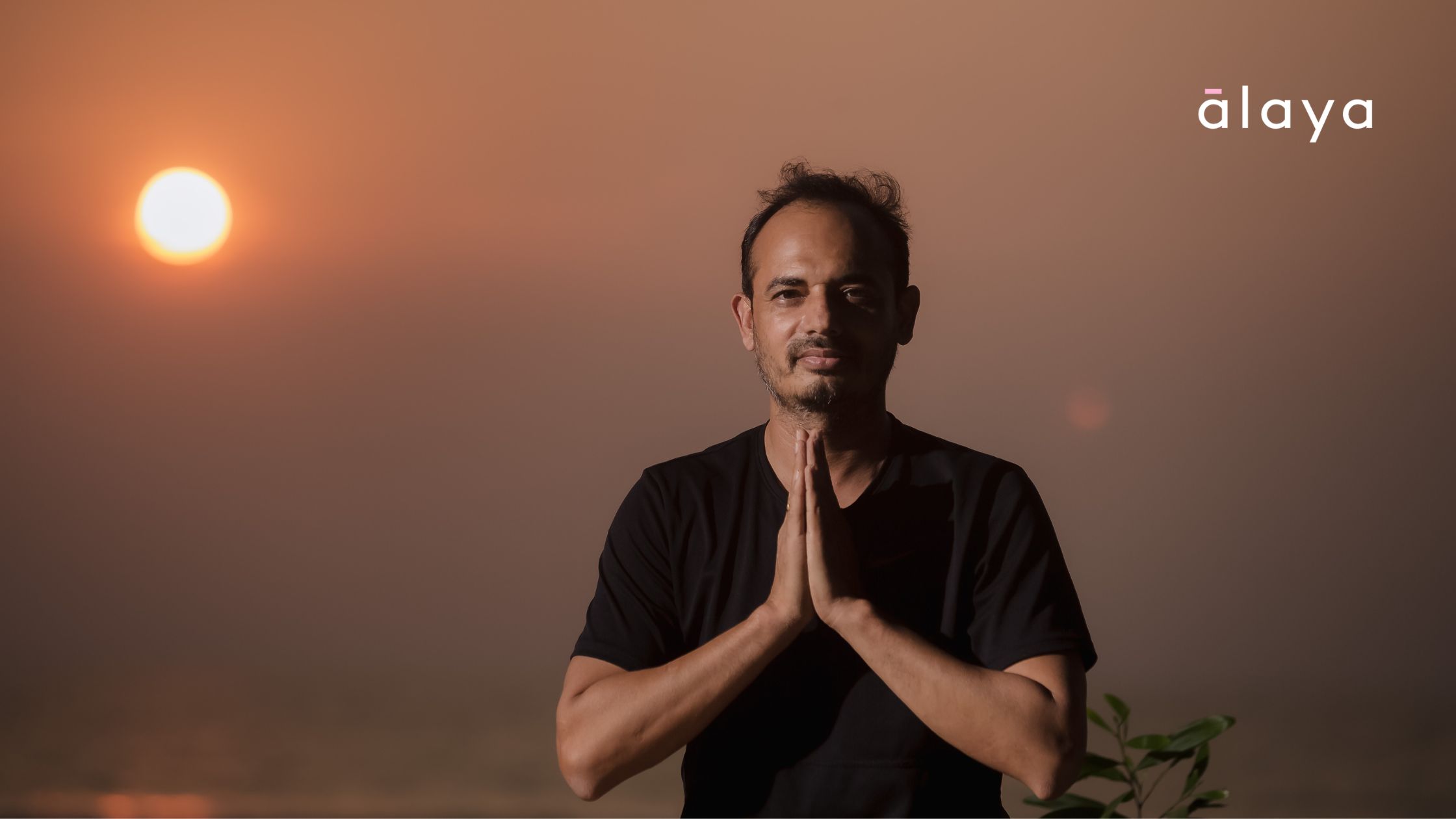
Final Thoughts: Your Journey Starts Here
Ashtanga yoga is more than just a workout—it’s a lifelong journey of breath, movement, and presence. Whether you’re looking to build physical strength, calm a busy mind, or dive deeper into yoga philosophy, this style offers a holistic path.
And you don’t have to do it alone. Join our vibrant community in Cork or online, and let us support you every step of the way.
🎉 New to us? Claim your 10-day free trial now and join our weekly led Ashtanga yoga online classses.
With so many of us working from home, or around the clock, carving out time to focus on movement can feel difficult. That’s where online Pilates class come in — they provide convenience, structure, and professional instruction directly from your own home.
If Pilates is something you’ve been thinking of starting but you can’t quite work out whether online classes are worth it for you and actually offer all the benefits of IRL, here are five reasons why you should consider joining a home-based Pilates class that could persuade you to roll out that mat.
1. Online Pilates: Flexibility That Fits Your Lifestyle
One of the most evident benefits of an online Pilates class is flexibility in scheduling. Whether you are a morning person, a lunch-break mover, or you like evenings quiet, online classes enable you to pick when you practice.
Live classes typically include playback functions, so you don’t have to disrupt your day to get the full benefit. On-demand libraries (like ours at ālaya) even let you practise at your own convenience—with choices from 10 minutes to 60.
No driving, no time lost—just movement, on your schedule.

2. Privacy and Comfort in Your Own Space
Practicing Pilates at home allows you the freedom to concentrate. Without being disturbed or compared with others, it also makes it much easier to concentrate on your movements. For many beginners, this self-containment is a cushion that helps take away any fear or consciousness about trying something new in the studio with a group of people.
You can wear whatever you want, rest when you need to, and adjust the movements at your own pace — with no pressure to perform on someone else’s timed schedule. If you’re coming back to exercise after injury or time off, for example, this home-based atmosphere can feel particularly nurturing.
3. Just as Effective as In-Studio Pilates
There’s a common myth that online movement classes aren’t “real workouts”—but this couldn’t be further from the truth. Online Pilates classes led by experienced teachers still focus on the same principles: breath, control, alignment, and core activation.
In fact, many of our students have told us that home practices give them even more body awareness because they are working with verbal cues and tuning into subtle sensations, not relying on mirrors or visual stimuli.
At ālaya, our online Pilates classes are designed around sequences that have a specific goal. They seek to improve posture, core strength, flexibility and overall movement capabilities–just like any in-person class.
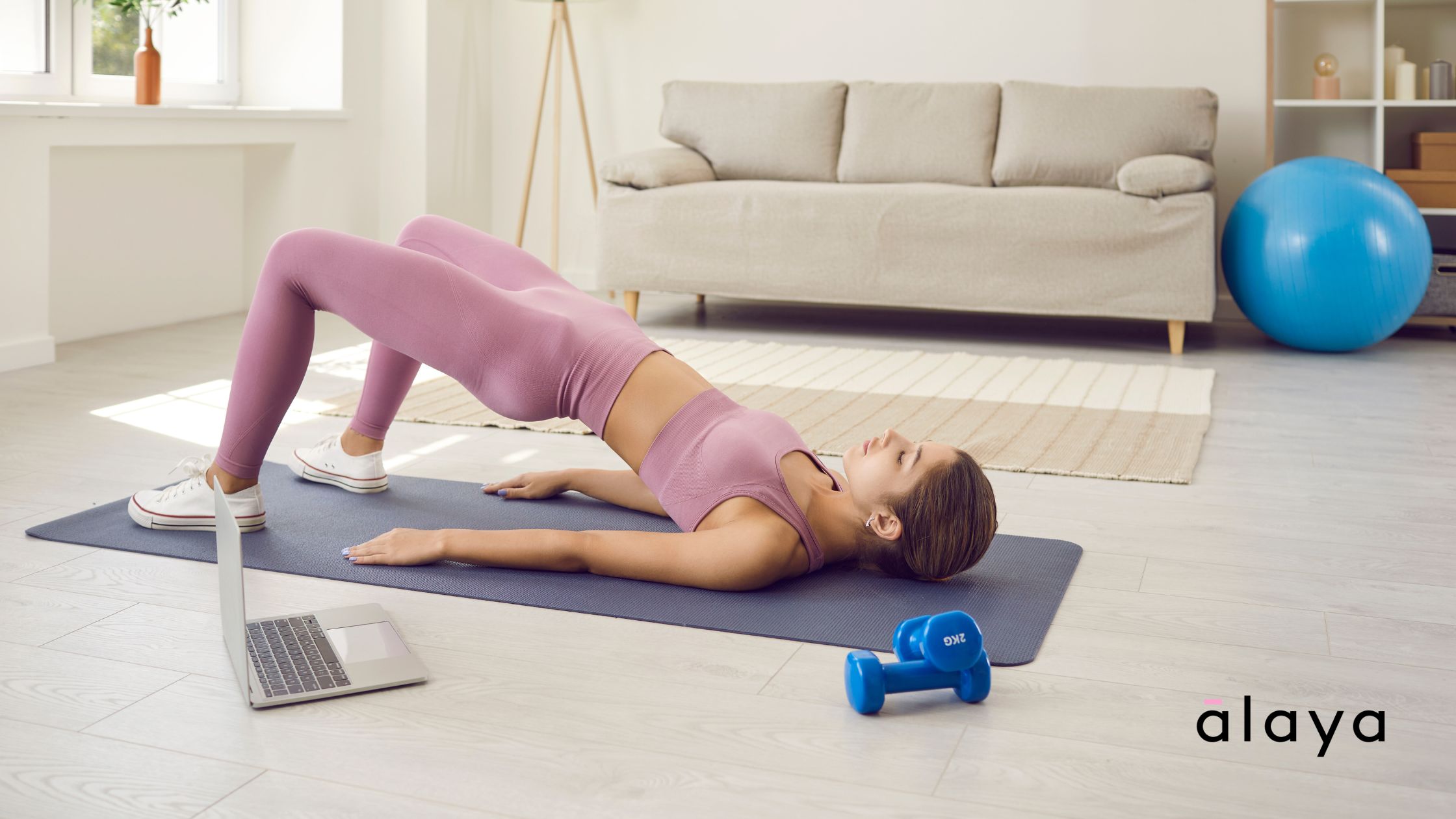
4. Safe, Progressive Guidance from Professional Teachers
Not all online workouts are created equal. That’s why it’s important to choose a platform that offers qualified instructors and structured programmes that meet you where you are.
With the right teacher, you’ll receive clear, safe guidance—especially helpful if you’re new to Pilates or working with limitations. Many online classes include modifications and progressions, allowing you to build strength over time with confidence.
Our online platform includes not just live classes, but challenges and journeys—structured paths designed by our senior team to support your ongoing progress.
5. A Sustainable Way to Prioritise Wellness
It’s one thing to start a movement routine—it’s another to maintain it. The accessibility and consistency of online Pilates classes make them an ideal foundation for long-term wellness.
Whether you’re looking to manage stress, improve mobility, or simply move more regularly, online classes remove many of the typical barriers: time, travel, intimidation, and scheduling conflicts.
When movement feels more doable, it becomes more sustainable. And with class styles for every mood, from gentle flows to energising sequences, it’s easy to choose what your body needs, day by day.
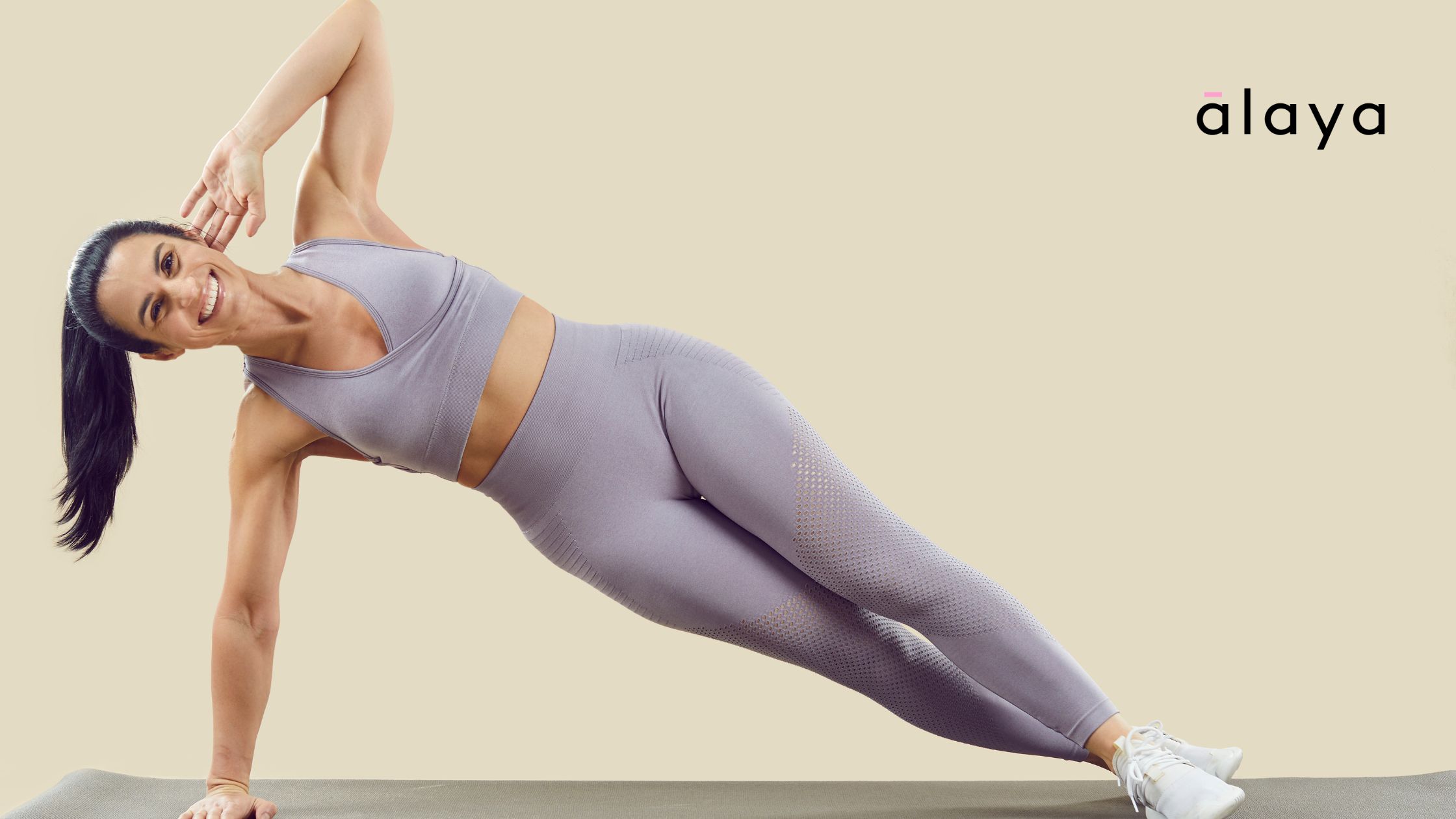
Ready to Start Your Online Pilates Journey?
At ālaya, our online Pilates classes are part of a holistic digital platform built for real lives. You can choose from short on-demand sessions, live weekly challenges, and restorative movement journeys—all led by experienced, compassionate teachers.
ālaya is part of Himalaya Yoga Valley in Cork—a trusted yoga and Pilates studios with over a decade of experience in Ireland.
Try our 10-day free trial and see how online Pilates from home can support your strength, focus, and daily rhythm.
Wherever you are, your mat is just the beginning.
